
1
The Cleantech
Revolution
It’s exponential, disruptive, and
now
Kingsmill Bond,
Sam Butler-Sloss,
Daan Walter
June 2024

2
Executive Summary
• So exponential growth of cleantech will continue. By 2030,
we will be installing 1,000 GW of solar a year and selling 6,000
GWh of batteries a year, making possible the COP goal of tripling
renewable capacity. Electrification rates will double to 0.5% a
year, and efficiency gains will increase to over 3% a year.
• The fossil fuel system faces inexorable decline. Renewables
will drive fossil fuels out of electricity generation, electrification
will push fossils out of final energy, and efficiency will reduce
fossil waste. Some 75% of fossil fuel demand is exposed to
rapidly growing cleantech alternatives, so stranded assets are
inevitable.
• Wider implications of change. The goals of the Paris
Agreement are feasible, and the Global South will continue to
leapfrog to cleantech.
• This is the pivot decade. When cleantech costs become
irresistible, the renewable capacity is built, fossil fuel demand
reaches the end of its plateau, and the transition is priced into
markets.
• Now is the time to act. We need to build out renewables and
electrify energy use, make good bets on small modular
technologies, and harvest the enormous efficiency opportunity.
The direction of change is inevitable, but the speed is up to us.
• The energy system is being transformed by the exponential forces of
renewables, electrification, and efficiency.
• The orthodox view of slow change is wrong. New clean technologies
beat old fossil commodities because clean technologies' costs fall over
time on learning curves, they are universal, and they grow quickly.
• Exponential change has been remarkable in the past decade.
Cleantech costs have fallen by up to 80 percent, while investment is up
nearly tenfold and solar generation has risen twelvefold. Electricity has
become the largest source of useful energy, and the deep force of
efficiency has reduced energy demand by a fifth.
• Change is led by China. Half the growth in cleantech is from China, but
exponential growth is also happening in the OECD and across the Global
South as Asia electrifies.
• Red flags across the fossil fuel system. New fossil electricity capacity
peaked in 2010, oil and gas capex in 2014, and internal combustion
engine (ICE) car sales in 2017. Fossil demand peaked for industry in 2014,
for buildings in 2018, most likely for electricity in 2023, and will shortly
peak in transport.
• The drivers of growth are more powerful than the barriers. Falling
cleantech costs, the energy security of eternal renewables, Chinese
leadership, and a race to the top will continue to overwhelm a fragile
fossil fuel system which wastes two-thirds of its primary energy and fails
to pay for its externality costs.

4
4
Introduction
• There are two main perspectives on the energy transition: the old incumbent view
of business-as-usual; and the new insurgent view of exponential change.
• At heart this is the longstanding battle of commodities versus technologies. Design
and technologies beat commodities because they enjoy learning curves and are
limitless. So costs fall over time, and growth is exponential.
• New energy comes from manufactured, modular, scalable, clean technologies; old
energy is from centralized, heavy, dirty commodities.
• Old energy forecasting has failed in the face of the new energy reality. Linear
forecasts constrained by barriers to growth have consistently been overwhelmed
by exponential change.
• There are three key levers in the energy transition: Renewables; Electrification; and
Efficiency.
Index
1
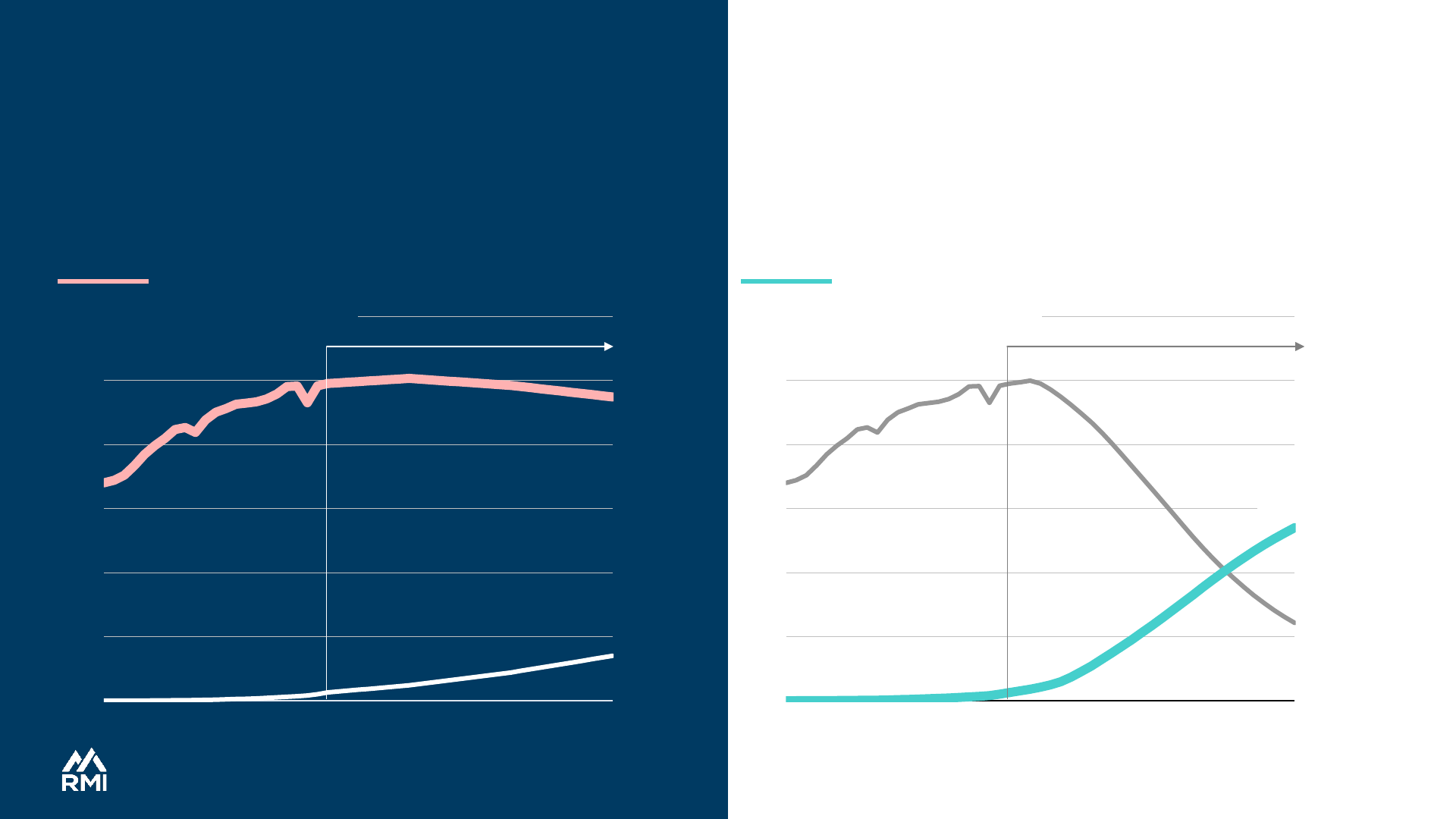
55
2000 2010 2020 2030 2040 2050
0
100
200
300
400
500
600
2000 2010 2020 2030 2040 2050
0
100
200
300
400
500
600
The old commodities narrative of business-as-usual:
reducing fossil fuel demand will be slow, expensive, and painful
The two visions of the
energy future
Source: Exxon Mobil Global Outlook 2023.
The new technology narrative of exponential and beneficial
change: a shift to a cheaper, faster, and distributed energy system
The old guard’s energy outlook
The new technology insurgent’s energy outlook
EJ primary energy demand EJ primary energy demand
Solar and wind
Fossil fuels
Solar and wind
Fossil fuels
Source: Rystad Energy 1.6°C Scenario.
OutlookOutlook
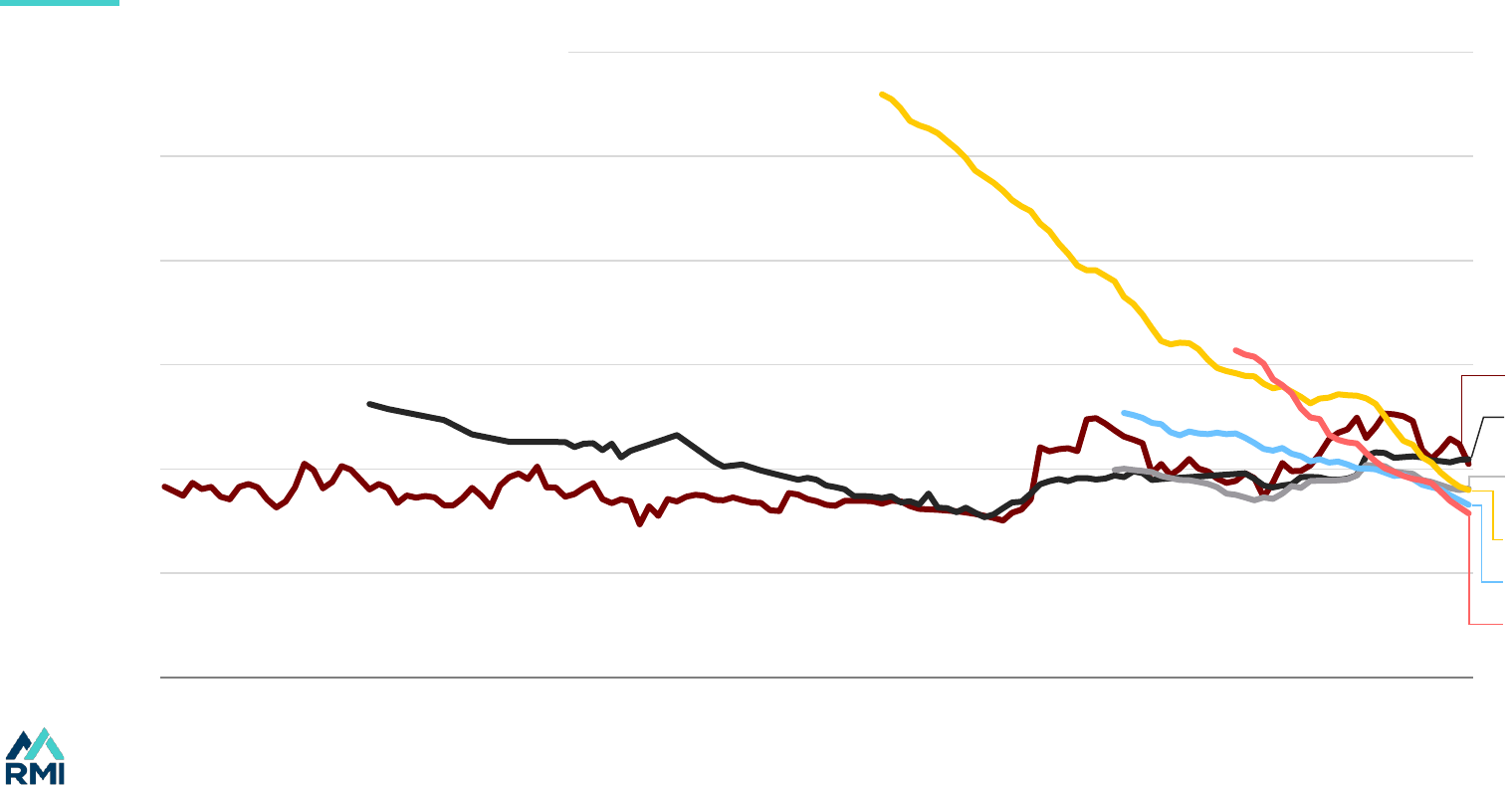
6
Source: Way et al. 2022. Individual fossil fuel technologies of course do have learning curves; but because of depletion and cartels, fossil fuel prices have not shown structural decline over time.
1
10
100
1,000
10,000
100,000
1,000,000
1880 1900 1920 1940 1960 1980 2000 2020
Useful energy costs, $/MWh
Oil
Coal (electricity)
Natural gas
(electricity)
Wind
Solar
Batteries
Historical costs of energy sources
Manufactured technologies (e.g., solar and wind) enjoy cost learning curves; (fossil) commodities don’t
Technologies beat commodities on costs
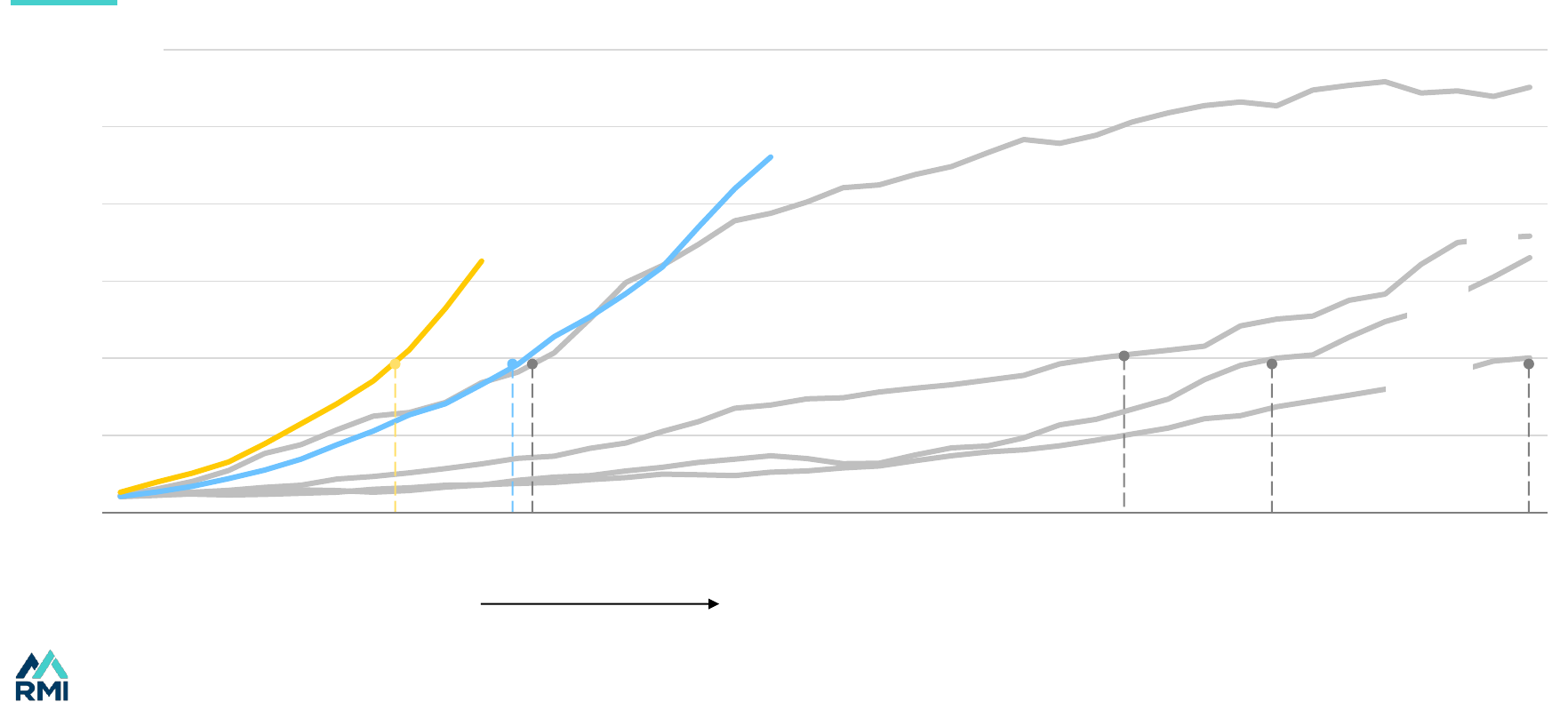
7
Manufactured technologies grow fast; commodities grow slowly
Technologies beat commodities on speed
Source: Ember Global Electricity Review 2024; Wind and solar generation data from Ember annual electricity data, nuclear, gas, coal and hydro generation data from Pinto et al. (2023). This graphic
is inspired by a chart from Shell featured in Nat Bullard’s deck. In 2024, nuclear has a 10–15 year lead time.
0
500
1,000
1,500
2,000
2,500
3,000
0 5 10 15 20 25 30 35
8 years
(to 2021)
12 years
(2017)
12 years
(1983)
28 years
(1981)
32 years
(1957)
39 years
(1967)
Years since generating 100 TWh
TWh
Nuclear
Gas
Coal
Hydro
Solar
Wind
Electricity generation after reaching 100 TWh

88
New energy is fundamentally different to old energy
1 Sir Nicholas Stern, “The greatest market failure the world has seen.”
THE AGE OF CARBON THE AGE OF RENEWABLES
Finite Eternal
Fiery, heavy molecules Obedient, light electrons
Geographically concentrated Available everywhere
Wasteful Efficient
Continuous material flow Circular
Trillions of dollars of annual rents to oligarchs No superprofits
Malthusian commodity-based system Schumpeterian technology-based system
Concentrates power Localizes and distributes power
Produced the greatest externality in history
1
100 times lower impact on nature
Kills millions from air pollution Saves millions from air pollution
Analogue Digital
Source: RMI.
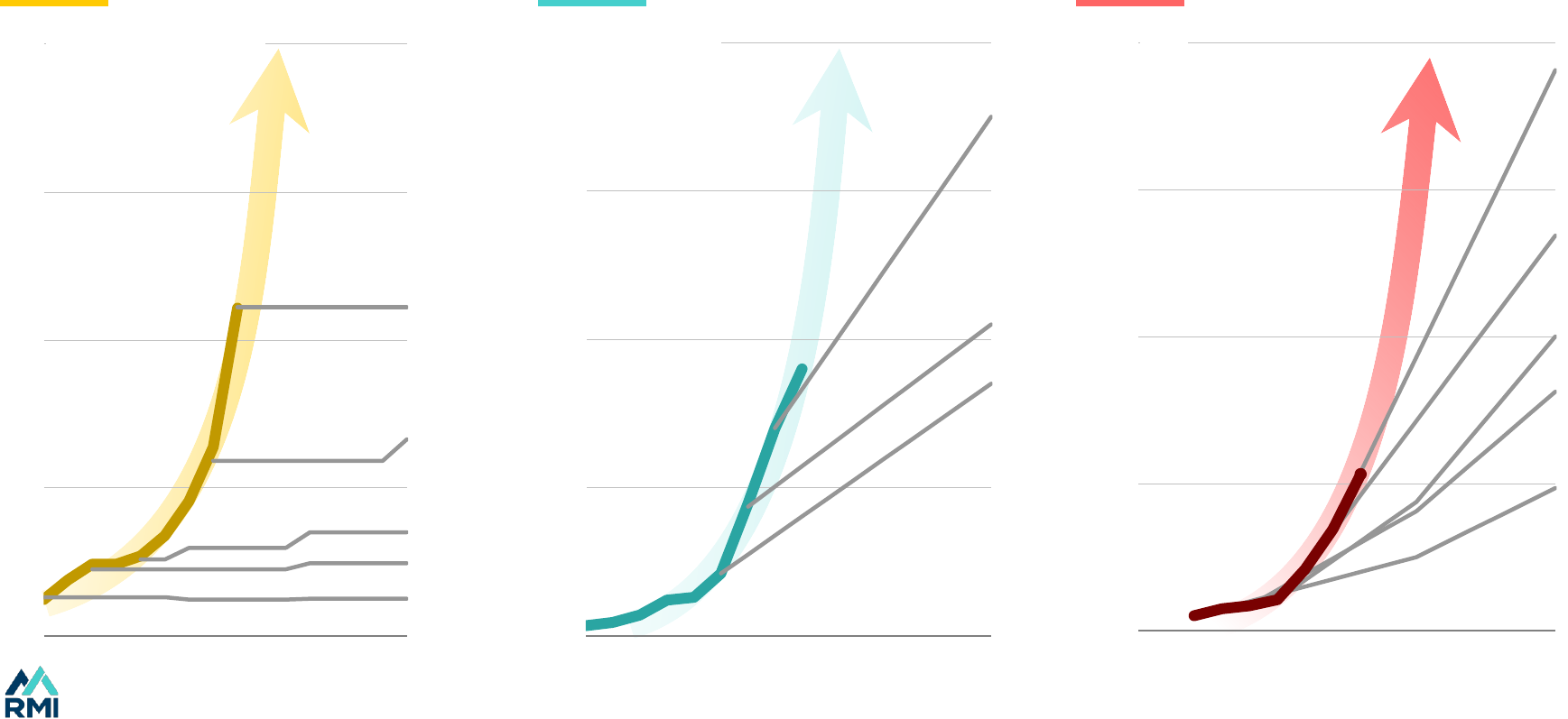
9
S-curve
trend
Actual
Actual
Actual
Forecasts
S-curve
trend
S-curve
trend
Forecasts
Battery sales
Source: BNEF (solar and battery actuals), IEA STEPS for WEO forecasts , RMI annotation.
New solar additions EV share of sales
Forecasts
Even neutral actors modeled in linear terms. But change has been exponential
Incumbents have underestimated the speed of change
2015 2020 2025 2030
0
200
400
600
800
WEO 2016
WEO 2018
WEO 2020
WEO 2022
WEO2023
GW of annual additions
2015 2020 2025 2030
0%
10%
20%
30%
40%
of car sales EV
2021
2022
2023
2015
2020
2025
2030
0
800
1,600
2,400
3,200
GWh
2021
2022
2023
2019
2018
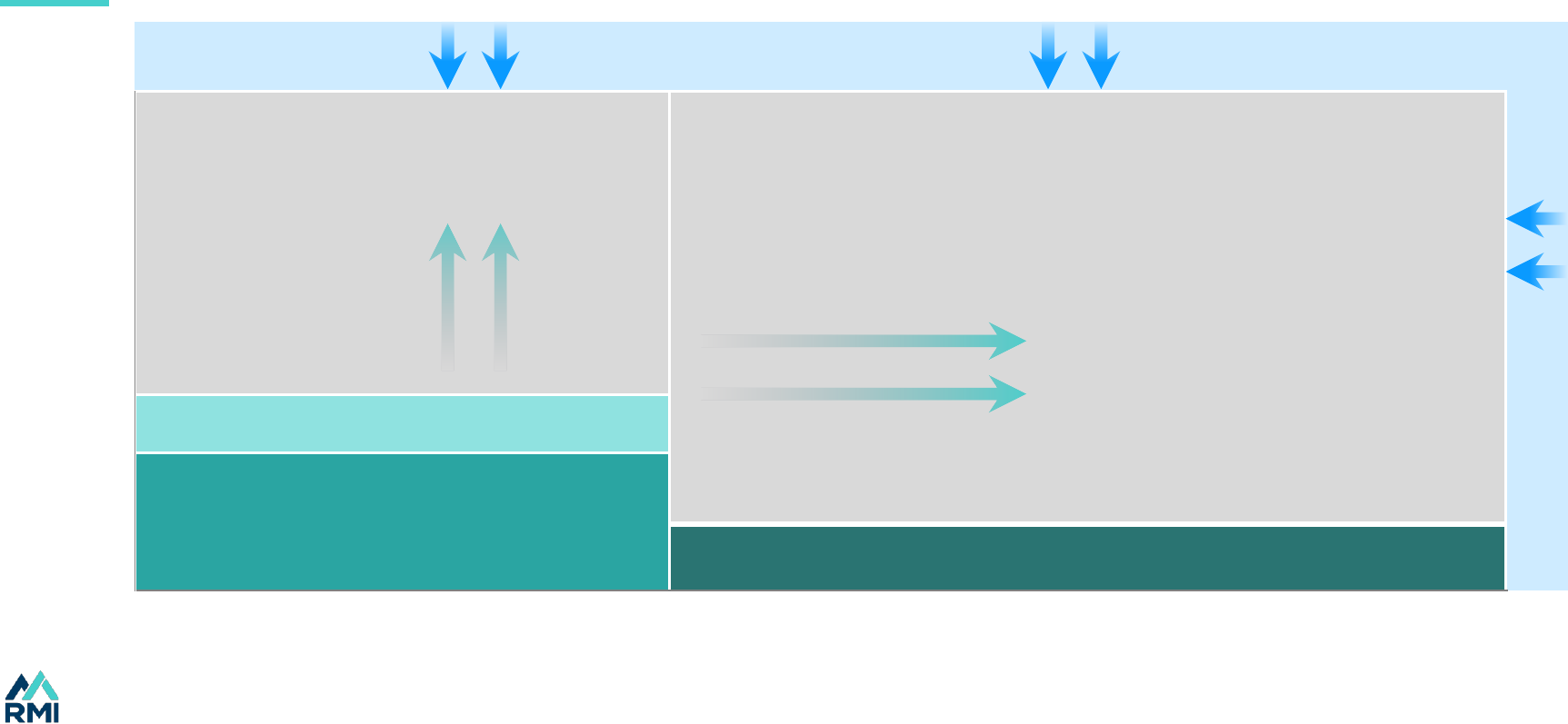
10
There are three big levers of change
Source: IEA WEO 2023. The primary energy split is the amount of primary energy going to electricity (electrons) or other (molecules).
Global energy demand in 2022
80%
60%
40%
100%
20%
0%
Electrons Molecules
Share of primary energy
Fossil fuels
Share of final energy
Fossil fuels
Renewables
Electrification
Other clean
Solar and wind
Biomass
1
2
Efficiency
3
Renewables, electrification, and efficiency are rapidly transforming the energy system

11
11
Index
Exponential growth so far
• There is clear evidence three drivers of changes are growing exponentially:
renewables, electrification, and efficiency.
• Cleantech costs fall by around 20% for every doubling in deployment and have
fallen by up to 80% in a decade.
• Capital is pouring into cleantech. Getting to the first trillion of annual investment
took decades; the second trillion will take only 4 years.
• Solar generation is doubling every 2-3 years and battery storage every year. Solar
is poised to deploy the largest amount of generation capacity, and batteries are
about to overtake pumped hydro.
• The supply chain is already in place for enough solar and batteries for net zero.
• Electricity supply has been growing inexorably for a century and is now the largest
supplier of useful energy.
• Efficiency is the deep force of the energy transition, saving one fifth of total demand
over the last decade.
• China leads the exponential story and is poised to be the first major electrostate.
Exponential change is happening in the OECD and across the Global South as Asia
leapfrogs the OECD in electrification.
2
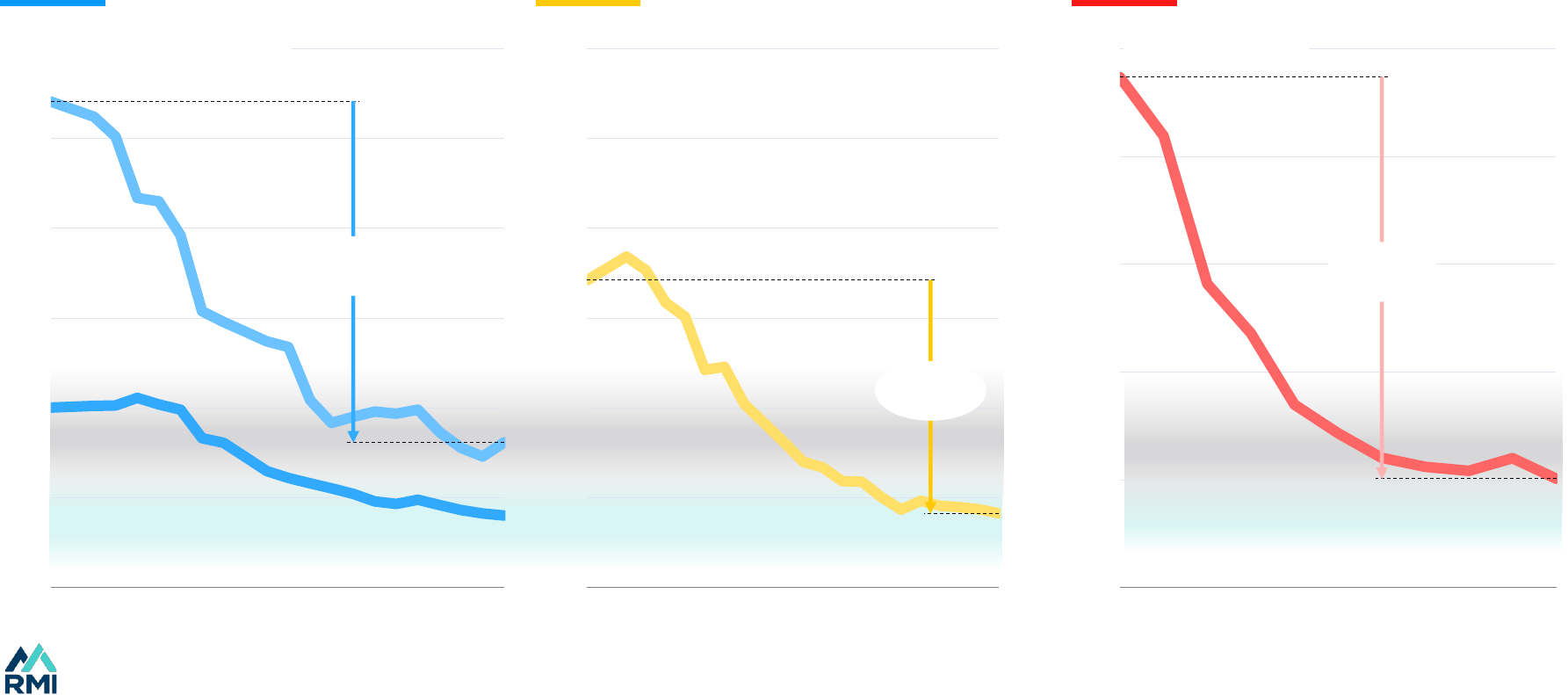
12
2013 2023
-76%
0
50
100
150
200
250
300
2013 2023
-70%
0
100
200
300
400
500
2013 2023
-79%
ICE car sticker price break-even
ICE car TCO
break-even
Fossil fuel range (marginal cost)
Fossil fuel range (LCOE)
Clean technology costs fall by around 20% for every doubling of deployment — Wright’s Law
Cleantech costs have fallen rapidly
Source: BNEF, RMI ranges.
$/kWh (2022 real)$/MWh LCOE (2022 real)
Offshore
Onshore
Wind Solar Battery costs
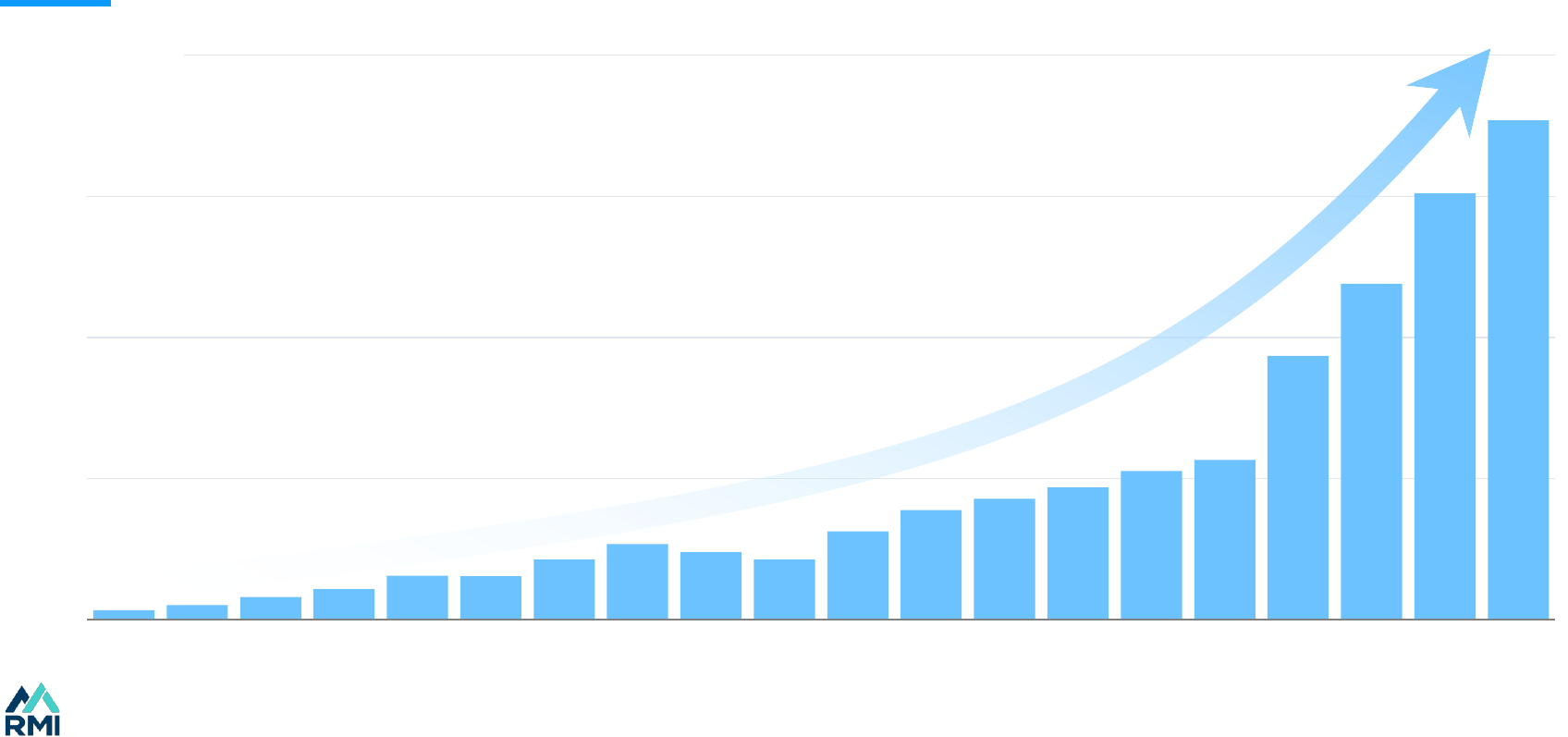
13
The first cleantech trillion took decades; the second trillion will happen in four years
Capital has poured into cleantech
Source: BNEF.
0
500
1,000
1,500
2,000
2005 2010 2015 2020 2023
$ billion
Cleantech investment
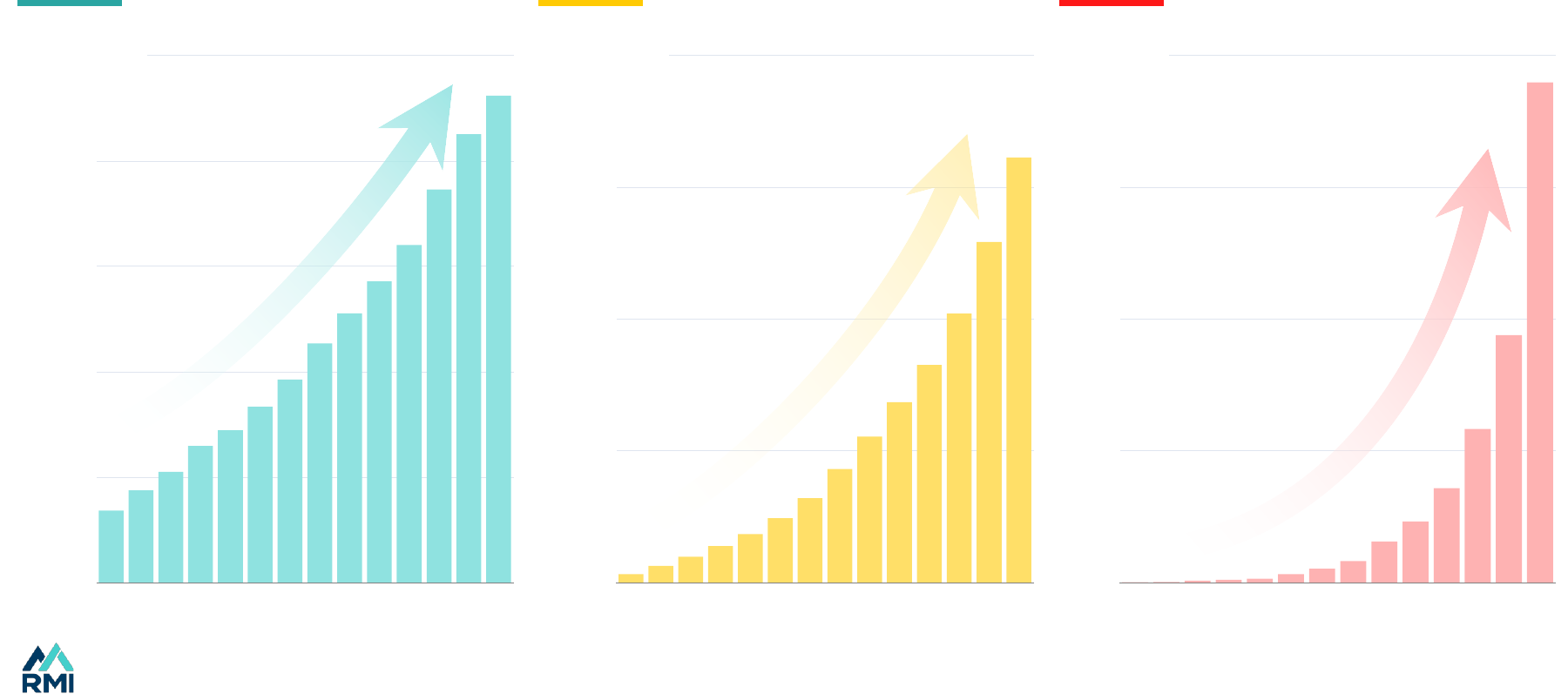
14
0
500
1,000
1,500
2,000
2010 2015 2020
28%
Global solar generation has been doubling every 2–3 years, and battery storage capacity every year
Leading to exponential growth in renewables
Source: IEA, BNEF; Note: CAGR is the compound annual growth rate between 2013 and 2023.
0
50
100
150
200
2010 2015 2020
Wind generation Solar generation Battery storage
0
500
1,000
1,500
2,000
2,500
2010 2015 2020
TWh TWh GWh
CAGR
68%
CAGR
14%
CAGR
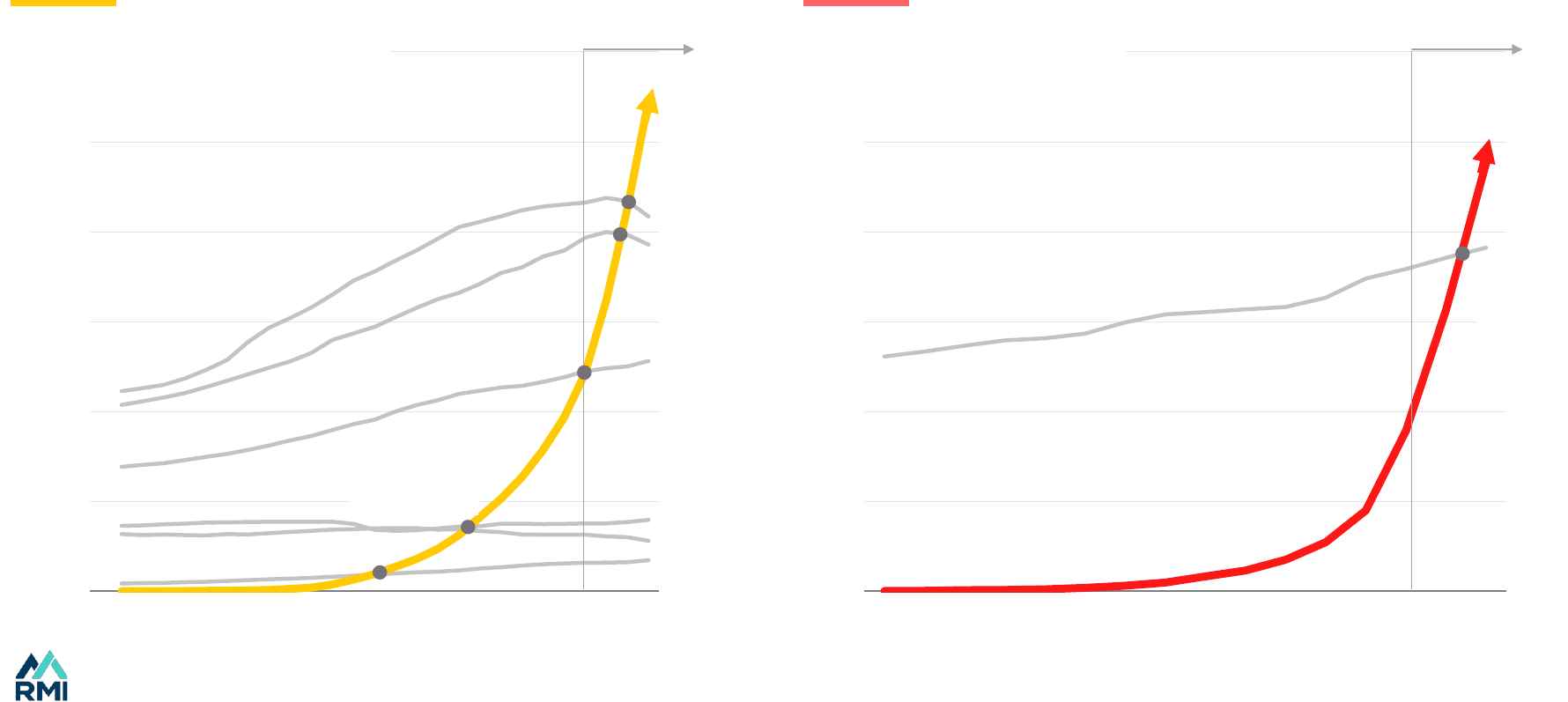
15
Solar
0
50
100
150
200
250
300
2010 2012 2014 2016 2018 2020 2022 2024
0
500
1,000
1,500
2,000
2,500
3,000
2000 2005 2010 2015 2020 2025
Expected
Solar will shortly overtake every other type of capacity, and battery storage will leapfrog pumped hydro
Solar and batteries are taking over
Source: BNEF, IEA.
Solar
GW total storage capacity
Battery
storage
Bioenergy
Nuclear, Oil
Hydro
Coal
Gas
GW total generation capacity
Pumped
hydro
storage
Batteries
Expected
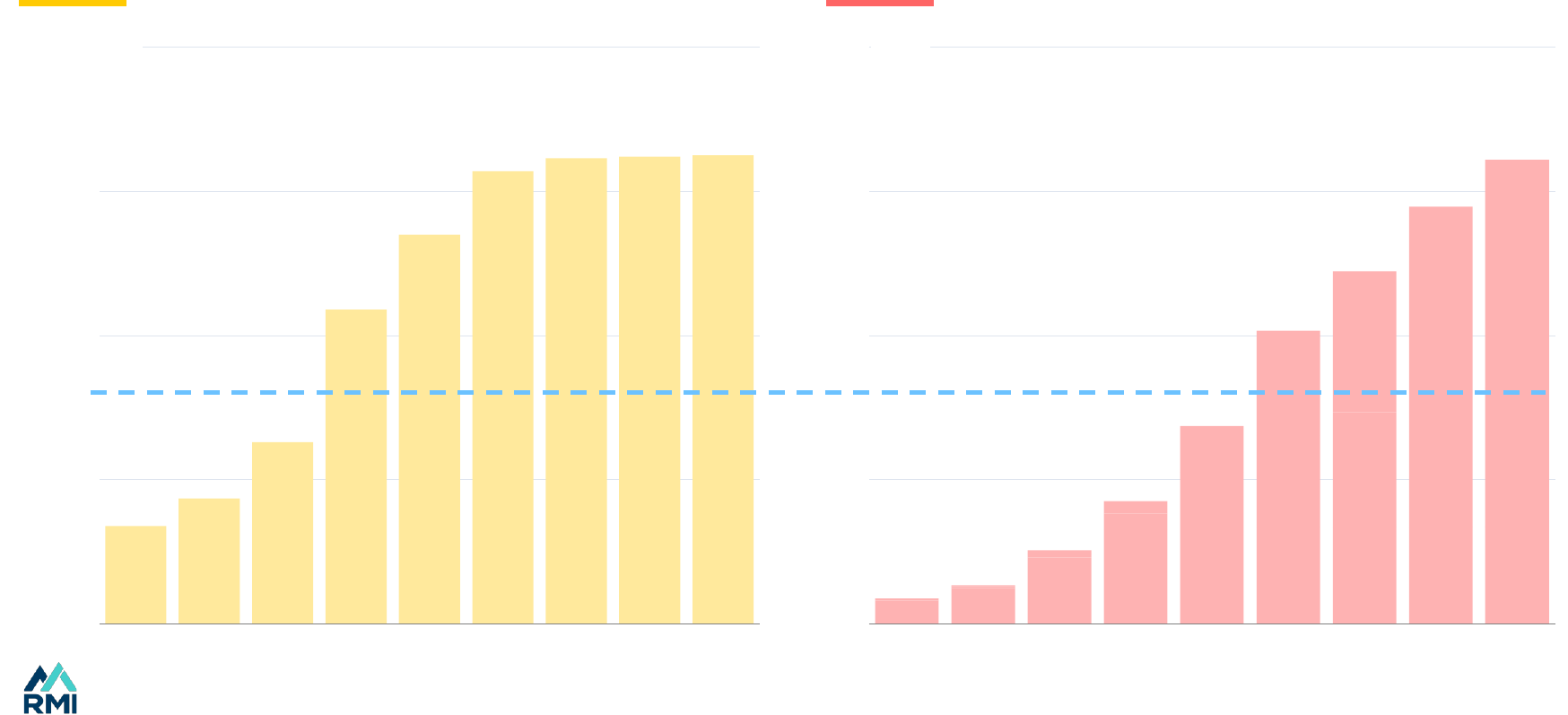
16
Source: IEA, BNEF.
0
4
8
12
16
2020 2022 2024 2026 2028
0
500
1,000
1,500
2,000
2020 2022 2024 2026 2028
Solar module manufacturing capacity Battery manufacturing capacity
TWh
GW
Needed by 2030 in net-zero scenario
The supply chain is in place
Companies already plan to construct more solar and battery capacity by 2030 than is needed to reach net zero
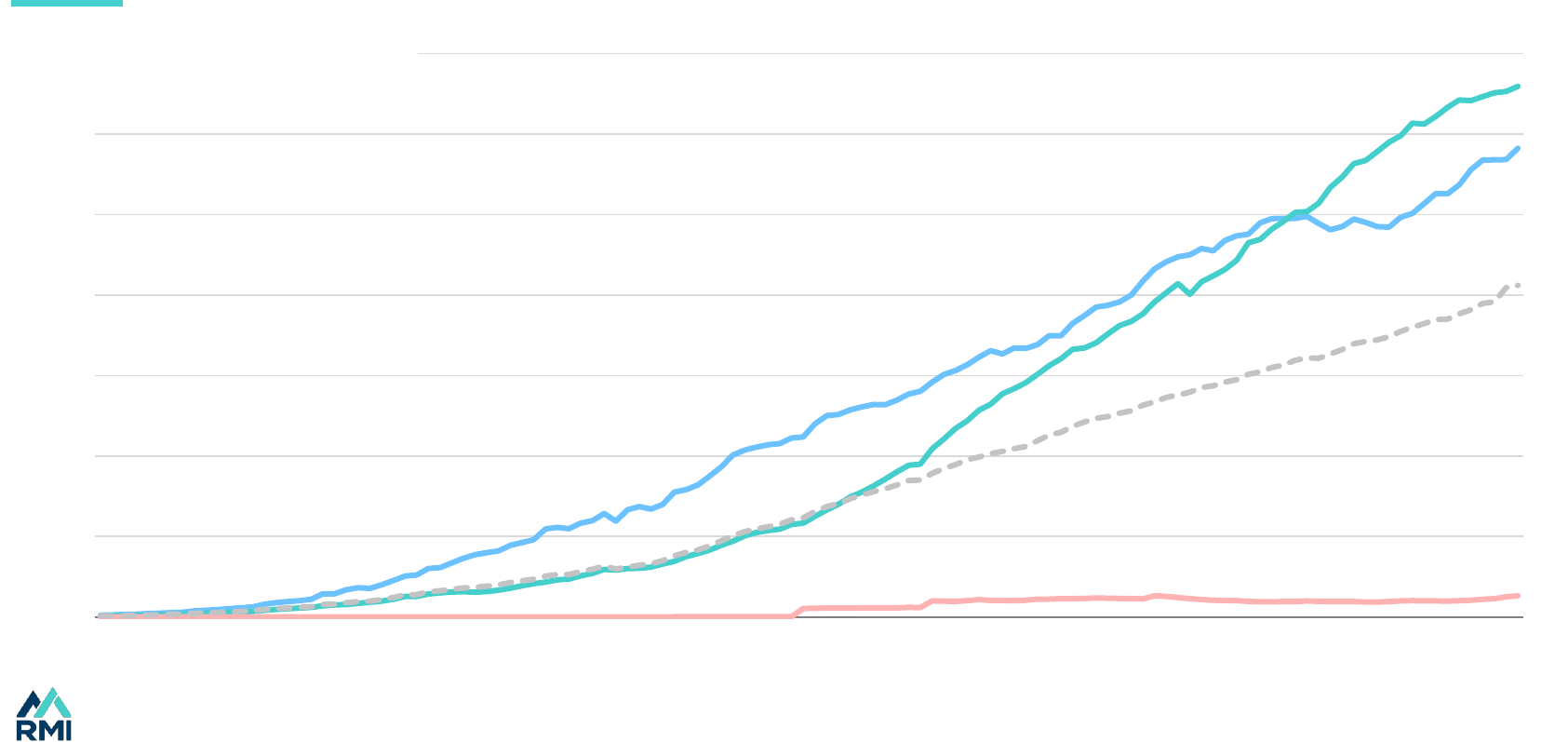
17
Buildings and industry have been electrifying for 120 years; now transport joins the party
A century of electrification
Source: IIASA, IEA WEB.
Electricity share of final energy demand by sector
Industry
Buildings
Total
Transport
0%
5%
10%
15%
20%
25%
30%
35%
1900 1910 1920 1930 1940 1950 1960 1970 1980 1990 2000 2010 2020
of final energy demand
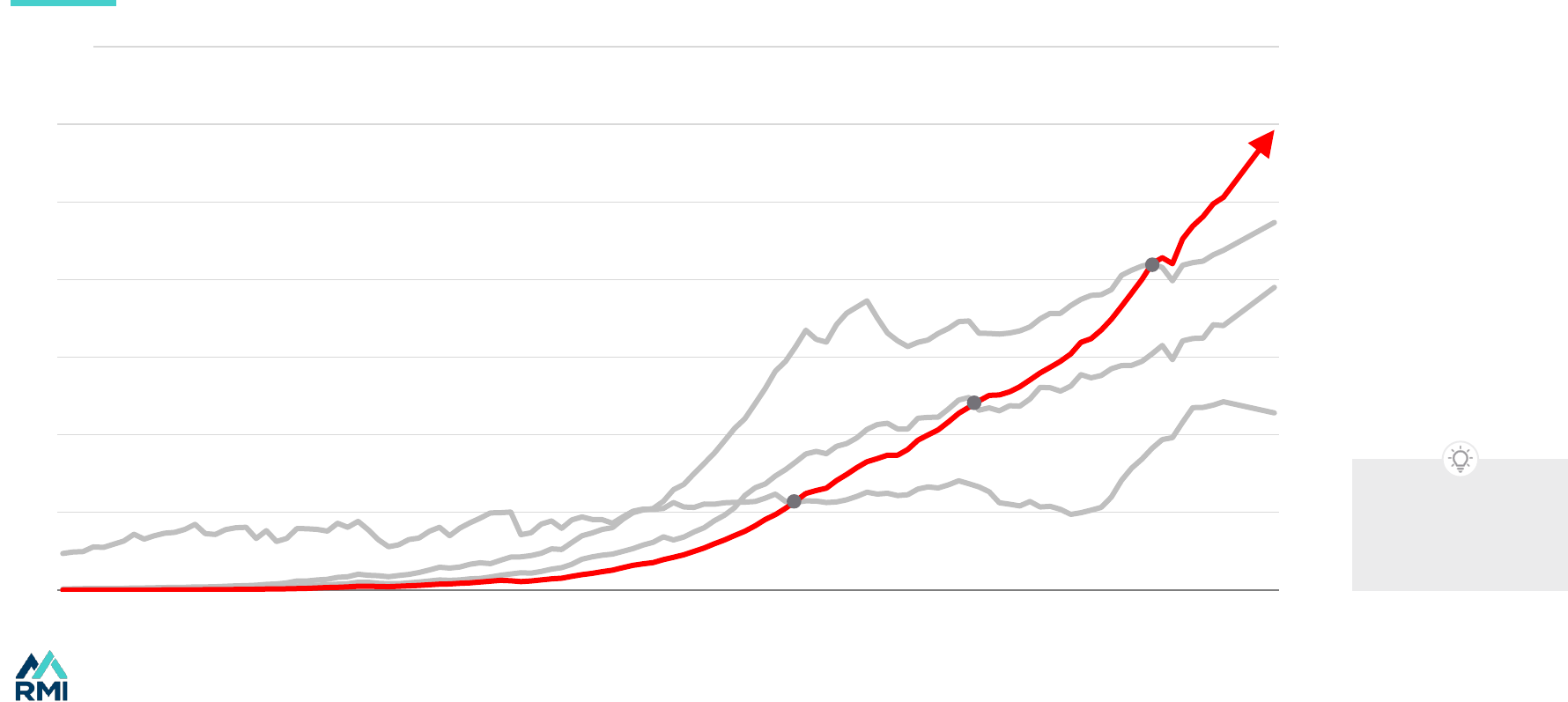
18
Electricity is the largest supplier of useful energy
Electricity is the new King of Energy
Note: All sectors excluding non-energy uses. Estimates for useful energy differ, and here we have taken data from IIASA, which has prepared the most detailed data we have seen.
Oil
Electricity
0
10
20
30
40
50
60
70
1900 1910 1920 1930 1940 1950 1960 1970 1980 1990 2000 2010
Useful energy supply
Natural gas
Coal
EJ
Useful energy is the
total energy left after
all processing and
conversion losses.
Source: IIASA.
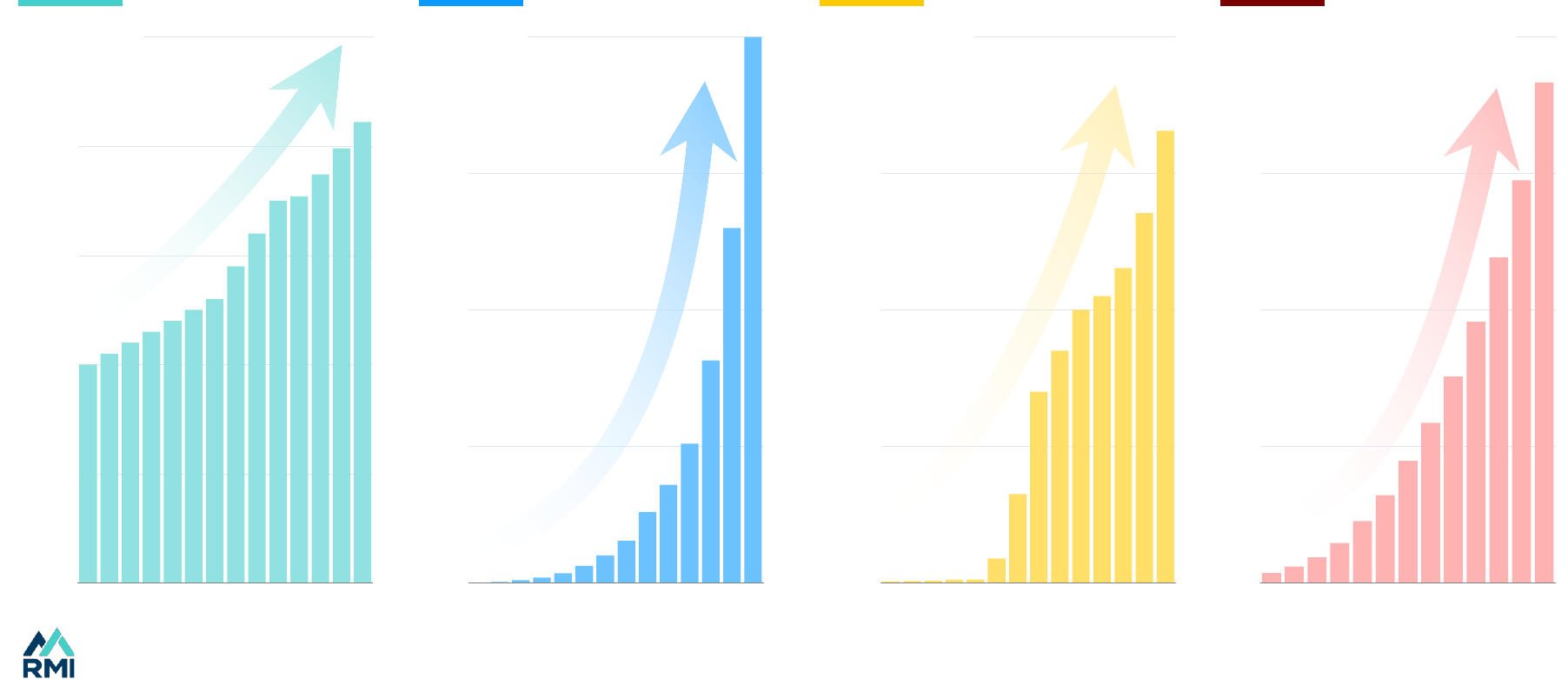
19
The global stock of EV cars and digital devices has been doubling every 2 years
We are poised to electrify the rest of the system
Source: IEA, Carbon Brief for heat pumps.
0
3
6
9
12
2010 2015 2020
0
100
200
300
400
2010 2015 2020
0
10
20
30
40
2010 2015 2020
0
50
100
150
200
250
2010 2015 2020
Heat pumps EV cars EV trucks
Digitally enabled
automated devices
billion connected devices
thousandmillion million
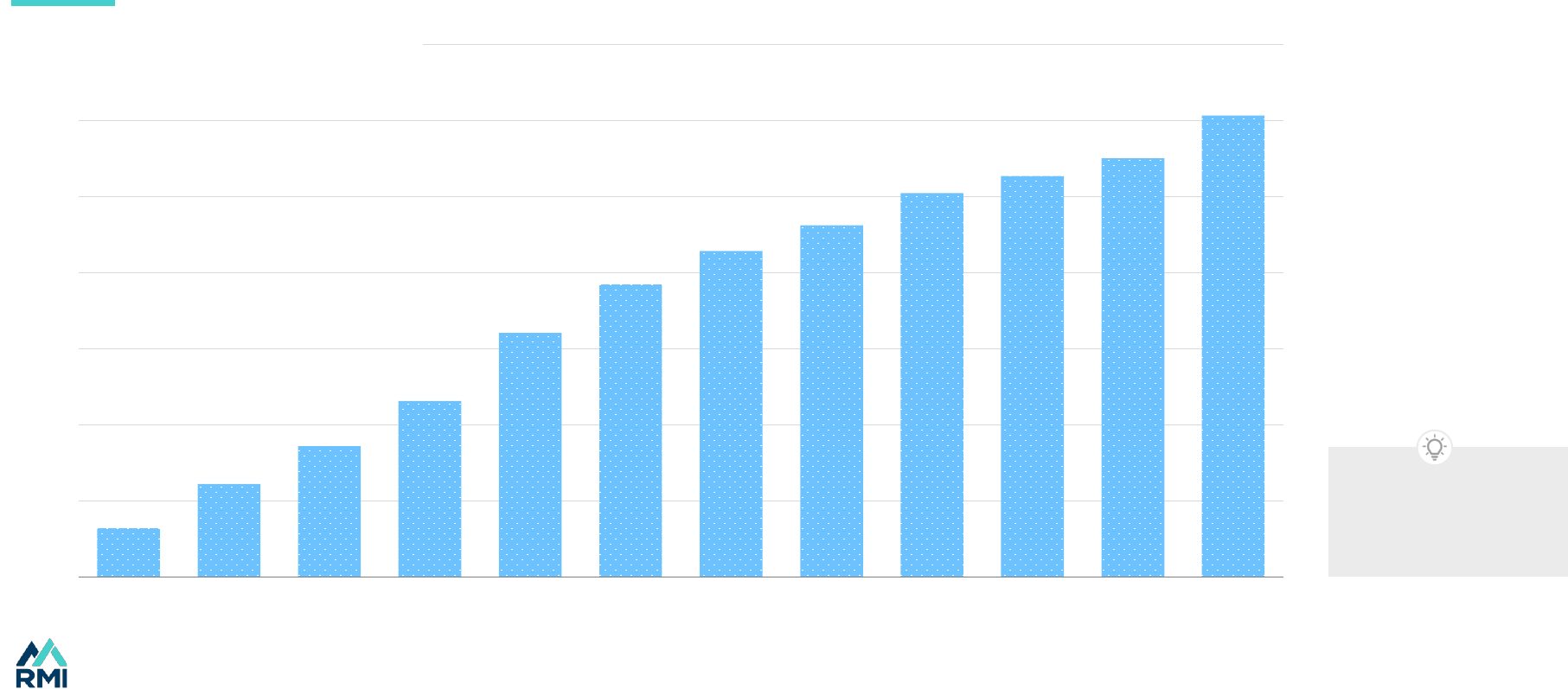
20
Efficiency gains since 2010 have reduced energy demand growth more than any other factor
Efficiency is the Deep Force of change
Source: IEA WEB, IEA WEO, RMI calculations. Energy efficiency here is simply defined as the difference between GDP growth and energy demand growth.
0
20
40
60
80
100
120
140
2011 2012 2013 2014 2015 2016 2017 2018 2019 2020 2021 2022
Efficiency gains
EJ per year avoided since 2010
Avoided energy
Efficiency gains over the
last decade were one fifth
of primary energy
demand in 2022 of 632 EJ
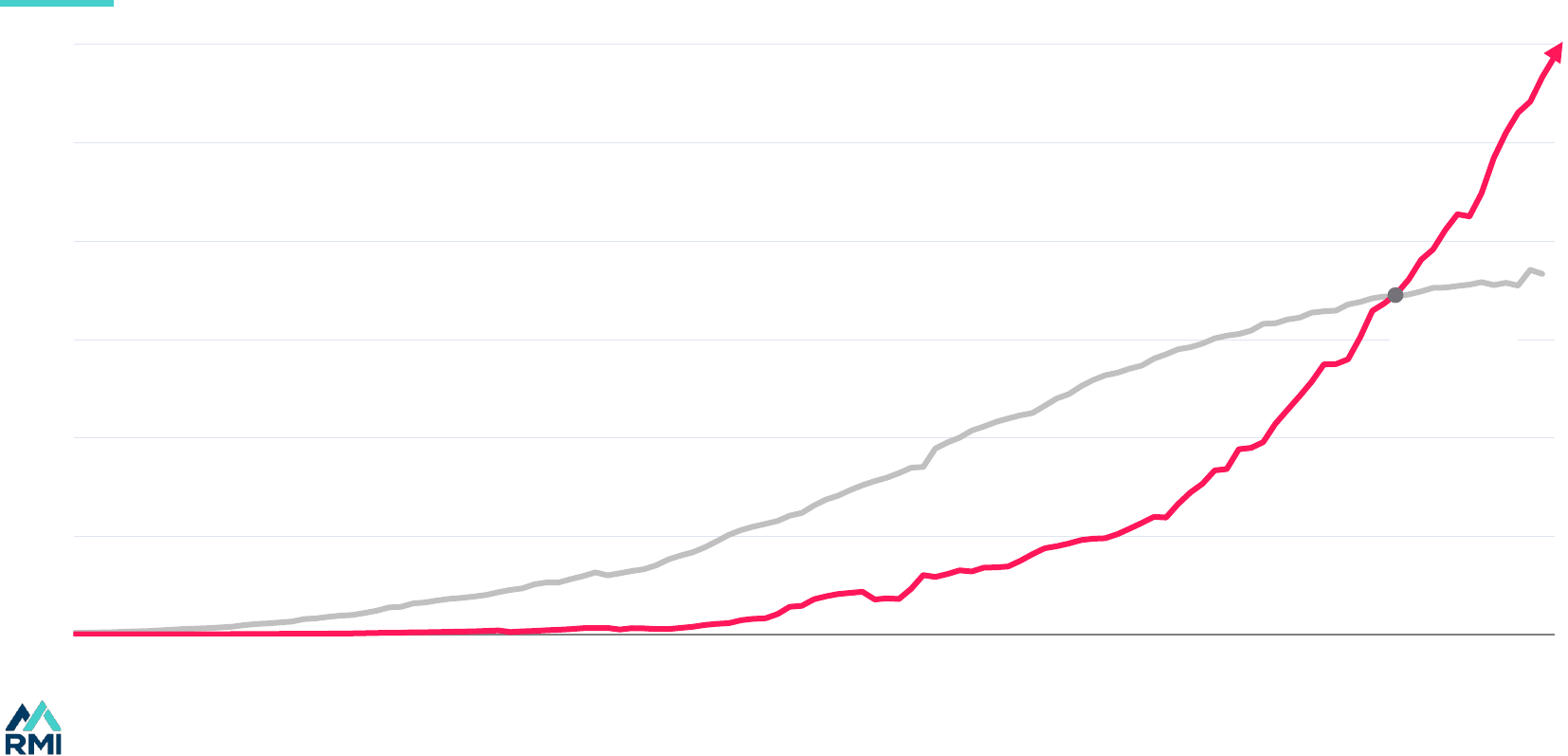
21
China has been electrifying at 10 percentage points per decade, nine times faster than the rest of the world
China has become the first major electrostate
Notes: IIASA data to 1971, IEA onward.
Source: IIASA, IEA WEB. WEB defines final energy slightly differently than WEO.
0%
5%
10%
15%
20%
25%
30%
1900 1910 1920 1930 1940 1950 1960 1970 1980 1990 2000 2010 2020
China
Electricity share of final energy
World
(ex China)
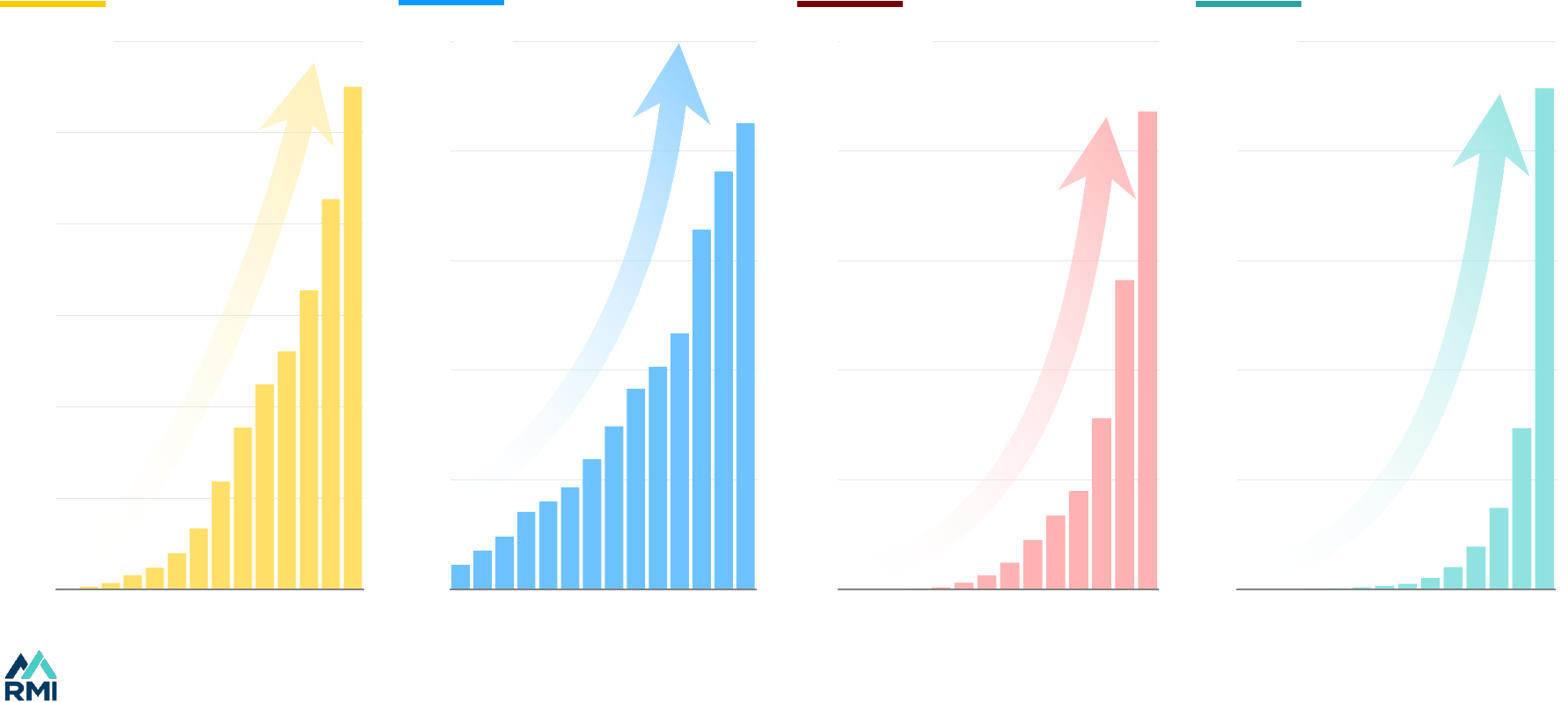
22
45
0
30
75
15
60
2015 20202010
In a decade, solar generation increased by 35 times, wind 9 times; EVs and batteries scaled even faster
Super-fast growth in China drives change
Source: IEA, BNEF.
400
300
500
200
600
100
0
2015 20202010
15
0
10
25
5
20
2015 20202010
600
0
400
1,000
200
800
2015 20202010
Solar Wind EV fleet Battery storage
GWhmillionsTWhTWh
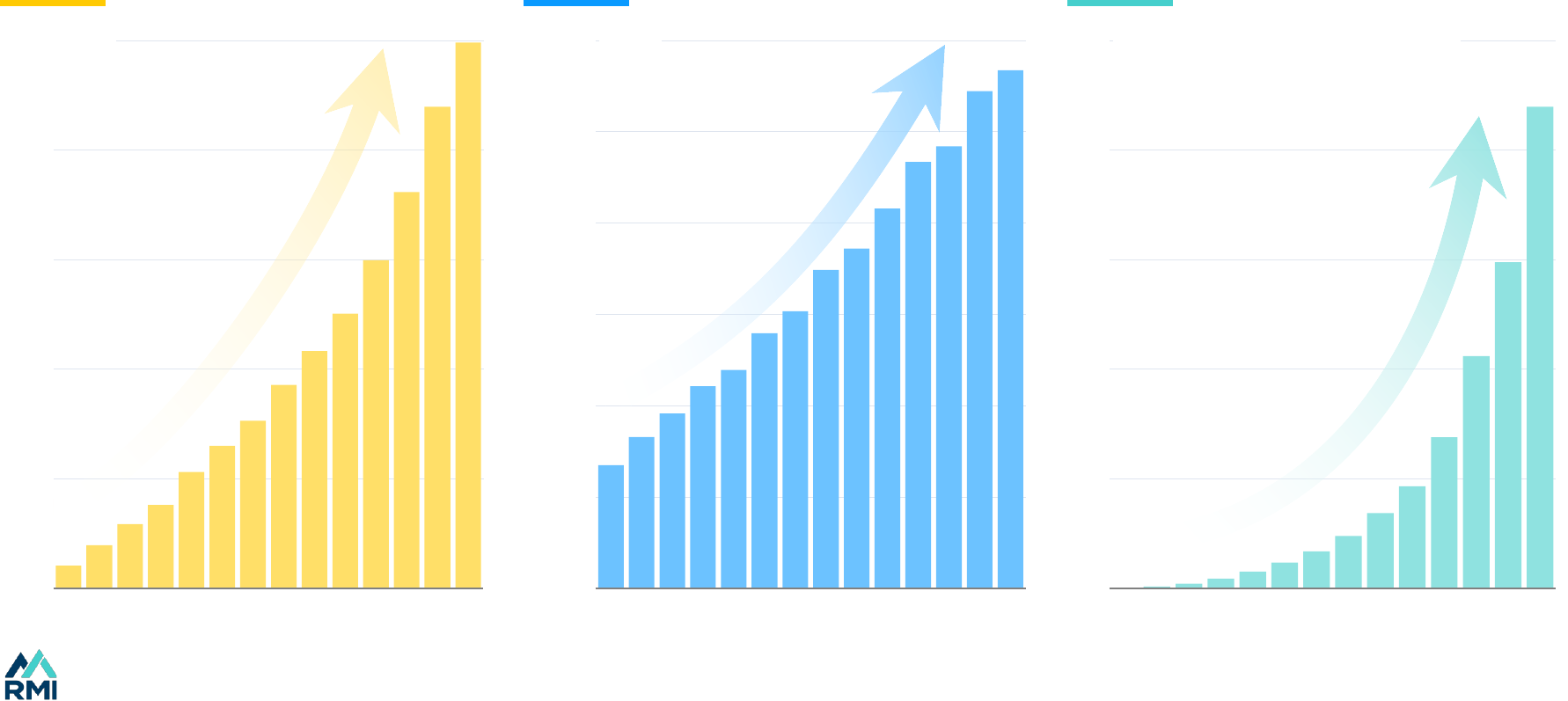
23
0
150
300
450
600
750
2010 2015 2020
Over the past decade, solar generation went up 7 times, wind 3 times, and EVs sales up over 50 times
Exponential growth is also happening in the OECD
Source: Ember, IEA.
0
4
8
12
16
20
2010 2015 2020
0
200
400
600
800
1,000
1,200
2010 2015 2020
Solar Wind EVs
millions of EV cars in global fleet TWh TWh
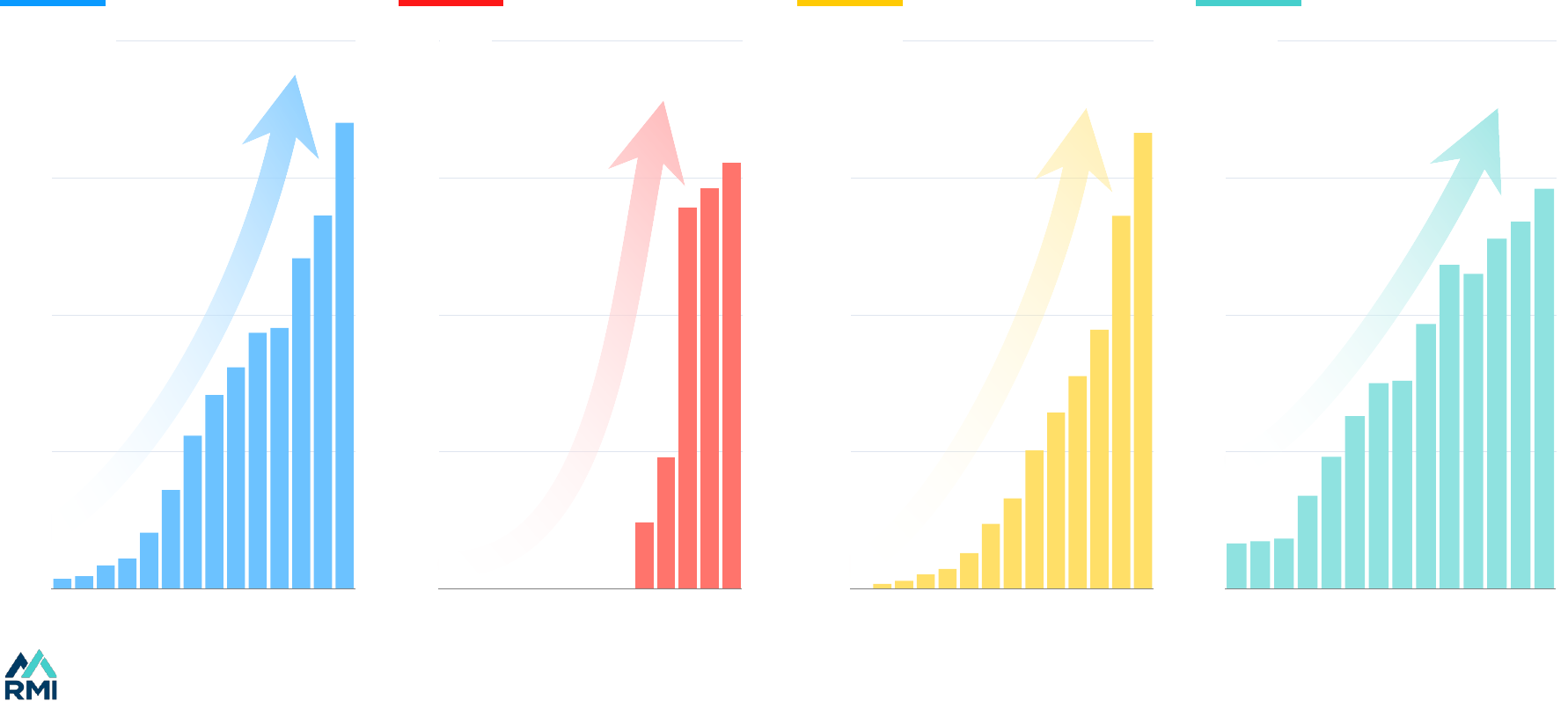
24
The adoption of superior technology is not confined to the Global North
Exponential growth in emerging economies
Source: IEA.
0
30
60
90
120
2010 2015 2020
0
10
20
30
40
2010 2015 2020
0
40
80
120
160
2010 2015 2020
0
2
4
6
8
2010 2015 2020
Brazil wind Vietnam solar India solar Morocco wind
TWh TWh TWhTWh
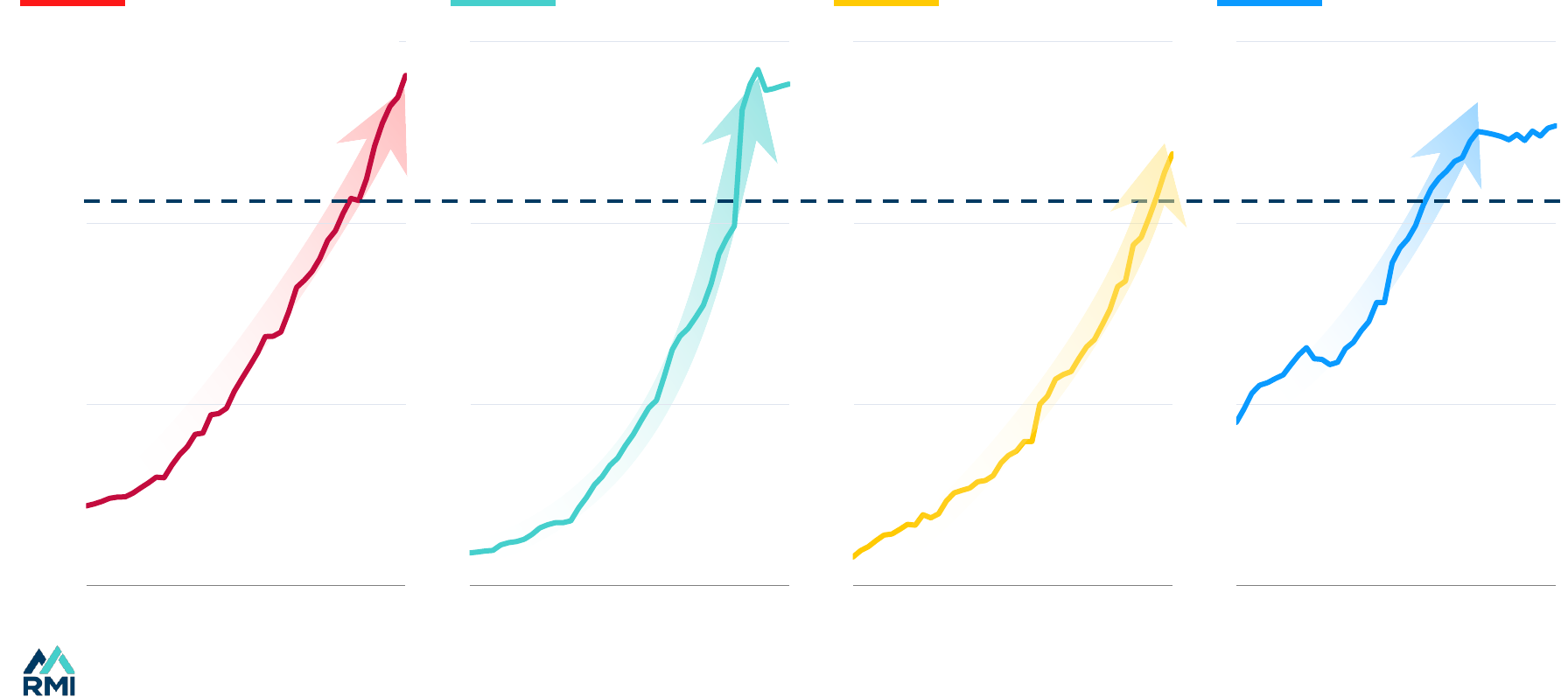
25
1980 1990 2000 2010 2020
0%
10%
20%
30%
1980 1990 2000 2010 2020
Asia is leading the charge to electrify everything
Electric Asia
Source: IEA WEB.
1980 1990 2000 2010 2020 1980 1990 2000 2010 2020
China Vietnam Bangladesh Korea
of final energy from electricity
United States and
Europe share in 2022

26
26
Index
The era of peaking fossil fuel demand
• Pessimists keep raising barriers to change; optimists keep solving them.
• Early warning signals for fossils include peak new fossil fuel electricity capacity
(2010), peak capex for oil and gas (2014), peak ICE demand (2017), and peak per
capita fossil demand (2012–18).
• Global fossil fuel demand for industry peaked in 2014, and in buildings in 2018.
• Fossil fuel demand likely peaked in electricity in 2023 and will peak in transport
before the end of the decade.
• OECD fossil fuel demand peaked in 2007, and every major area of demand has
peaked in the United States.
• China is the pivot nation in the transition away from fossil fuels, and most areas of
demand have clearly peaked there.
• Peaks are showing up across the Global South, from South America to South Africa
and Thailand.
3
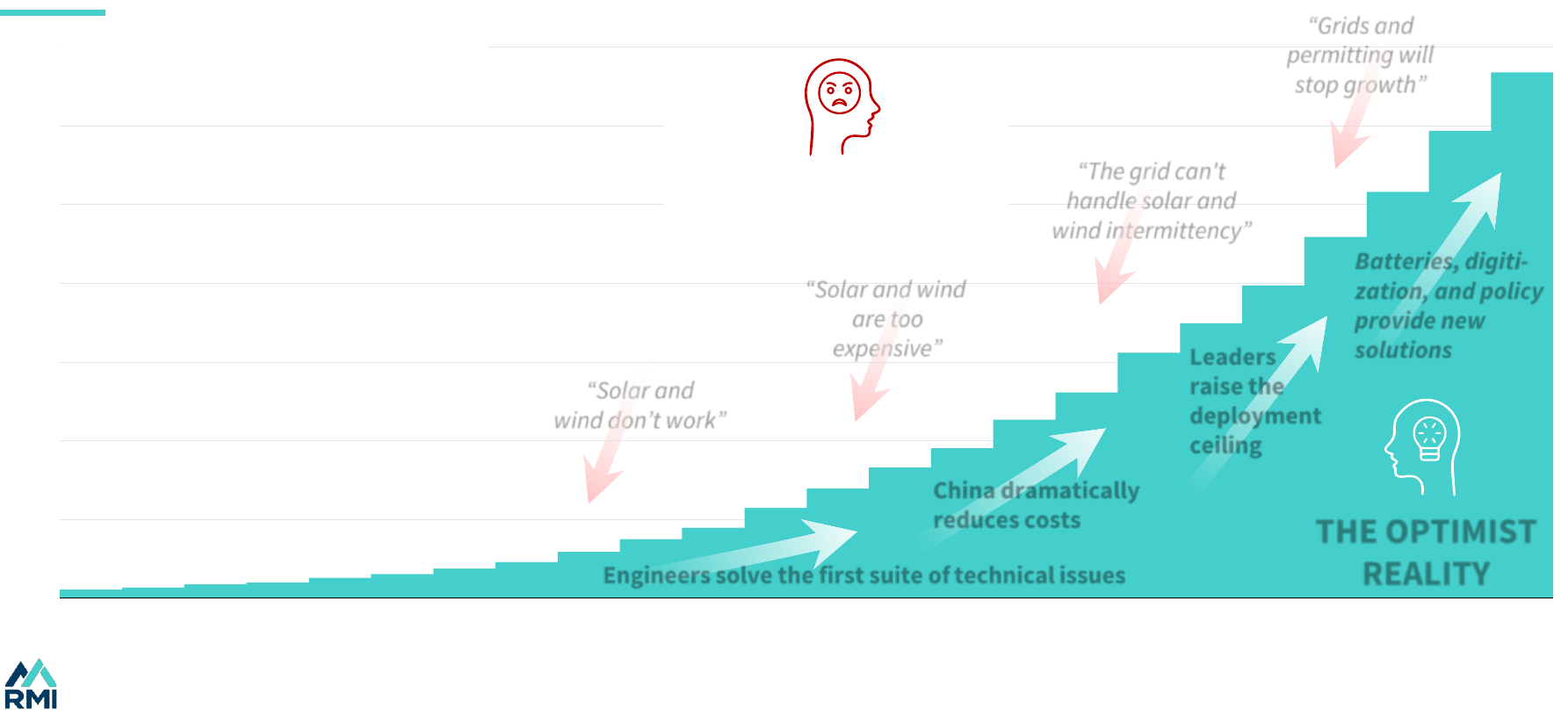
27
Pessimists sound clever; optimists change the world
Source: Ember.
The incumbents have been predicting the end of the transition for decades
Pessimist’s and optimist’s take on solar and wind uptake
0%
2%
4%
6%
8%
10%
12%
14%
2000 2005 2010 2015 2020 2023
“Solar and
wind don’t work”
“Solar and wind
are too
expensive”
“The grid can't
handle solar and
wind intermittency”
of generation from solar and wind
THE OPTIMIST
REALITY
“Grids and
permitting will
stop growth”
THE PESSIMIST
STORY
Engineers solve the first suite of technical issues
China dramatically
reduces costs
Leaders
raise the
deployment
ceiling
Batteries, digiti-
zation, and policy
provide new
solutions
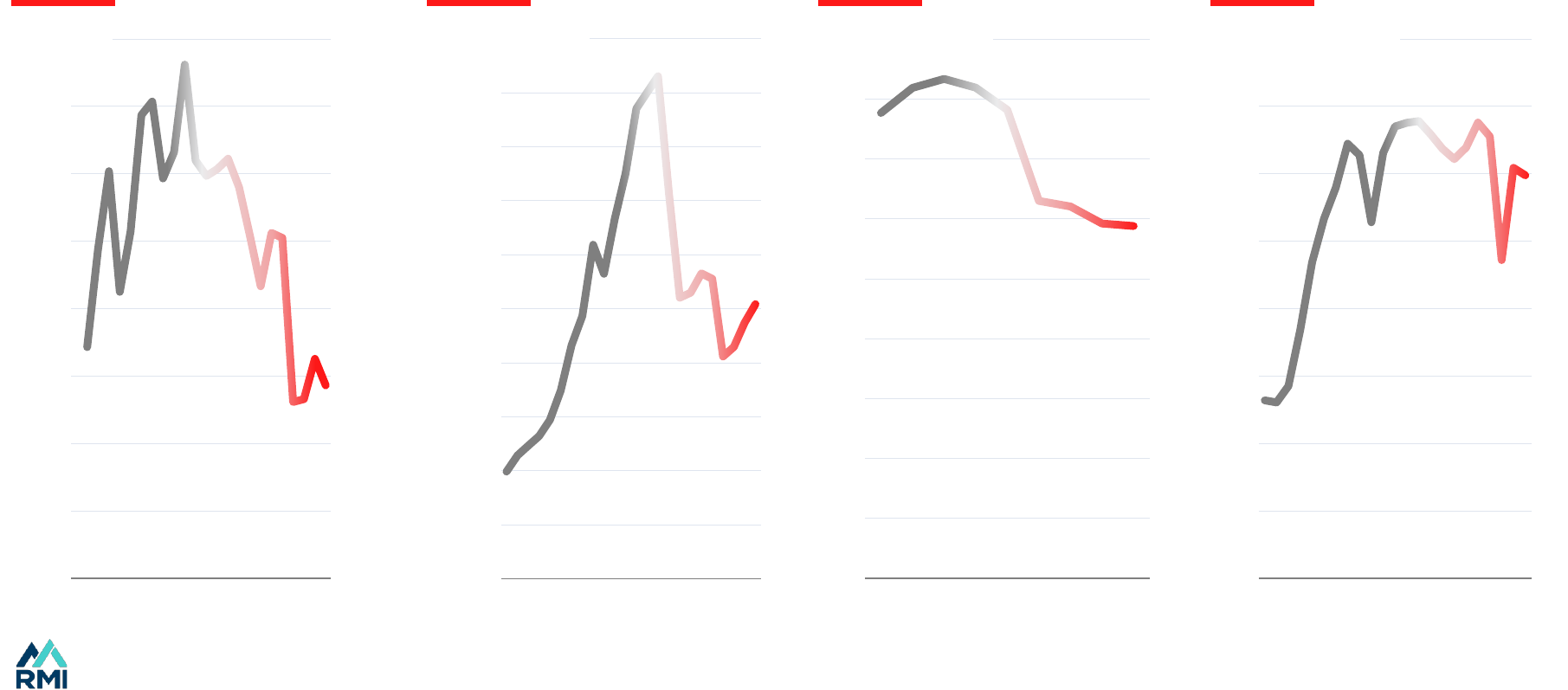
28
0
100
200
300
400
500
600
700
800
900
1,000
2000 2010 2020
As growth turns to decline
Flashing red lights all over the fossil fuel system
Source: Ember (new fossil fuel electricity generation capacity), IEA WEI (oil and gas upstream capex), BNEF (ICE sales), Energy Institute (global fossil fuel demand pp).
Note fossil fuel capacity additions are a net figure.
0
20
40
60
80
100
120
140
160
2000 2010 2020
50
52
54
56
58
60
62
64
66
2000 2010 2020
0
10
20
30
40
50
60
70
80
90
2015 2020
million cars
$ billion
GW
GJ per capita
Fossil fuel capacity additions Oil and gas capex ICE sales Fossil fuel demand
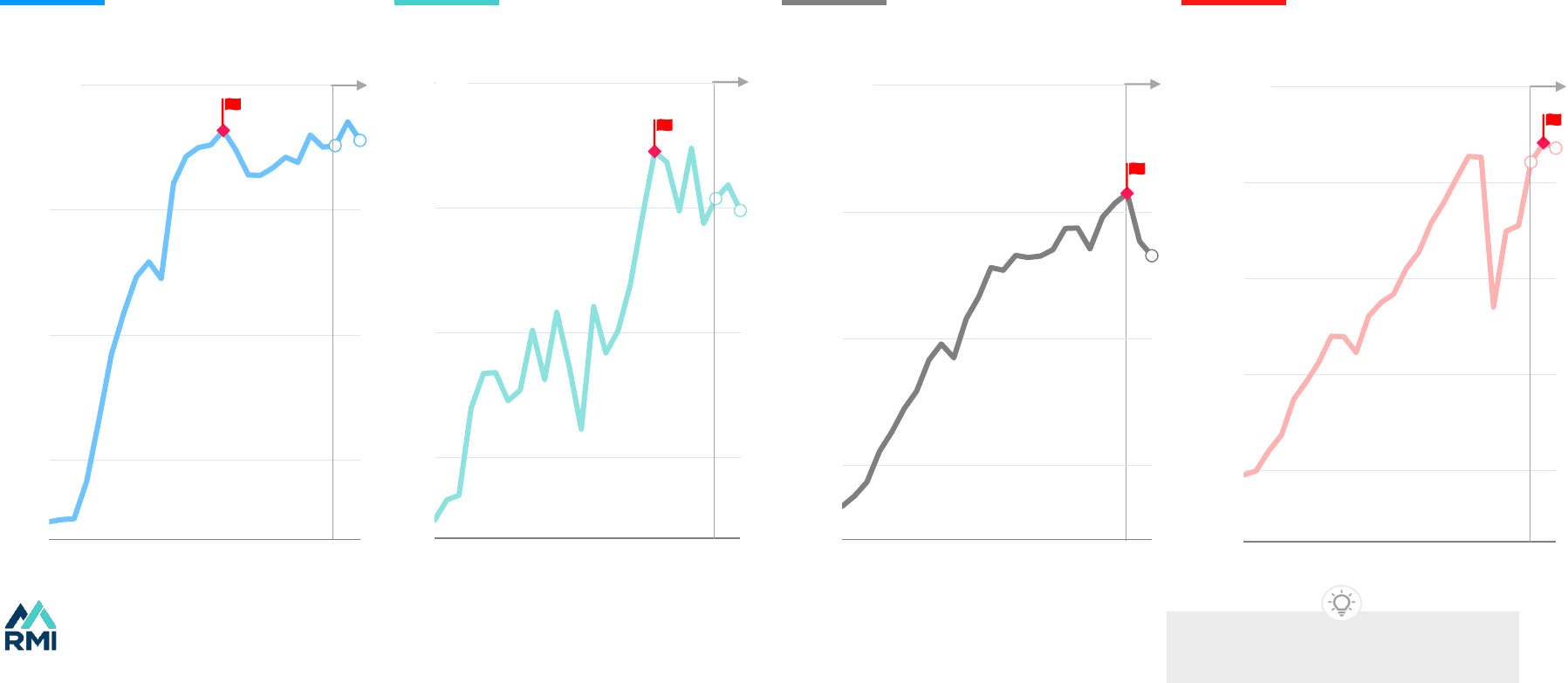
29
60
70
80
90
2000 2010 2020
120
90
80
100
110
2000 2010 2020
120
180
150
210
2000 2010 2020
40
44
42
46
2000 2010 2020
Building and industry peak fossil fuels are behind us; electricity and transport are peaking now
The era of peaking fossils is here
Source: BNEF NEO 2024 NZS.
Peak
EJ
Peak
Peak
Peak imminent: 2024/25Peaked in 2023Peaked in 2018Peaked in 2014
EJEJ EJ
Fossil fuel demand by sector
Industry Buildings Power and heat Transport
Power & transport peak last, but have
the fastest growing challengers
Future Future Future Future
Peak
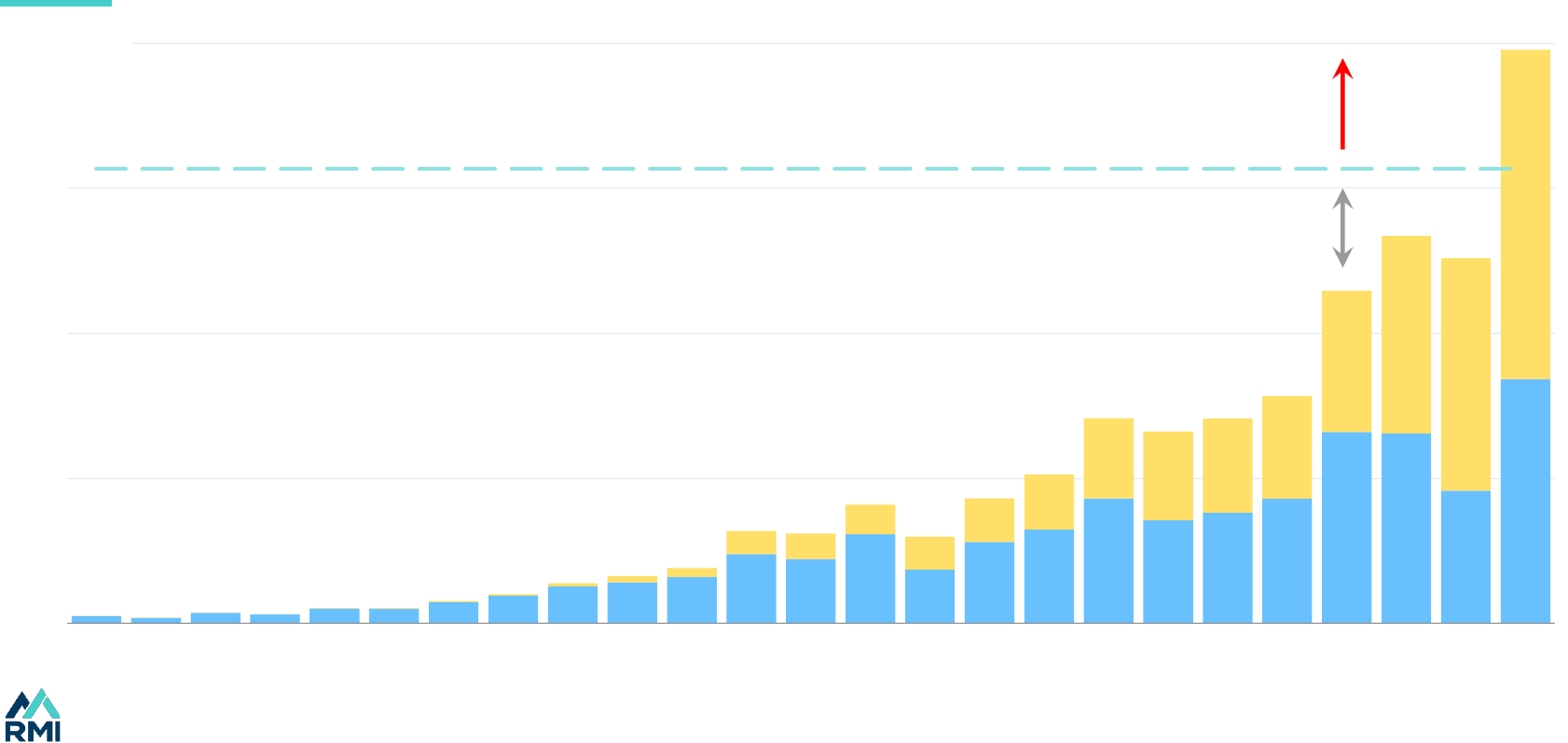
30
Peak fossil fuel demand in electricity
Source: IEA Renewables 2023.
0
200
400
600
800
2000 2005 2010 2015 2020 2024E
Solar
Wind
Average increase in total electricity demand 2012–22
TWh
A little room for fossil growth
Fossil power generation in decline
Change in electricity generation
Solar and wind provided 500 out of 600 TWh of demand growth in 2023, and will break through average growth this year
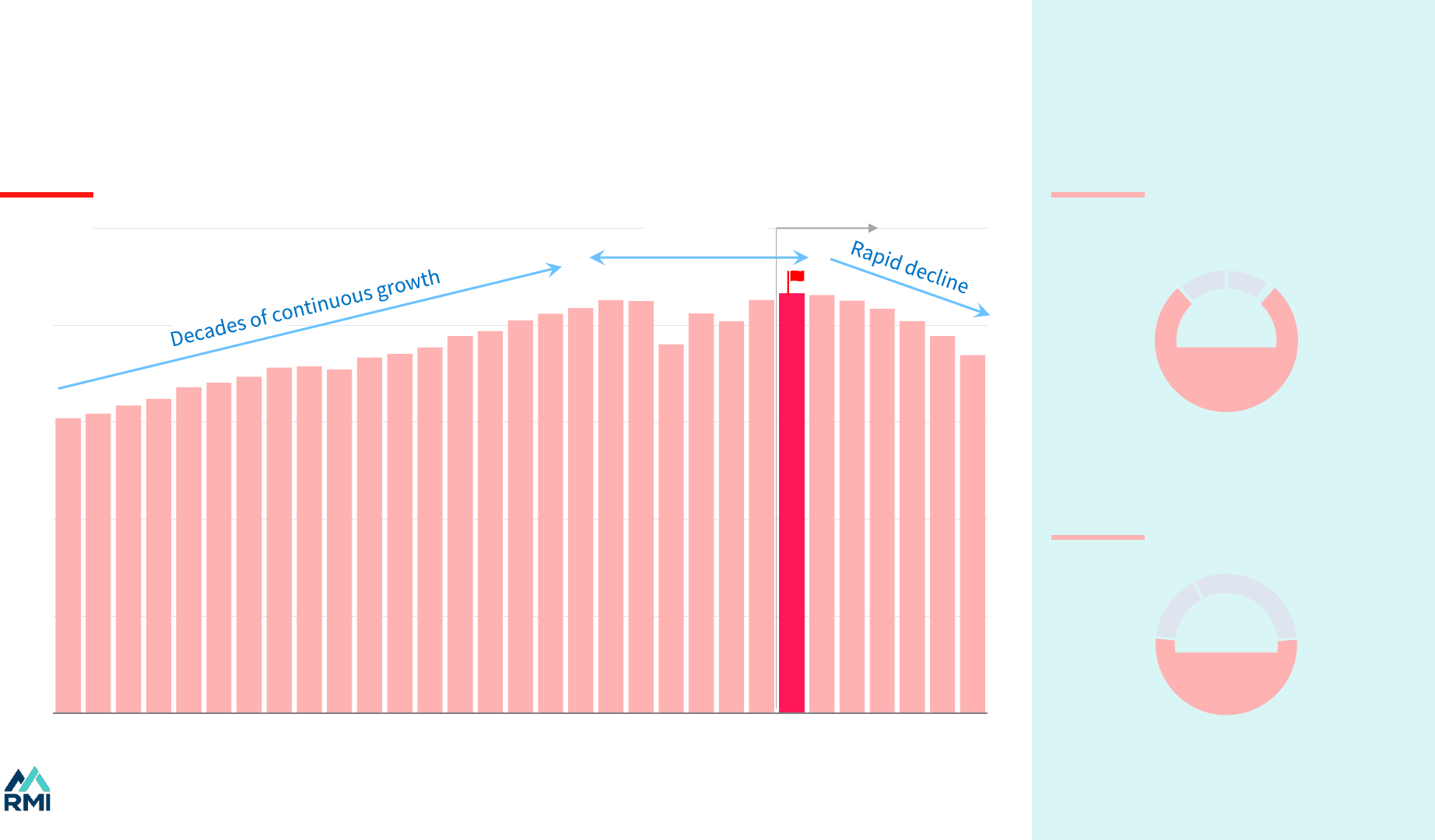
31
Peak
Road
Aviation
Shipping
Rail
Road
Other
transport
Other sectors
53%
77%
Road share oil demand for
transport, 2023
Road share oil demand, 2023
Decades of growth stagnate before turning into rapid decline
A plateau in road oil demand
Source: BNEF NEO2024 NZS.
0
20
40
60
80
100
2000 2005 2010 2015 2020 20302025
Road oil demand
EJ
Outlook
The demand
plateau
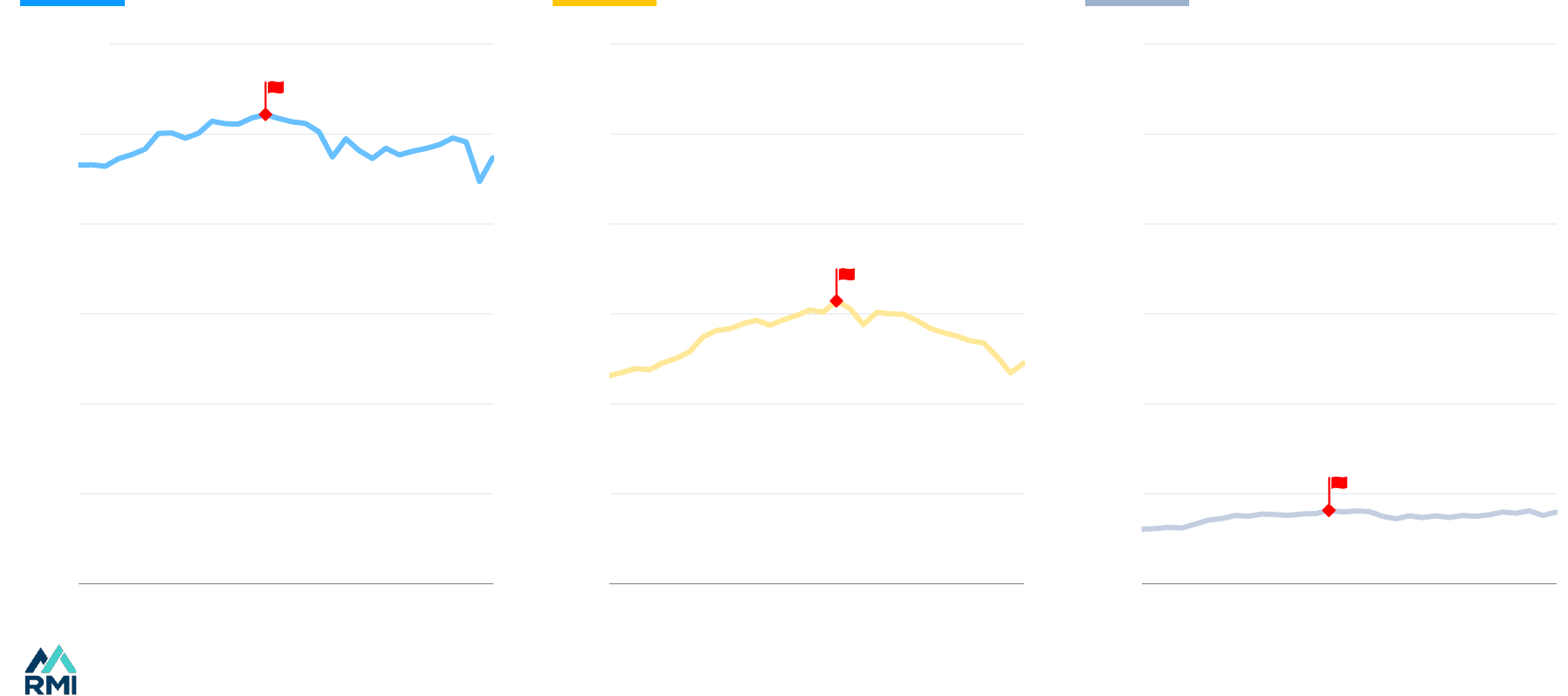
32
OECD fossil fuel demand for final energy peaked in 2005 and for electricity generation in 2007
OECD fossil fuel demand peaked a generation ago
Source: IEA WEB.
0
20
40
60
80
100
120
1990 2000 2010 2020
0
20
40
60
80
100
120
1990 2000 2010 2020
0
20
40
60
80
100
120
1990 2000 2010 2020
Peak
Fossil fuels for final energy Fossil fuels for electricity generation Fossil fuels for non-energy
EJ
Peak
Peak
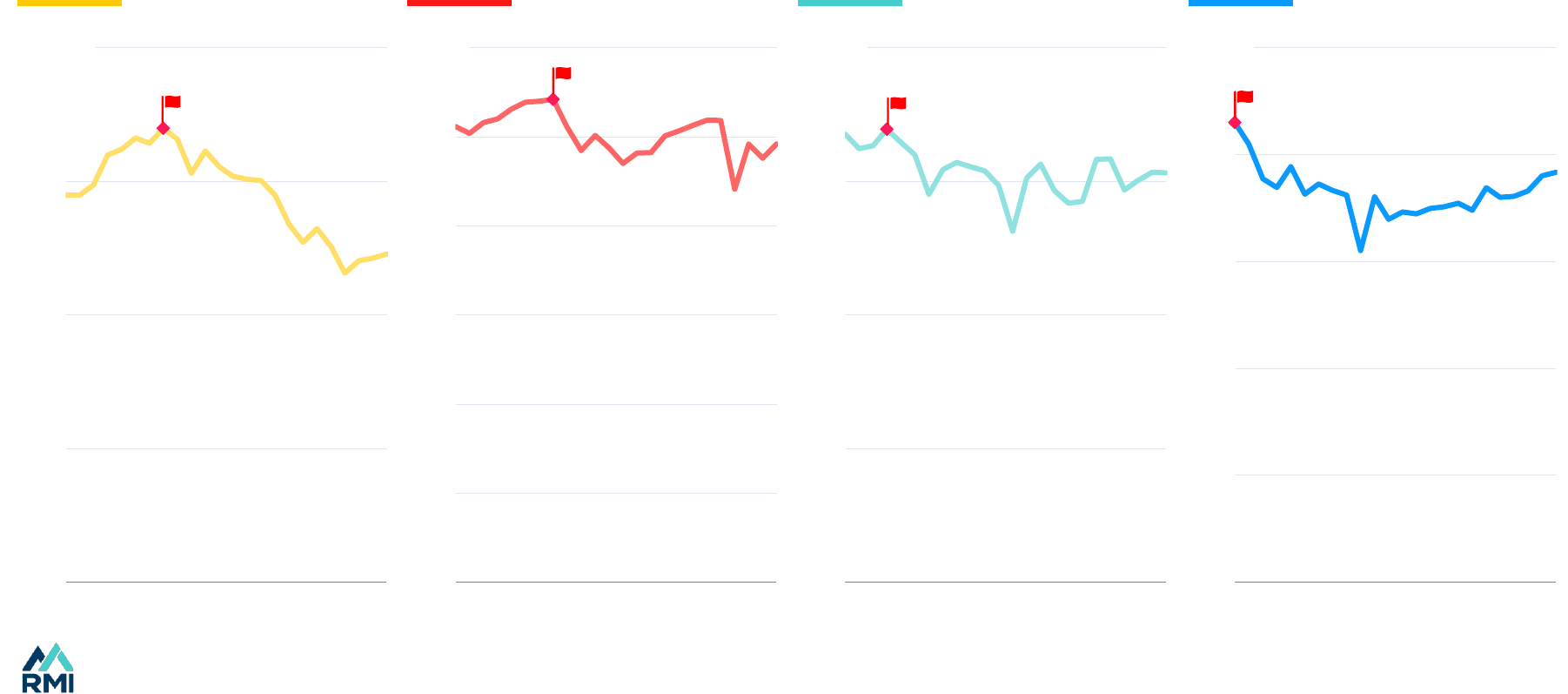
33
Fossil fuel demand across sectors peaked more than 15 years ago
United States — every major sector is past peak fossil demand
Source: BNEF NEO 2024.
Electricity Transport Buildings Industry
0
10
20
30
40
2000 2010 2020
EJ
0
5
10
15
20
25
30
2000 2010 2020
0
3
6
9
12
2000 2010 2020
0
2
4
6
8
10
2000 2010 2020
Peak
Peak
Peak
Peak
EJ EJ EJ
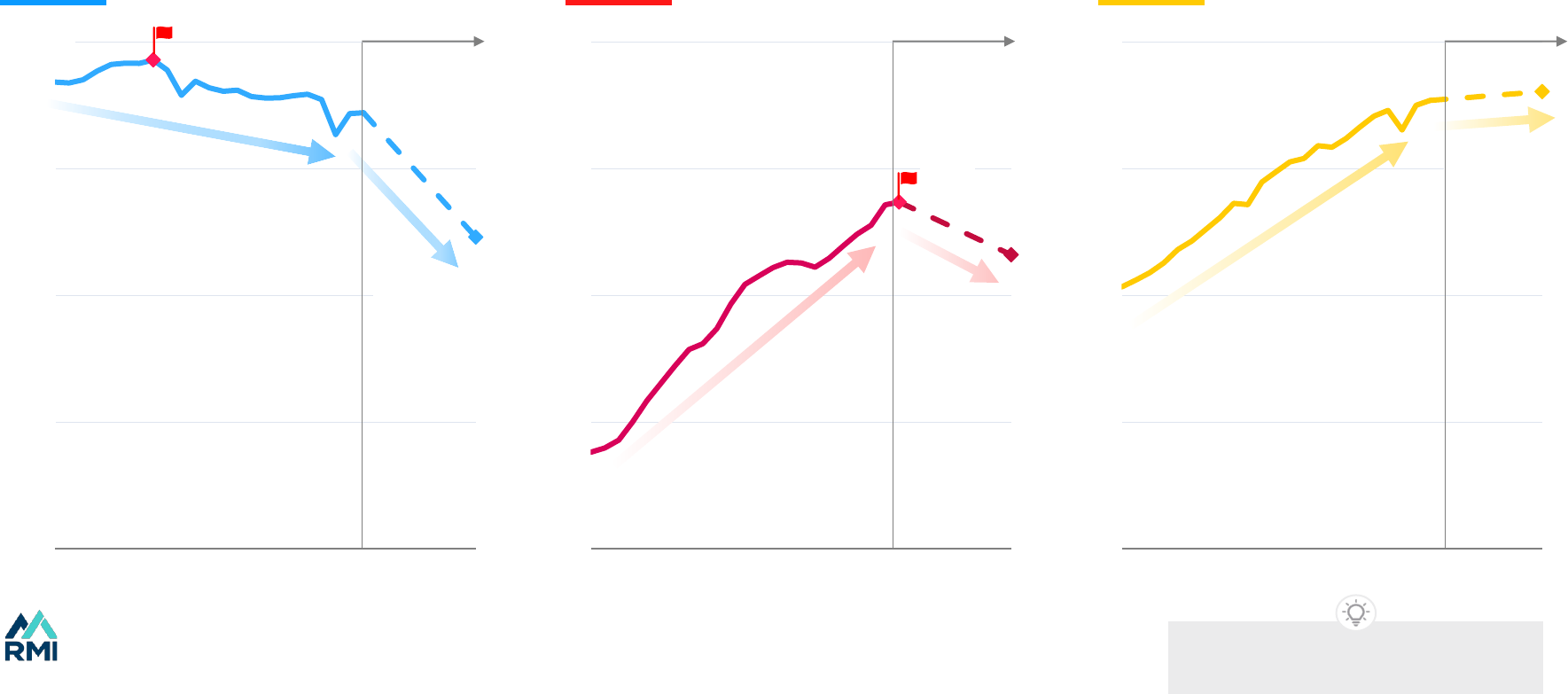
34
2000 2010 2020 2030
China is the global pivot nation
Source. IEA APS scenario.
0
50
100
150
200
2000 2010 2020 2030
EJ
Outlook
2000 2010 2020 2030
From slow decline...
From rapid
growth…
From rapid
growth...
…to
plateau
… to fast
decline
…to fast
decline
Peak
Peak
When China peaks, the world peaks
OECD
Primary fossil fuel demand by region
China Global South
China has driven two-thirds of fossil fuel
demand growth in the past decade
Outlook Outlook
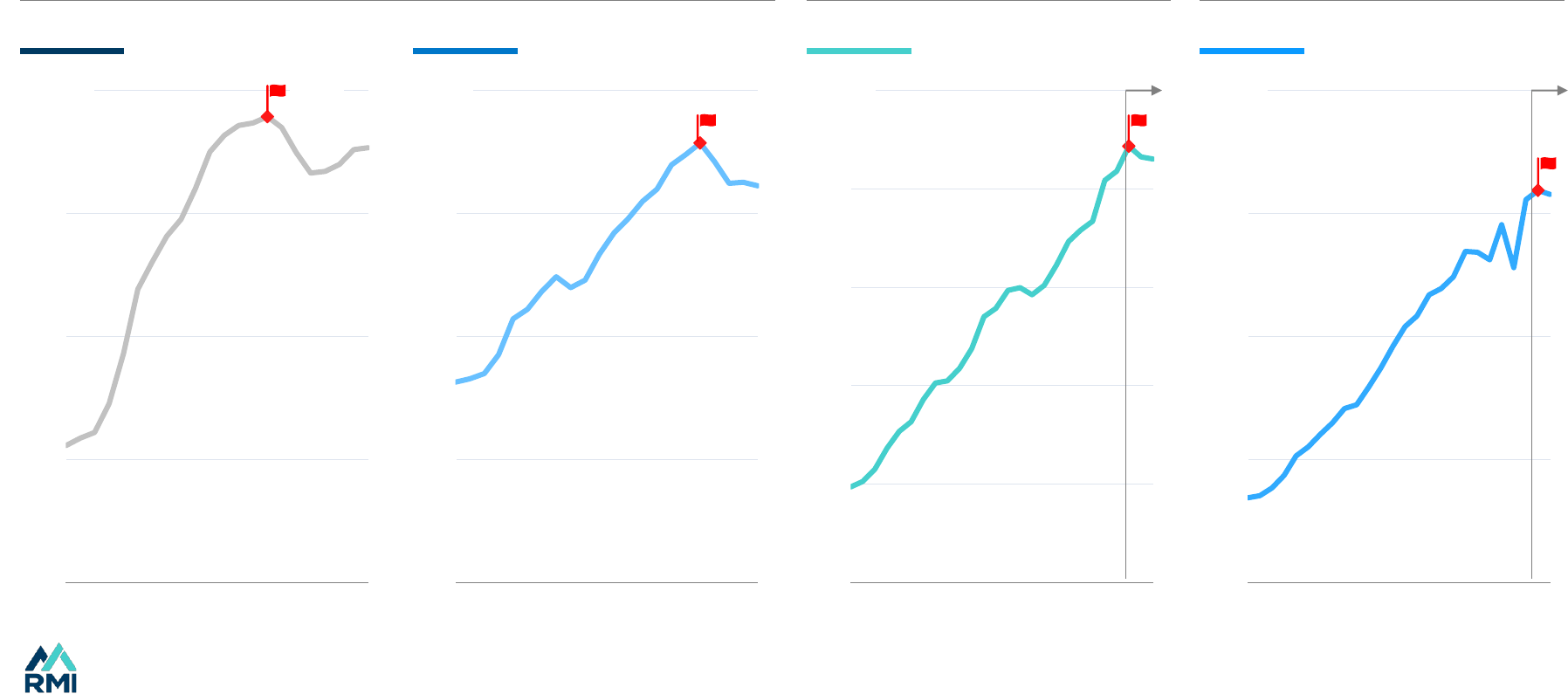
35
Fossil fuel demand is peaking across the Chinese system
Source: IEA WEB (past), Ember, IEA Electricity 2024 (electricity generation forecast), BNEF NZS (transport forward).
0
2
4
6
8
2000 2010 2020
0
5
10
15
20
2000 2010 2020
0
10
20
30
40
2000 2010 2020
Fossil fuels in industry Fossil fuels in buildings Fossil fuels in electricity Fossil fuels in transport
EJ
Peaking behind us Peaking now Peaking shortly
0
15
30
45
60
75
2000 2010 2020
Future Future
Peak
Peak
Peak
Peak
Peaks in industry and buildings are behind us, electricity peaked in 2023, and transport is coming soon
EJ EJ EJ
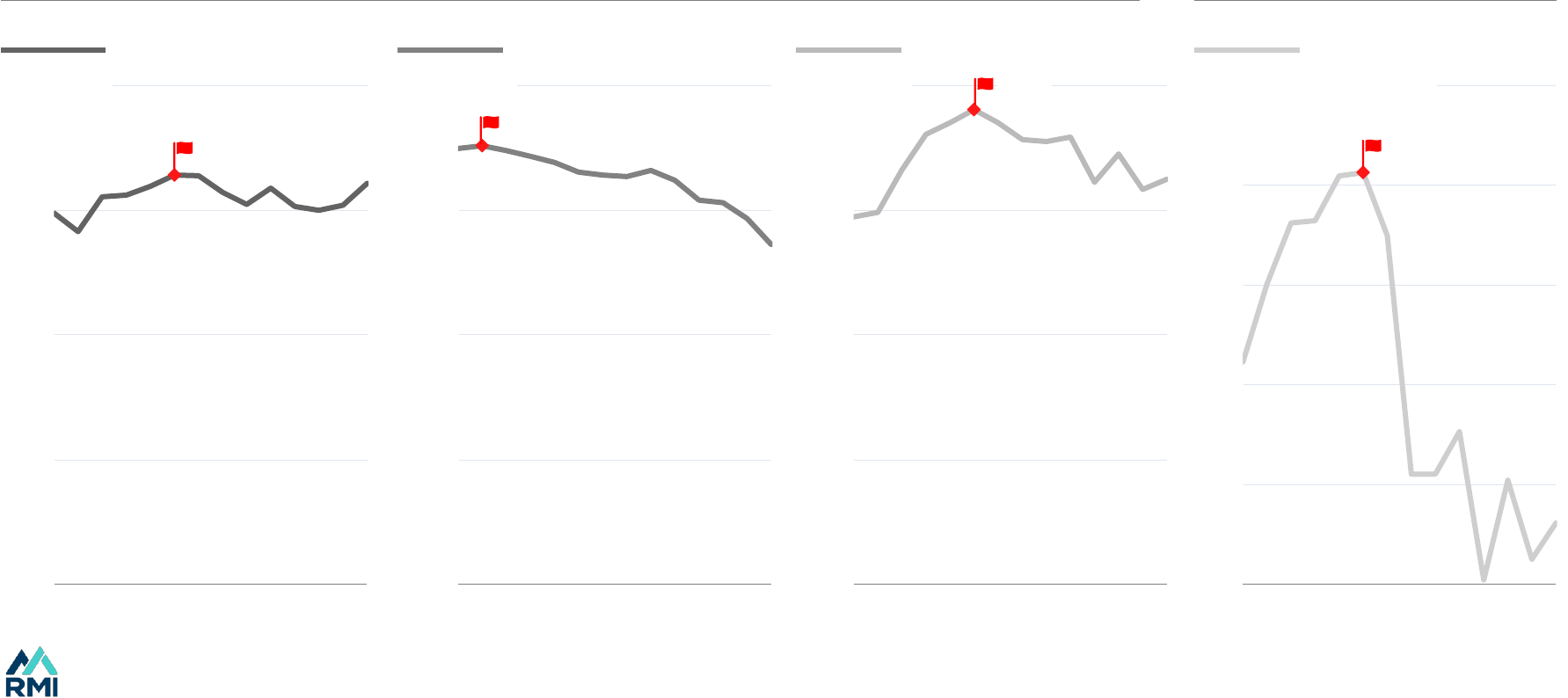
36
The first fossil peaks in the Global South
Source: Ember; Note coal additions are a net figure — gross additions minus retirements.
0
5
10
15
20
25
2010 2015 2020
0
200
400
600
800
2010 2015 2020
0
70
140
210
280
2010 2015 2020
South Africa Latin America
Coal capacity additions
TWh TWh GW per year
0
50
100
150
200
2010 2015 2020
TWh
Thailand India
Fossil fuel generation
The Global South is not condemned to choose technologies the North is abandoning
Peak
Peak
Peak
Peak

37
37
Index
Why rapid change will continue
• The three drivers of change — renewables, electrification and efficiency — are self-
reinforcing.
• Cleantech costs will keep falling at around 20% for every doubling of deployment as
technology gets better and spreads around the world.
• Fossil fuels are vulnerable because they have huge unpaid externalities (up to $7
trillion a year), get large subsidies ($1 trillion a year), and waste two-thirds of their
energy.
• Cleantech provides energy security: 86% of people live in fossil-importing countries
today; renewable resources are 100 times larger than fossil fuels, and available
everywhere.
• The world’s largest energy consumer, China, lacks oil and gas, and cleantech is a
path to leadership, clean air, and zero emissions. So, China will continue to deploy
cleantech rapidly.
• There is a race to the top as others try to catch up. Cleantech is now 10% of global
GDP growth, and there is a race to lead the cleantech industries of the future.
Meanwhile, as the world burns, so policy pressure will rise.
• Clean technologies will continue to follow S-curves, cascading across sectors and
geographies. Change at the frontier is hard, but most countries can copy the leaders.
4
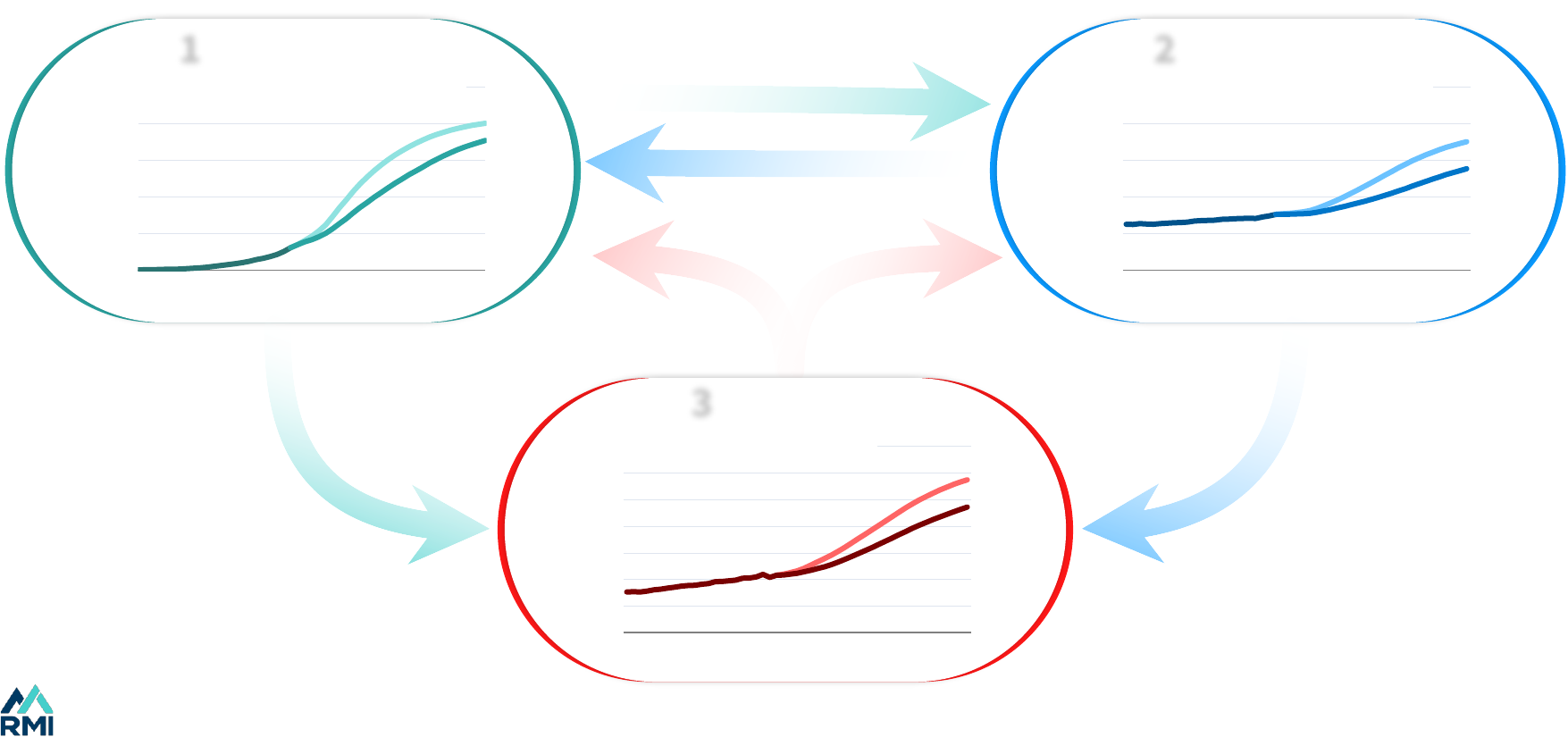
38
There are positive feedback loops between renewables, electrification, and efficiency
Three drivers of self-reinforcing change
Source: Rystad Energy scenarios, RMI analysis.
1
Renewables Electrification
Powers
Allows renewables to replace end-
use demand of coal, oil, and gas
0%
20%
40%
60%
80%
100%
2000 2010 2020 2030 2040 2050
0%
20%
40%
60%
80%
100%
2000 2010 2020 2030 2040 2050
2
Reduces the amount of
cleantech needed to
replace fossil fuels
Drives out inefficient fossil
supply technology
Drives out inefficient fossil
end-use technology
of electricity generation from wind and solar of useful energy demand from electricity
Efficiency
40%
45%
50%
55%
60%
65%
70%
75%
2000 2010 2020 2030 2040 2050
3
of primary demand turned useful
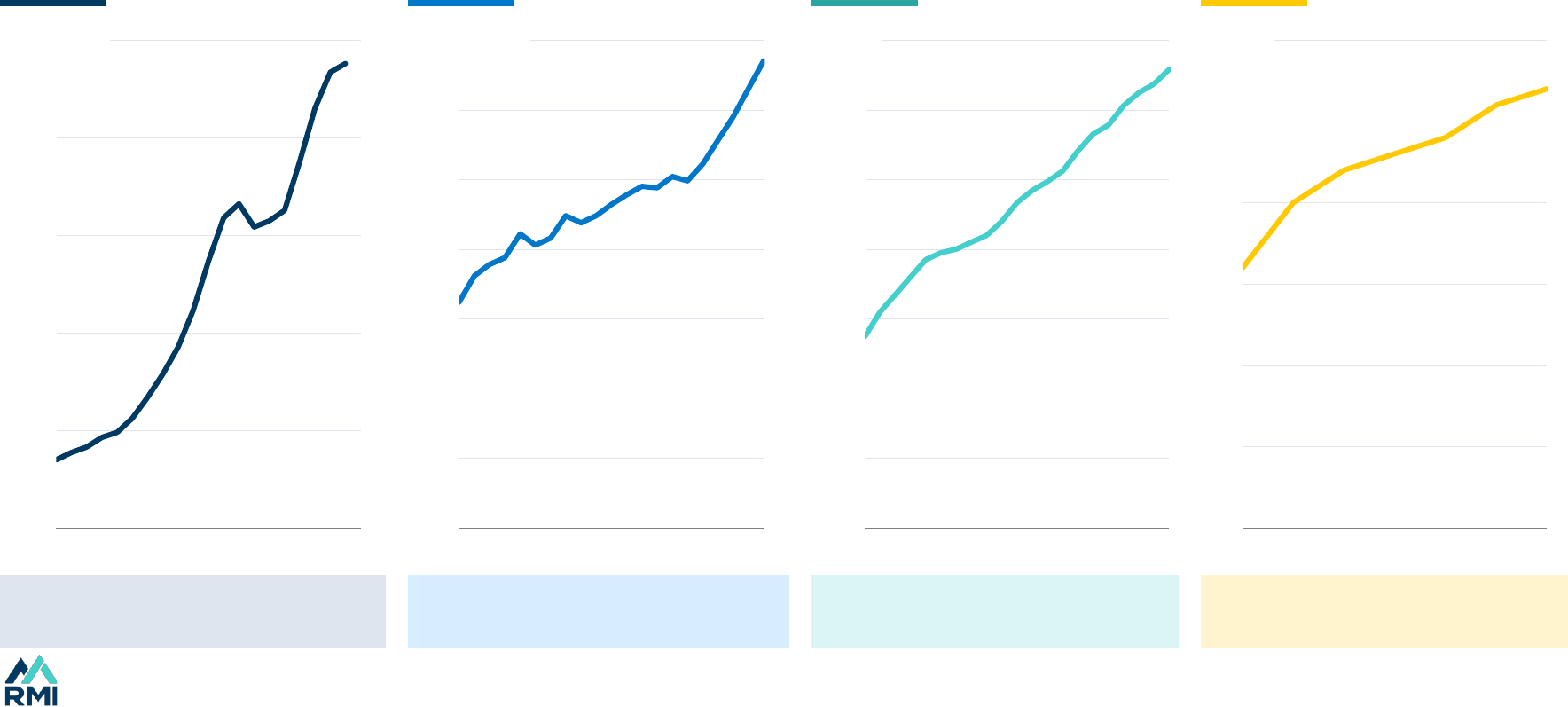
39
0
5
10
15
20
25
30
1995 2005 2015 2024
Cleantech keeps getting better
Sources: IRENA Patent database, RMI X-Change Batteries, US DOE, US NREL representative.
2000 2005 2010 2015 2020
0
50
100
150
200
250
2000 2005 2010 2015 2020
0
50
100
150
200
250
300
350
2005 2010 2015 2020
0
20
40
60
80
100
120
140
Cleantech patents per year Top-tier battery cell density Wind rotor diameter Solar cell efficiency
000s
Wh/kg m %
More innovation
Denser batteries open up new
sectors for batteries to play in
Bigger rotors reduce cost per
MWh
More efficient solar panels
reduce cost per MWh
More patents, higher battery density, more solar and wind generation per unit, economies of scale, new ideas, …
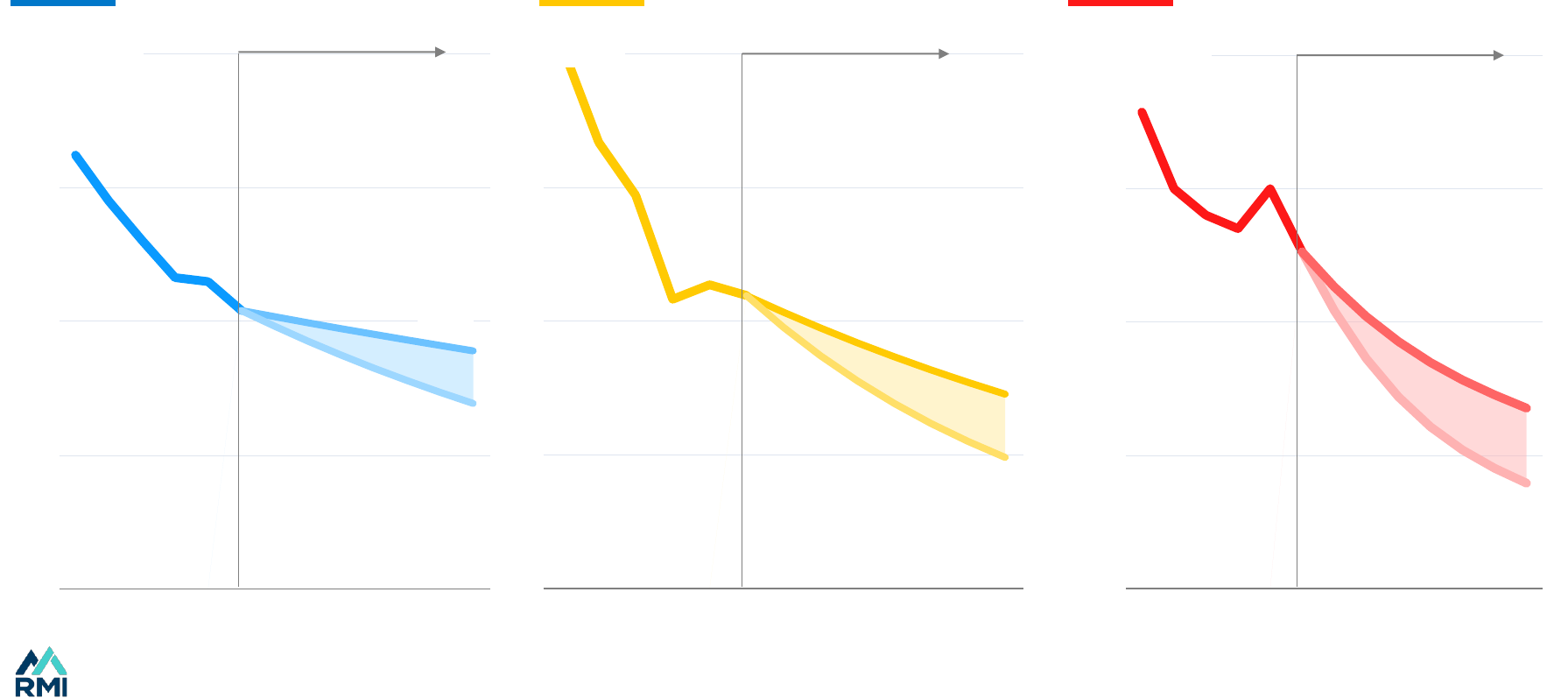
40
Cleantech costs will continue to fall
Source: BNEF, RMI analyses.
2018 2022 2026 2030
0
20
40
60
80
2018 2022 2026 2030
Past
Fast
Faster
Past
Fast
Faster
0
40
80
120
160
2018 2022 2026 2030
Past
Fast
Faster
Outlook Outlook
Wind costs Solar costs Battery costs
$/MWh $/MWh
$/kWh
Solar, the cheapest energy source in history, will halve in price by the end of the decade
Outlook

41
Fossil fuels impose major externalities, while collecting large rents and subsidies
The fossil fuel system is fragile
Sources: RMI, World Bank, IMF, OWID, IRENA, Lelievield et al. (2023),BMJ, IEA, IIASA.
of people live in fossil fuel-
importing countries
86%
In annual waste from energy
efficiency losses
$4.6
trillion
Annual air pollution deaths as the
result of burning fossil fuels
5–6
million
In annual fossil fuel rents
$2
trillion
Of greenhouse gases come from
burning fossil fuels
75%
In annual explicit subsidies
($7 trillion with implicit subsidies)
$1.3
trillion
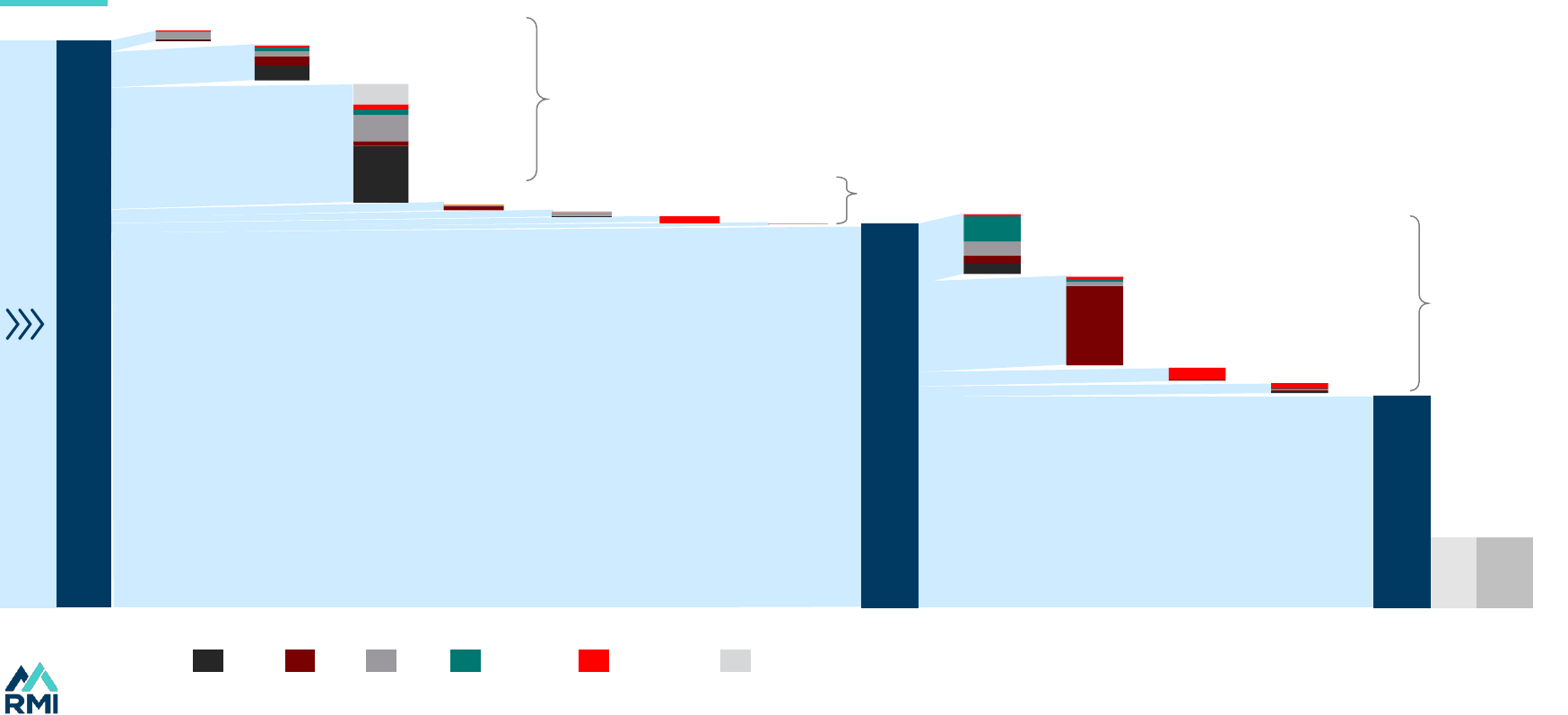
42
606
411
227
Sources: IEA, IIASA, RMI. For more see The Incredible Ineffciency of the Fossil Fuel System.
Coal Gas ElectricityOil OtherBiomass
Primary energy
Final energy
Energy
use losses
Energy production losses
126
Power
generation
Extraction
Fuel processing39
12
Heat
14
94
Other
Work
Light
11
65
Other
Wires
Pipes
Ships
5
<1
6
7
Energy transportation losses
Useful
energy
Energy
services
Two thirds of all fossil fuel primary energy is wasted in thermodynamic and system losses
Energy system flows, EJ, 2019
Fossil fuels are extremely inefficient

43
Cleantech is 3 times more efficient
Source: IEA, IIASA, RMI analysis, Adapted from Prof. Tomas Kåberger. Note: Solar and wind’s 100% efficiency represents the fact that there are no conversion losses from primary to secondary energy.
Energy useEnergy production
Electricity Heating Transport
Losses
Fuel
Electricity
Electricity
Renewable
electricity
Fuel
Losses
Propulsion
Renewable
electricity
Losses
Propulsion
Fossil thermal
30%–40% efficiency
Internal com-
bustion engine
25%–40% efficiency
Wind and solar Electric vehicle
100% efficiency 80%–90% efficiency
2–3x 2–4x
as efficient as efficient
Fuel
Losses
Heat
Losses
Heat
Renewable
electricity
Ambient
heat
Gas boiler
85% efficiency
Heat pump
300%–400%
efficiency
3–4x
as efficient
Cleantech is around 3x more efficient than fossil technologies across applications
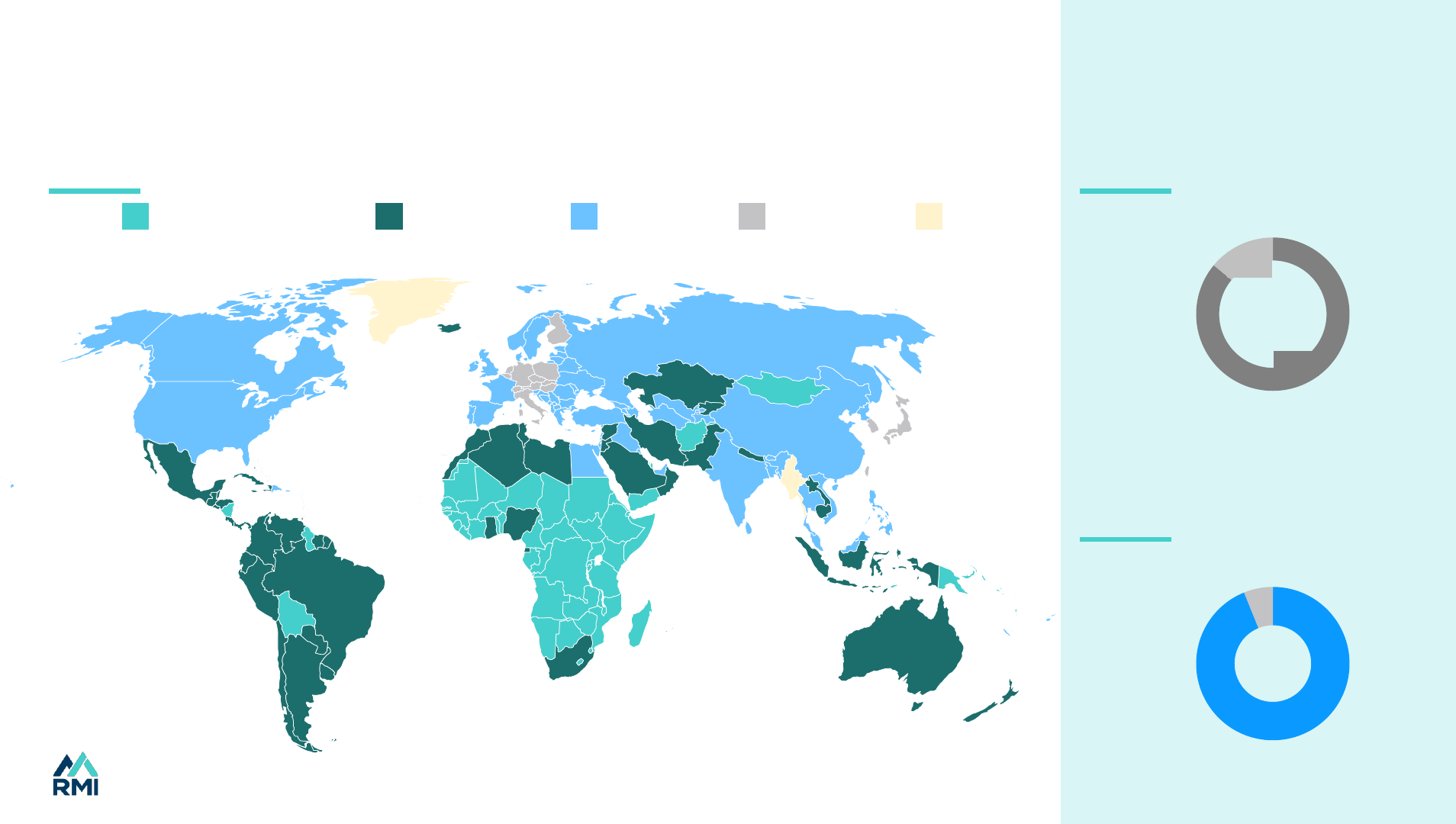
44
Renewables provide energy security
Source: Carbon Tracker, IRENA, Comtec, NREL, Solargis, RMI.
86%
Fossil fuel importers
14%
Fossil fuel exporters
92%
Replete to superabundant
6%
Stretched
Replete: >10x Stretched: <10xSuperabundant: >1,000x Abundant: >100x
Renewable potential as a multiple of energy demand
They are 100x bigger than fossil fuels, and every country has them
Share of population living in
countries that import fossil fuel
Share of population endowed
with replete or better
renewable resource
No data
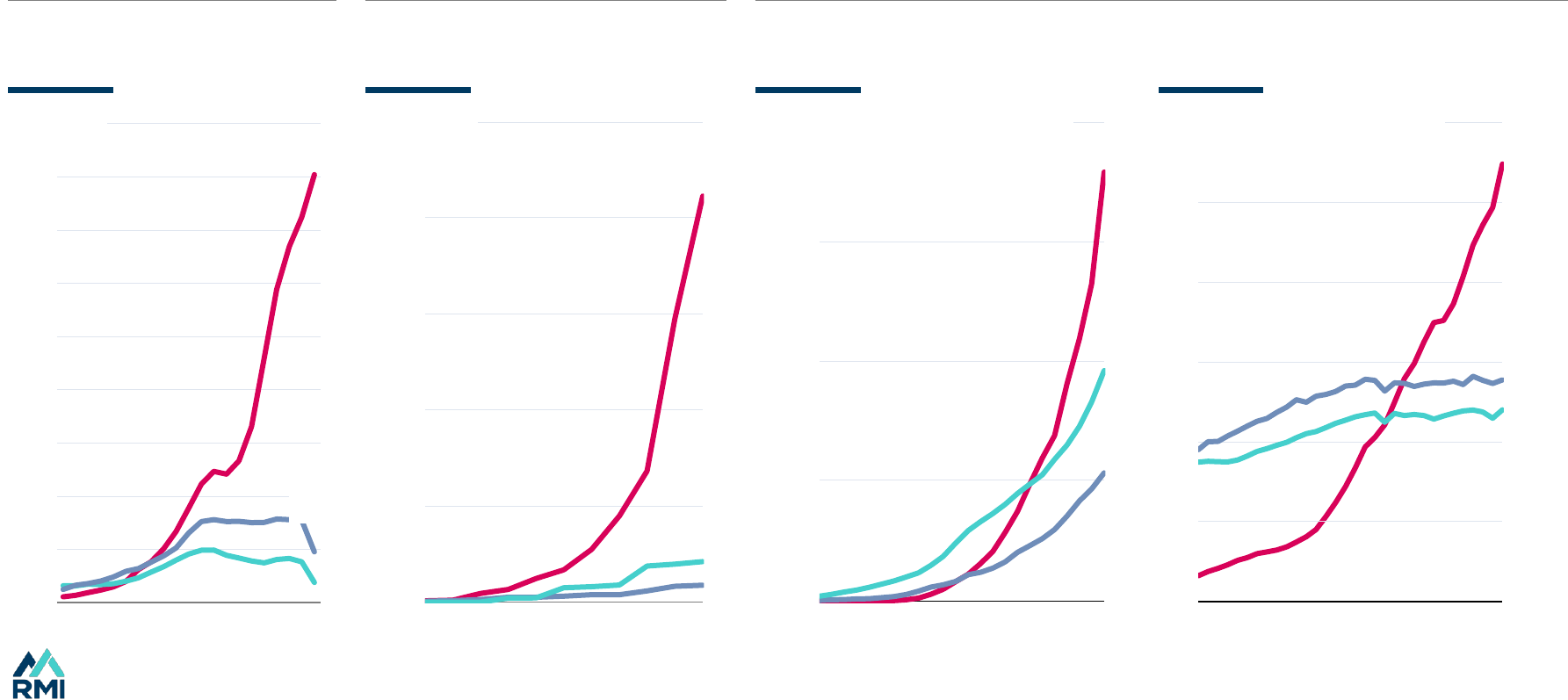
45
Source: IRENA, IEA, BNEF. For more see X-Change: The Race to the Top.
The world’s largest energy consumer is moving fast
Patent Make
0
20
40
60
80
100
120
140
160
180
2000 2005 2010 2015 2020
1,500
1,000
2,000
500
2,500
0
2013 2017 2023
EJ electricity consumption
Clean energy patents
Battery manufacturing
capacity
000s
GWh
Deploy
0
5
10
15
20
25
30
1990 1995 2000 2005 2010 2015 2020
China
US
Europe
0
300
600
900
2000 2005 2010 2015 2020 2023E
China is leading the way to patent, make, and deploy the energy technologies of the future
GW solar and wind capacity
ElectrificationRenewables
1,200
180
China
US
Europe
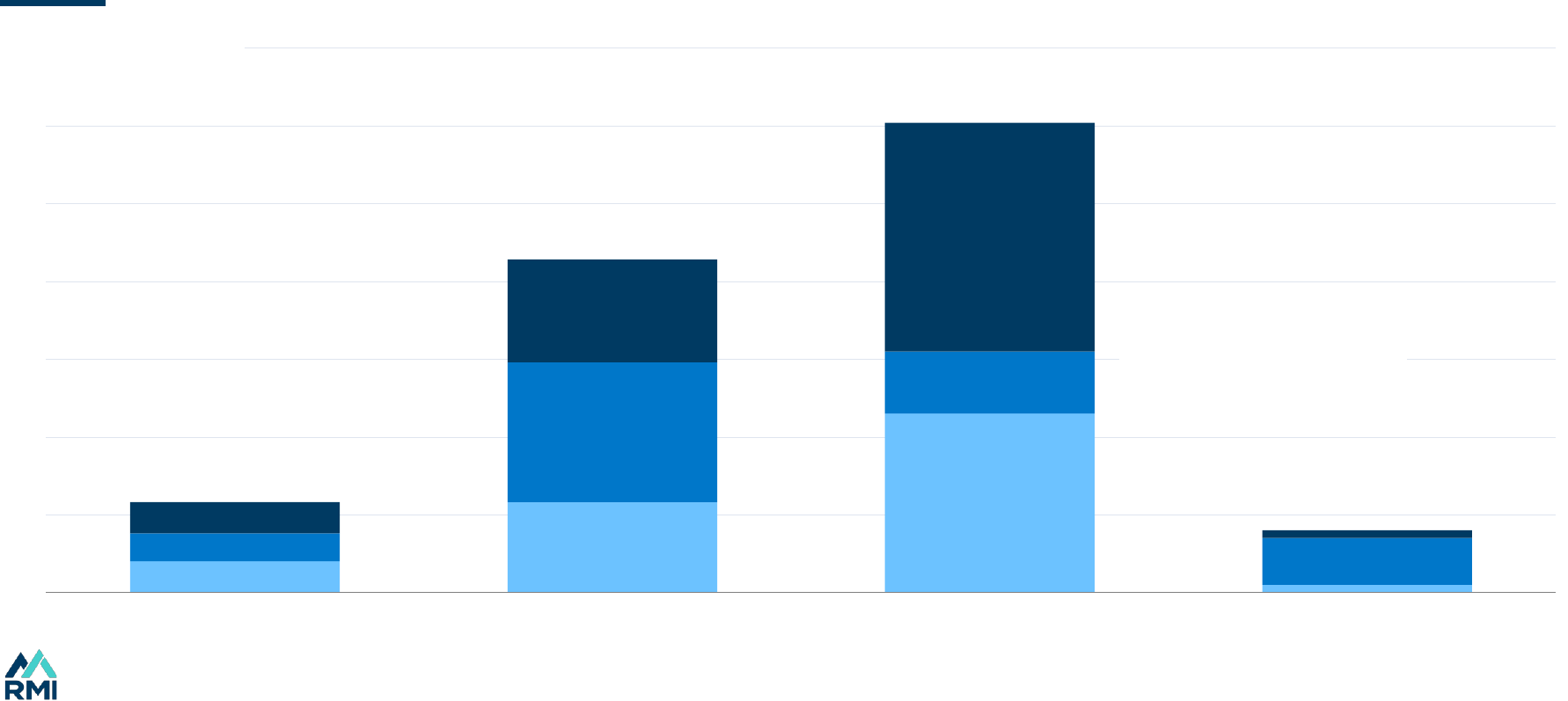
46
Cleantech is now a key driver of GDP growth all over the world
Everyone wants a piece of the action
Source: IEA.
0
5
10
15
20
25
30
35
United states China European Union India
Contribution of cleantech to GDP growth, 2023
% of GDP growth
Deployment of clean
power capacity
Sales of EVs and heat
pumps
Manufacturing of clean
energy technologies
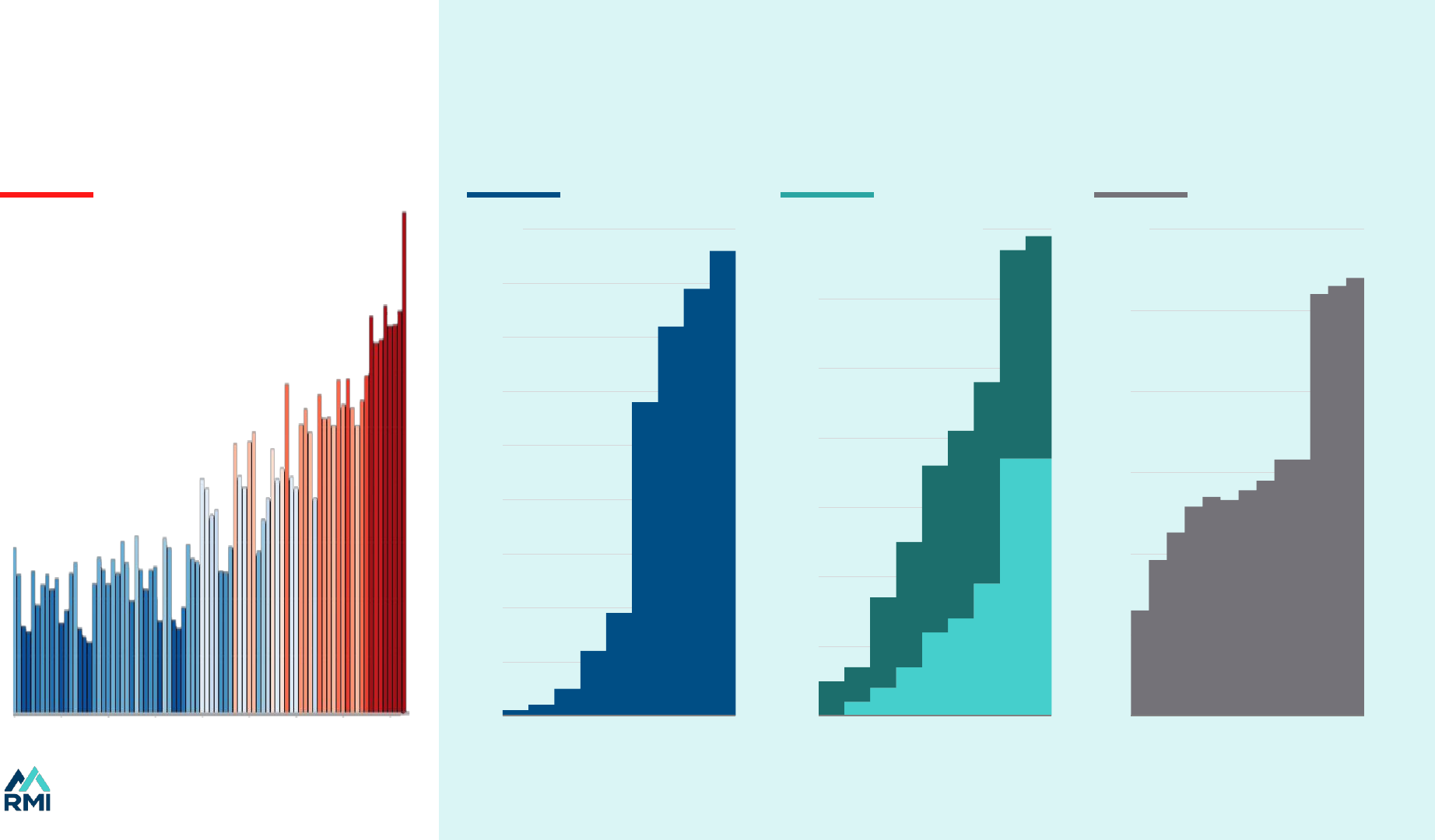
4747
10
20
15
25
5
30
0
2011 2015 2019 2023
%
Source: IEA, BNEF, World Bank/OWID.
Change is not uniform, but it is relentless at a global level
…so policy pressure will continue to rise
0
10
20
30
40
50
60
70
80
90
2015 2017 2019 2021 2023
30
50
40
60
20
70
10
0
2017 2019 2021 20232015
Net-zero targets Combustion car bans Carbon prices
The world burns…
1940 20231960 1980 2000 2010
17 °C
15.8 °C
Record temperatures
Share of
emissions
covered
National
Regional
& municipal
Share of
emissions
covered
%
countries/regions
Source: C3S. Surface temperatures.
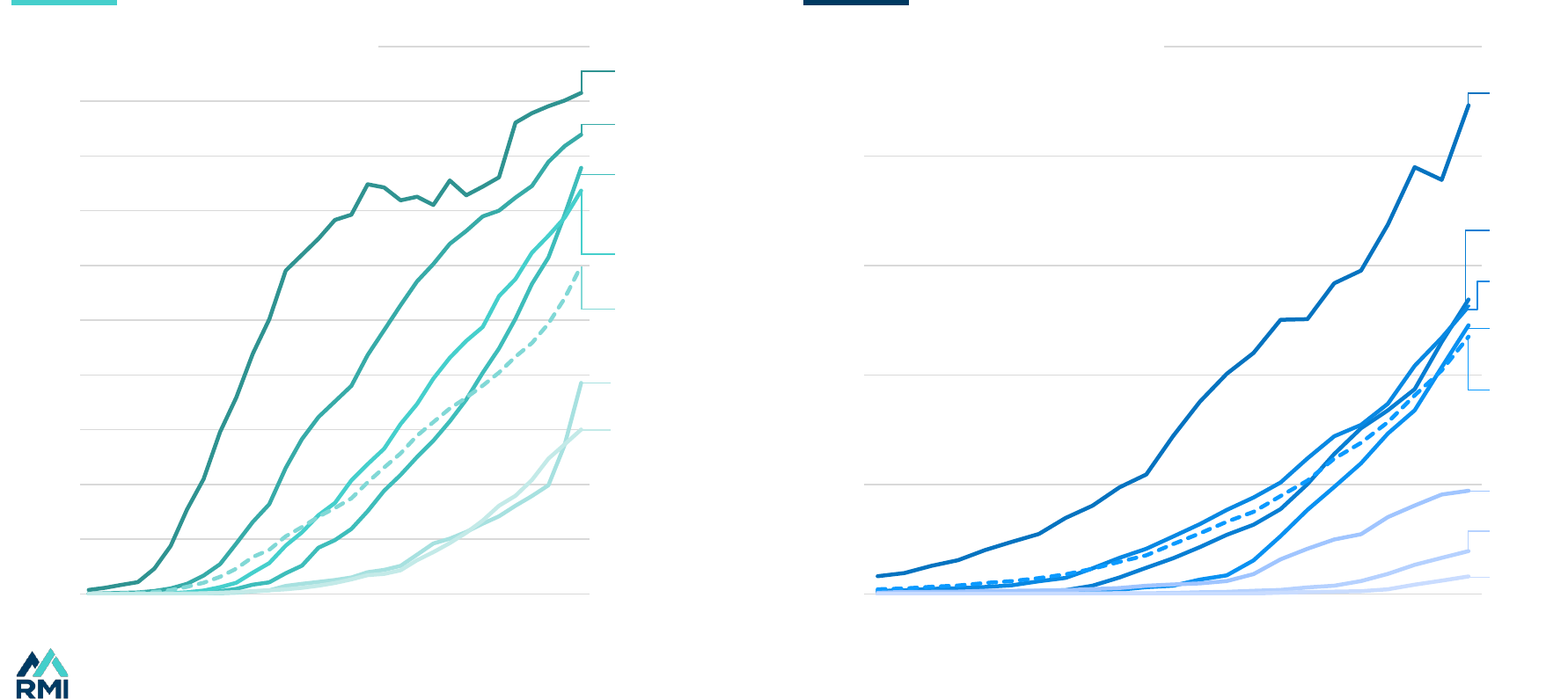
48
Adoption moves from early adopters to laggards up a series of S-curves. This time anyone can be a leader
Cleantech adoption resembles that of the internet
Source: OWID, Energy Institute.
Share of population using the Internet Solar and wind as a share of generation
0%
5%
10%
15%
20%
25%
2000 2002 2004 2006 2008 2010 2012 2014 2016 2018 2020 2022
0%
10%
20%
30%
40%
50%
60%
70%
80%
90%
100%
1990 1997 2004 2011 2018
North America
Europe and
Central Asia
Middle East and
North Africa
Latin America
and Caribbean
World
South Asia
Sub-Saharan
Africa
EU
China
North
America
South
America
World
Africa
Middle
East
CIS
of electricity from wind and solarof population using the internet
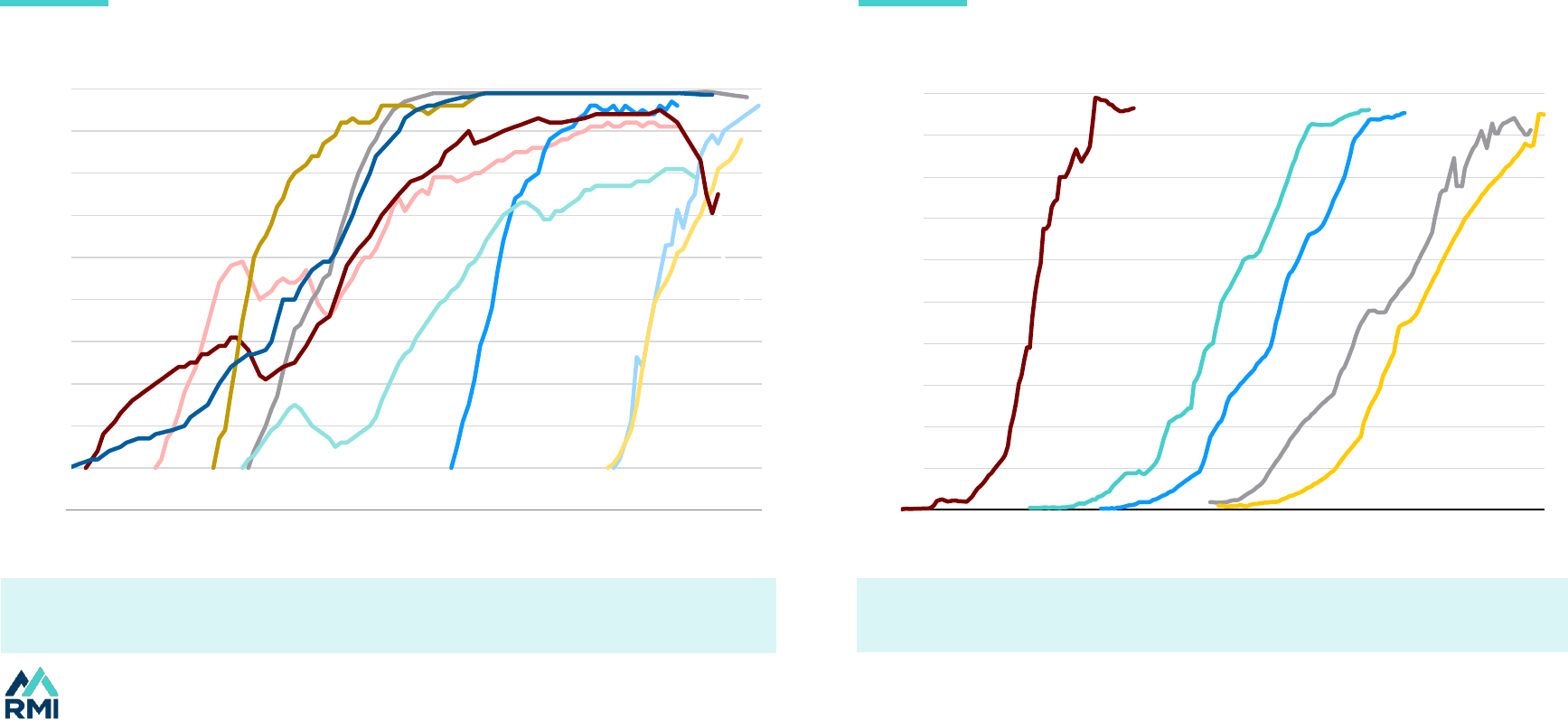
49
Rapid exponential growth along S-curves is a standard characteristic of
successful new technologies.
S-curve-type growth even applies to infrastructure.
Technological adoption by household in the United States Share of maximum size in the United States
Source: Comin & Hobijn via OWID (L); Grubler (R).
0
10
20
30
40
50
60
70
80
90
100
1800 1820 1840 1860 1880 1900 1920 1940 1960 1980 2000
Individual products Infrastructure systems
0
10
20
30
40
50
60
70
80
90
100
We’ve seen this movie before. We know how technology shifts work
S-curves as usual, not business as usual
1900 1910 1920 1930 1940 1950 1960 1970 1990 2000 2010
%
%
%
%
%
%
%
%
%
%
%
%
%
%
%
%
%
%
%
%
Canals
Railways
Telegraphs
Oil
pipelines
Roads
Radio
Car
Landline
Stove
Washing
machine
Cellphone
Internet
Color TV
Refrigerator

50
0%
20%
40%
60%
80%
100%
S. & C.
America
Japan
Other Asia
Pacific
Africa
ChinaNorth America IndiaCISEurope Middle
East
Share of electricity generation
We should focus on the opportunities before our very eyes, not on potential end-game barriers
Technologies cascade across geographies
Source: Energy Institute, RMI. For more see X-Change: Electricity.
Harder
Easier
Other clean Solar + Wind Fossil fuels

51
100%
80%
40%
20%
0%
60%
Other
industry
Light industry
Petchem
Road transportSteelOtherBuildings Transport
other
Non-energy
Final energy supply by sector
Every sector has low-hanging fruit at the frontier
Technologies cascade across sectors
Source: BNEF for final energy supply 2022, RMI.
Other clean Electricity Fossil fuels
Harder
Easier
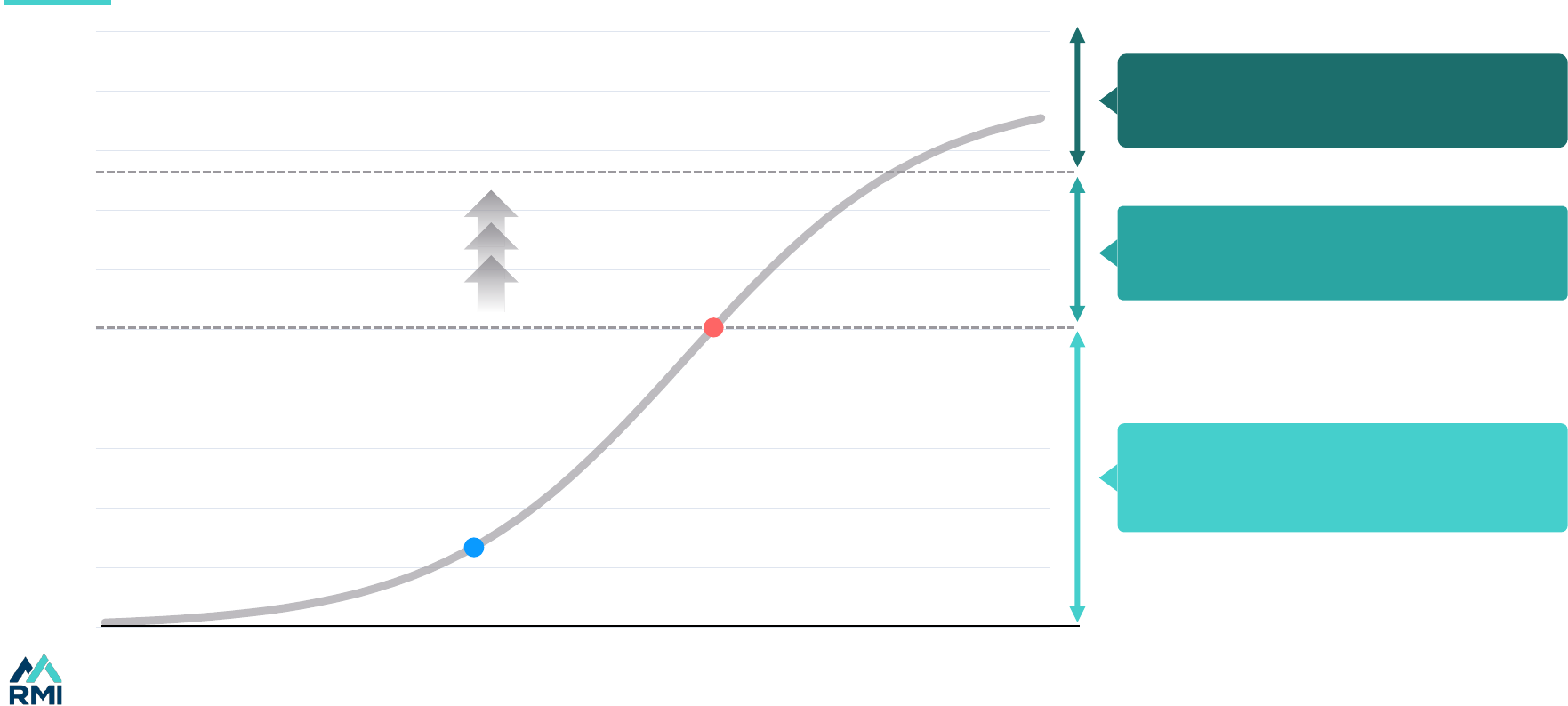
52
0%
10%
20%
30%
40%
50%
60%
70%
80%
90%
100%
The world is here
Innovation raises the
ceiling of the possible
Leading countries and companies keep opening up new opportunities for the rest of the world
The ceiling of the possible keeps rising
Source: RMI
Solar and wind as share of electricity generation
ENDGAME PROBLEM
A challenge for tomorrow’s leaders
WE HAVE SOLUTIONS
Technical and economic solutions
exist
CUTTING EDGE OF CHANGE
A challenge for today’s leaders
The leaders are here

53
53
Index
Implications for the energy system
• If change continues on S-curves, then by 2030 we expect solar sales of over 1,000
GW a year and battery sales of over 6,000 GWh a year.
• S-curves imply that by 2030 solar and wind generation will triple to over 12,000
TWh and EVs will be two-thirds of car sales.
• The annual electrification rate is likely to more than double to 0.5% in 2030 as
transport joins the party, and success in China drags up electrification rates
elsewhere.
• Annual efficiency gains are likely to double from the 1.5% average of the past two
decades to at least 3% as the result of the rising share of renewables,
electrification, and a greater focus on end-use efficiency.
• Renewables will push out fossil electricity, electrons will push out molecules, and
efficiency will reduce waste. In a typical X shaped pattern.
• Over 75% of fossil fuel demand today is threatened by rapidly growing cleantech
alternatives.
• Fossil fuel demand will be squeezed between efficiency and cleantech. The demand
plateau will last until the end of the decade, and then clear decline will set in.
5
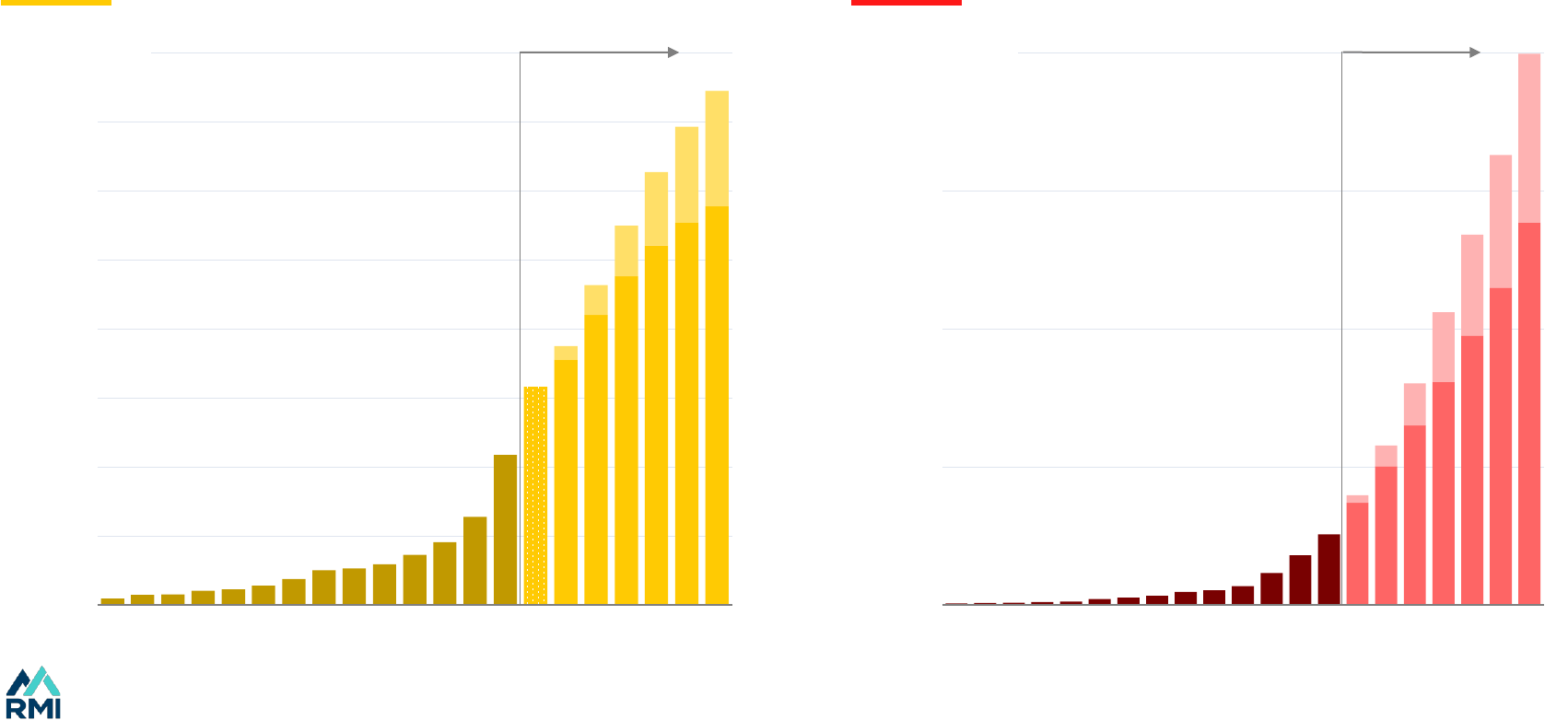
54
Super-fast growth in solar and battery sales
Global solar sales Global battery sales
Solar sales are on track for over 1,000 GW per year by
2030
Battery sales are likely to be over 6,000 GWh a year by
2030
Source: BNEF historical and 2024E for solar (high), RMI S-curves. For more see X-Change: Batteries.
0
200
400
600
800
1,000
1,200
1,400
1,600
2010 2015 2020 2025 2030
Past
Fast
Faster
Outlook
GW
0
2,000
4,000
6,000
8,000
2010 2015 2020 2025 2030
Past
Fast
Faster
Outlook
GWh
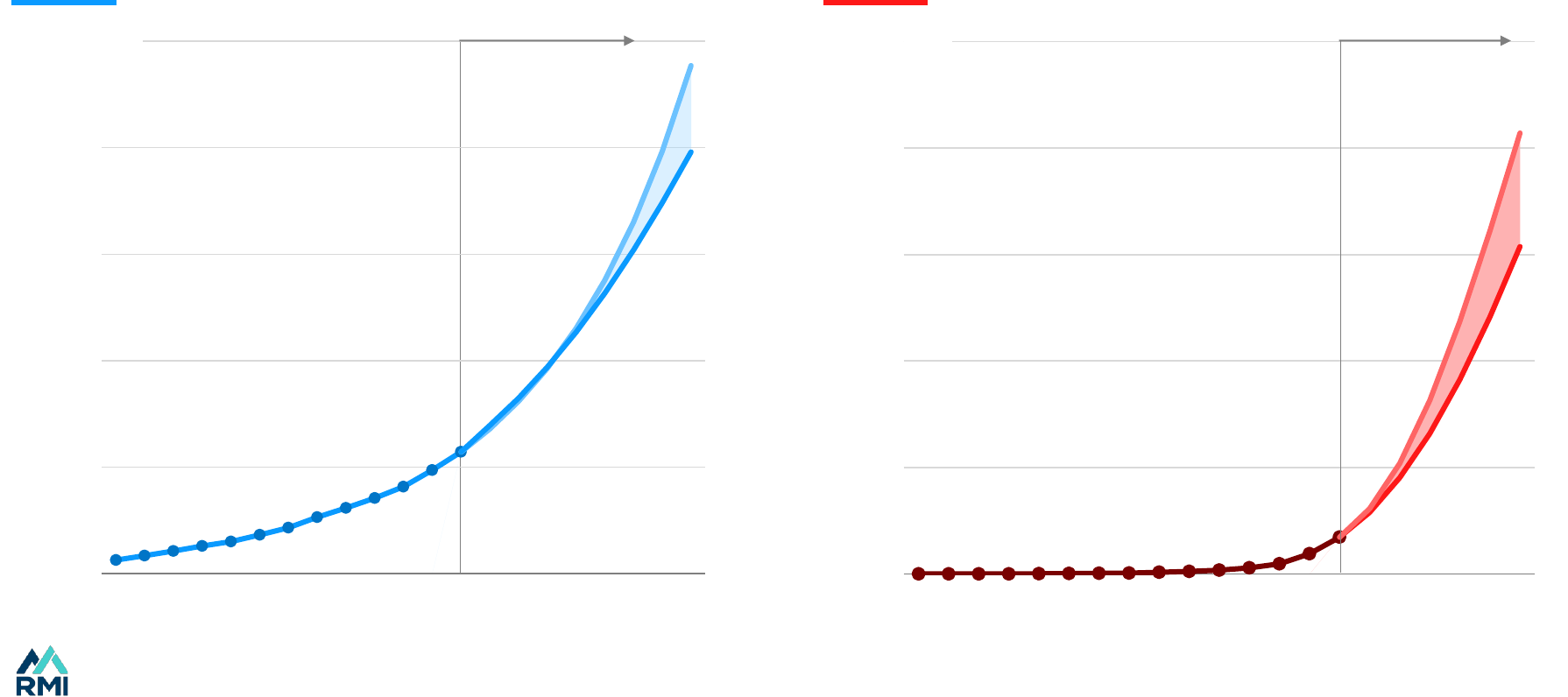
55
Source: Energy Institute, BNEF, RMI S-curves. For more see X-Change: Electricity.
0
3,000
6,000
9,000
12,000
15,000
2010 2015 2020 2025 2030
Faster
Fast
0
1,000
2,000
3,000
4,000
5,000
2010 2015 2020 2025 2030
Solar and wind generation Battery stationary storage
As the renewable revolution will continue to solve barriers to change
Outlook
Renewables will keep rising up their S-curves
Outlook
TWh GWh
Faster
Fast
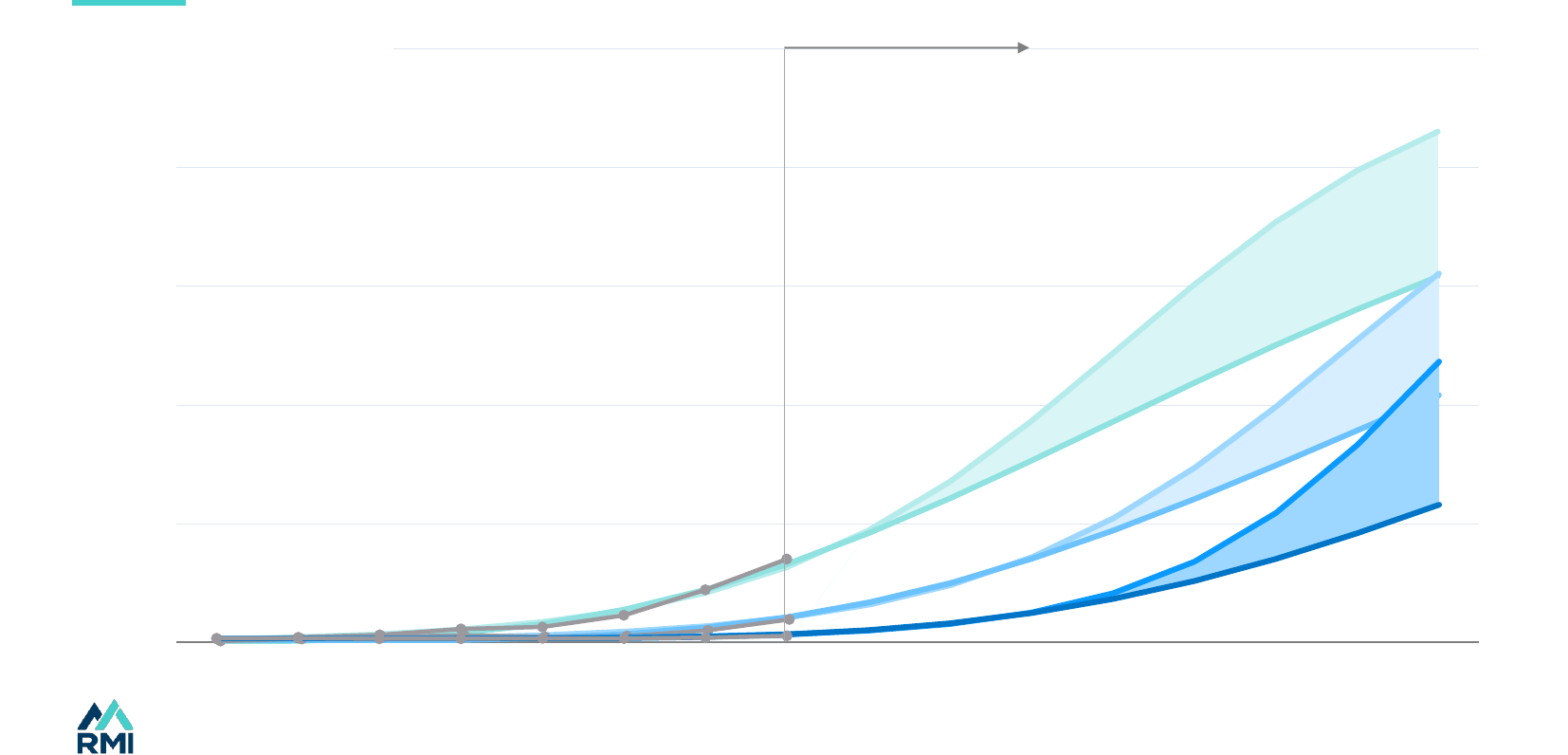
56
0%
20%
40%
60%
80%
100%
2015 2020 2025 2030
of global sales
Where cars go, vans and trucks follow
The electric vehicle domino effect will continue
Source: BNEF, RMI S-curves. For more see X-Change: Batteries.
Cars
The electric vehicle domino
Light commercial
vehicles
Trucks
Outlook
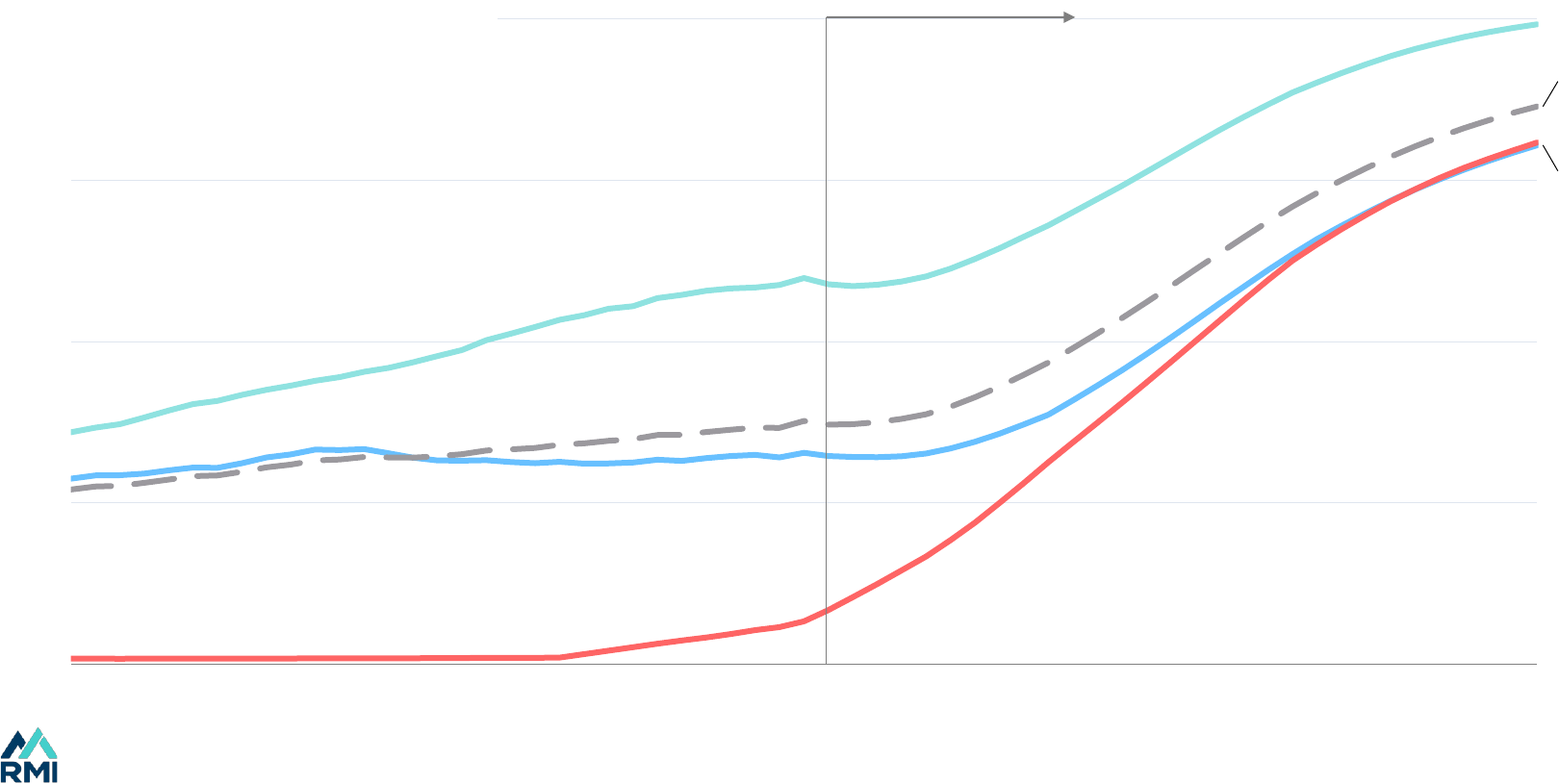
57
Transport is joining the party just as electrification picks up in other sectors
Electrification will pick up speed
Source: Rystad Energy 1.6°C.
0%
20%
40%
60%
80%
1990 2000 2010 2020 2030 2040 2050
Industry
Transport
Buildings
Total
Outlook
of useful energy from electricity
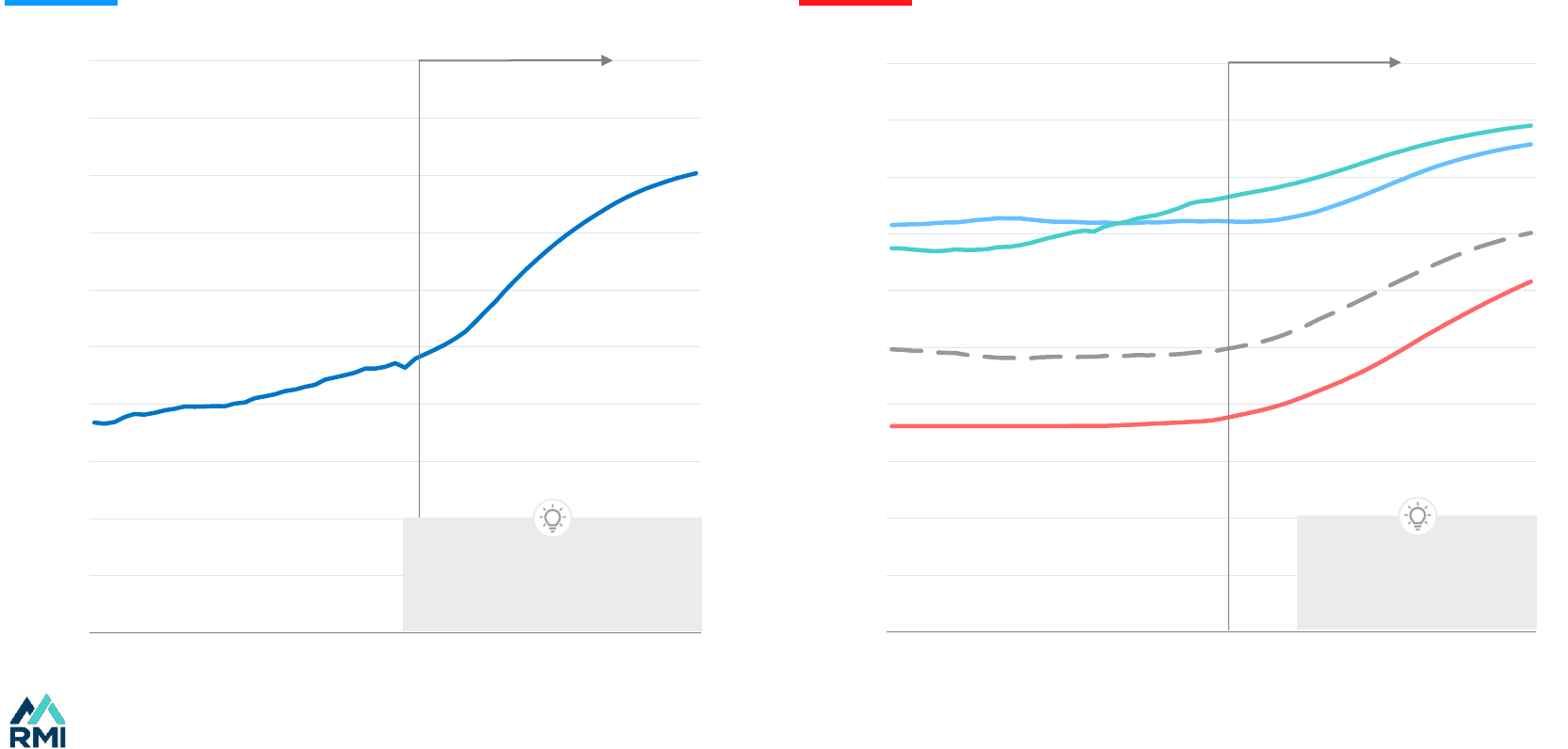
58
Faster cleantech deployment will speed up efficiency improvements
Efficiency will be pulled up the S-curve
Source: Rystad Energy 1.6 °C. Electricity efficiency is final as a share of primary. Sector efficiency is useful as a share of secondary.
0%
10%
20%
30%
40%
50%
60%
70%
80%
90%
100%
1990 2000 2010 2020 2030 2040 2050
0%
10%
20%
30%
40%
50%
60%
70%
80%
90%
100%
1990 2000 2010 2020 2030 2040 2050
Outlook
Industry
Buildings
Transport
Total
Electricity generation efficiency End-sector efficiency
Driven by higher
efficiency of electricity
versus fossil fuels
Outlook
Driven by renewables which
are about 2.5x more efficient
than fossil-fueled electricity
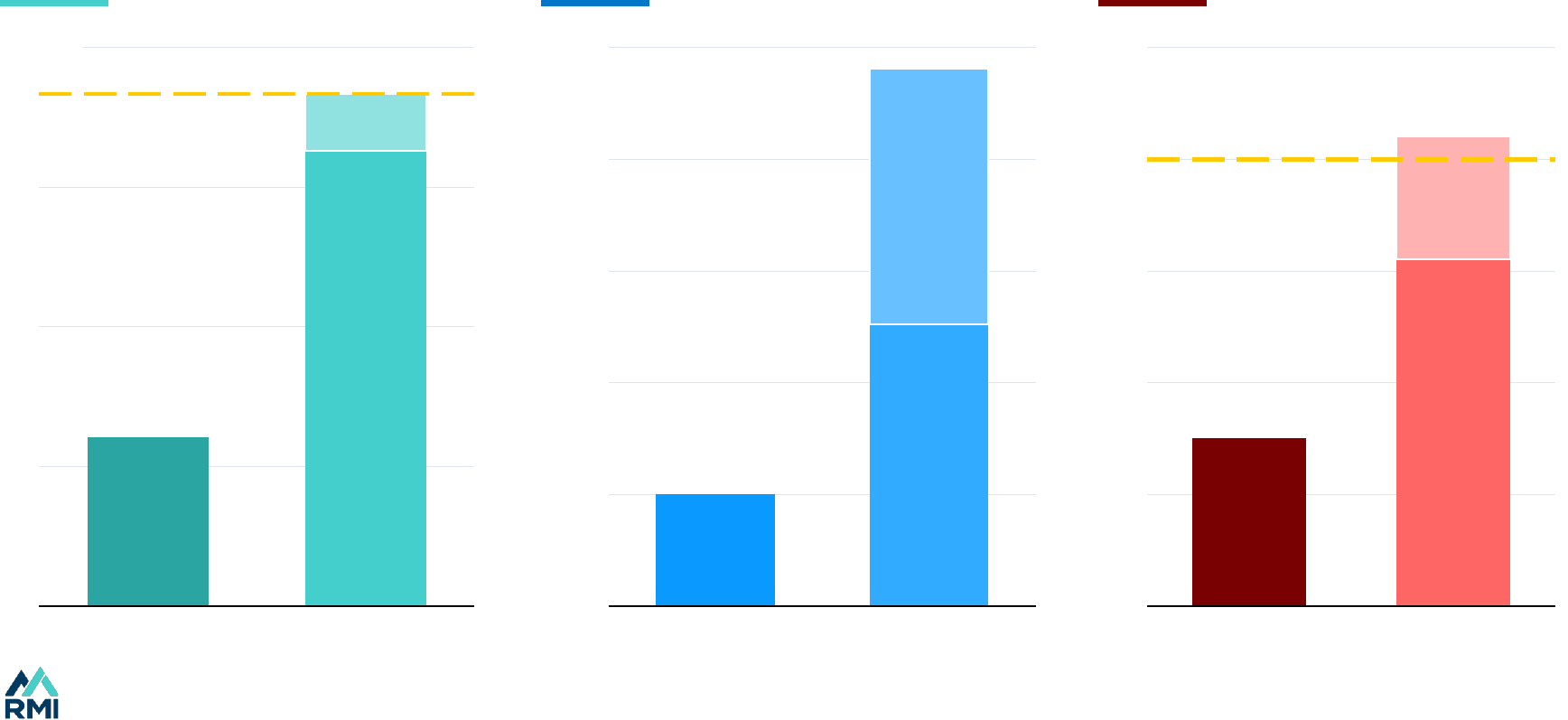
59
S-curves suggest we will triple renewables, and more than double electrification and efficiency rates
Tripling renewables by 2030
Source: IEA APS scenario as likely (Announced Pledges Scenario); NZE as feasible (net zero emissions).
Renewable capacity
Annual rate of electrification Annual primary efficiency gains
3
6
9
0
2022 2030
12
0.0%
0.2%
0.4%
0.6%
0.8%
1.0%
2022 2022-30
0%
1%
2%
3%
4%
5%
2000-22 2022-30
COP goal
“doubling down”
on annual
efficiency
improvement rate
versus 2022
Likely
Feasible
COP goal
“triple up”
renewables
from 2022
TW
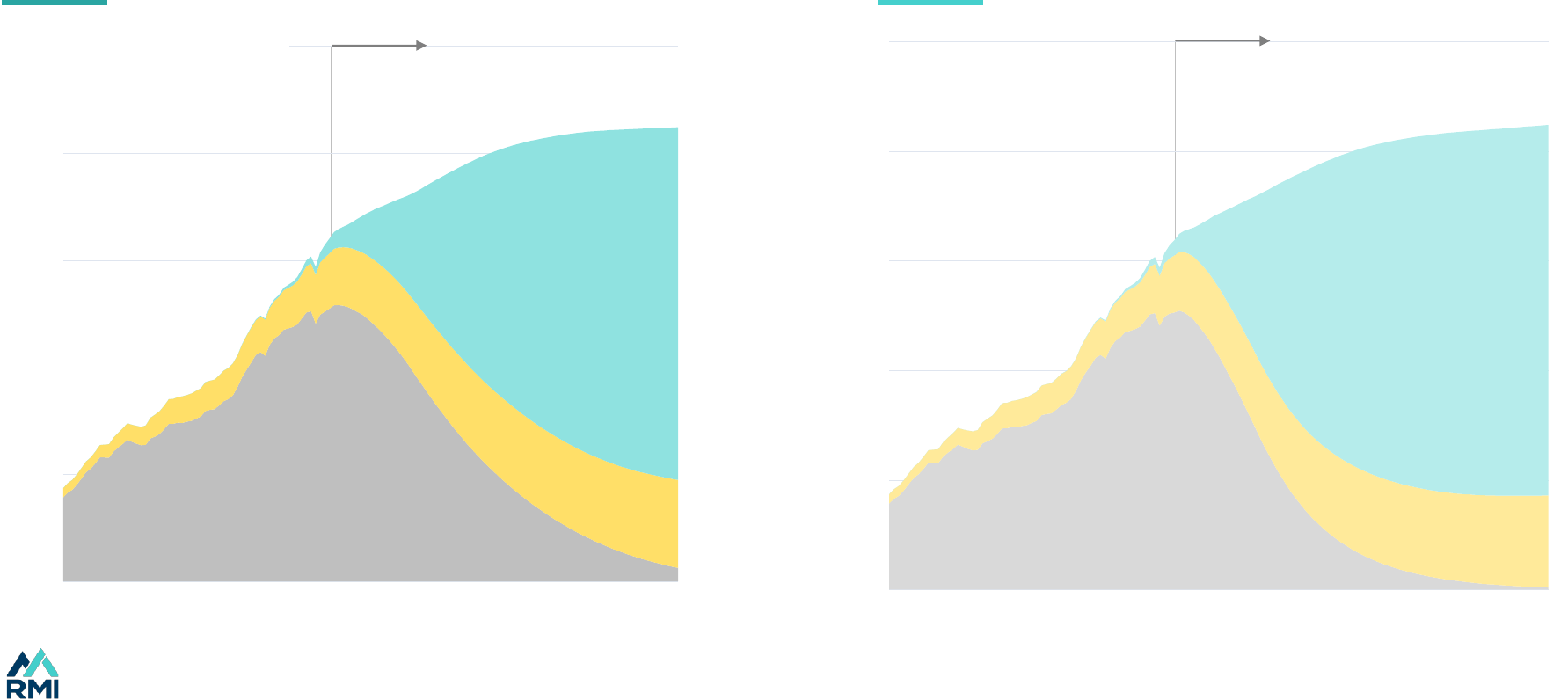
60
Outlook
Fast or faster; either we are off the fossil plateau by the late 2020s or by the early 2030s
A new energy system is coming
Source: Rystad 1.6° & 1.8°C degree scenario.
Faster, 1.6°C
20602020 21001980
Solar & wind
Other
Fast, 1.8°C
20602020 21001980
0
100
200
300
400
500
EJ of useful energy
Fossil fuels
Outlook
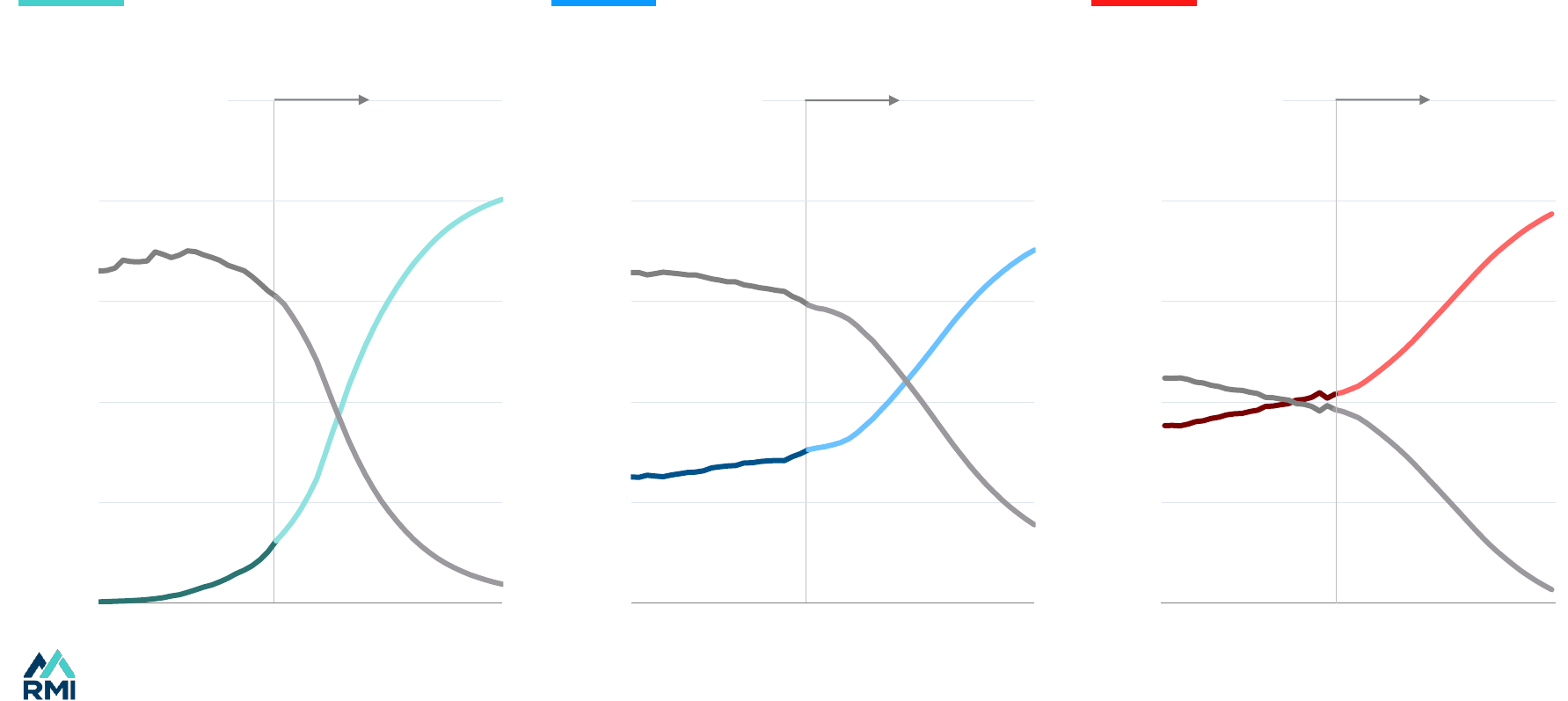
61
Outlook
Renewables push out fossil electricity, electrons push out molecules, and efficiency reduces waste
In with the new, out with the old
Source: Rystad Energy 1.6°C scenario.
0%
20%
40%
60%
80%
100%
2000 2010 2020 2030 2040 2050
0%
20%
40%
60%
80%
100%
2000 2010 2020 2030 2040 2050
30%
40%
50%
60%
70%
80%
2000 2010 2020 2030 2040 2050
Wasted
energy
Fossil
molecules
Electrons
Useful
energy
Fossil-fueled
electricity
Solar & wind
Outlook
Renewables beat fossil-fueled electricity Obedient electrons beat fiery molecules Efficiency beats waste
Renewables Electrification Efficiency
Outlook
of useful energy
of primary
energy
of electricity
generation
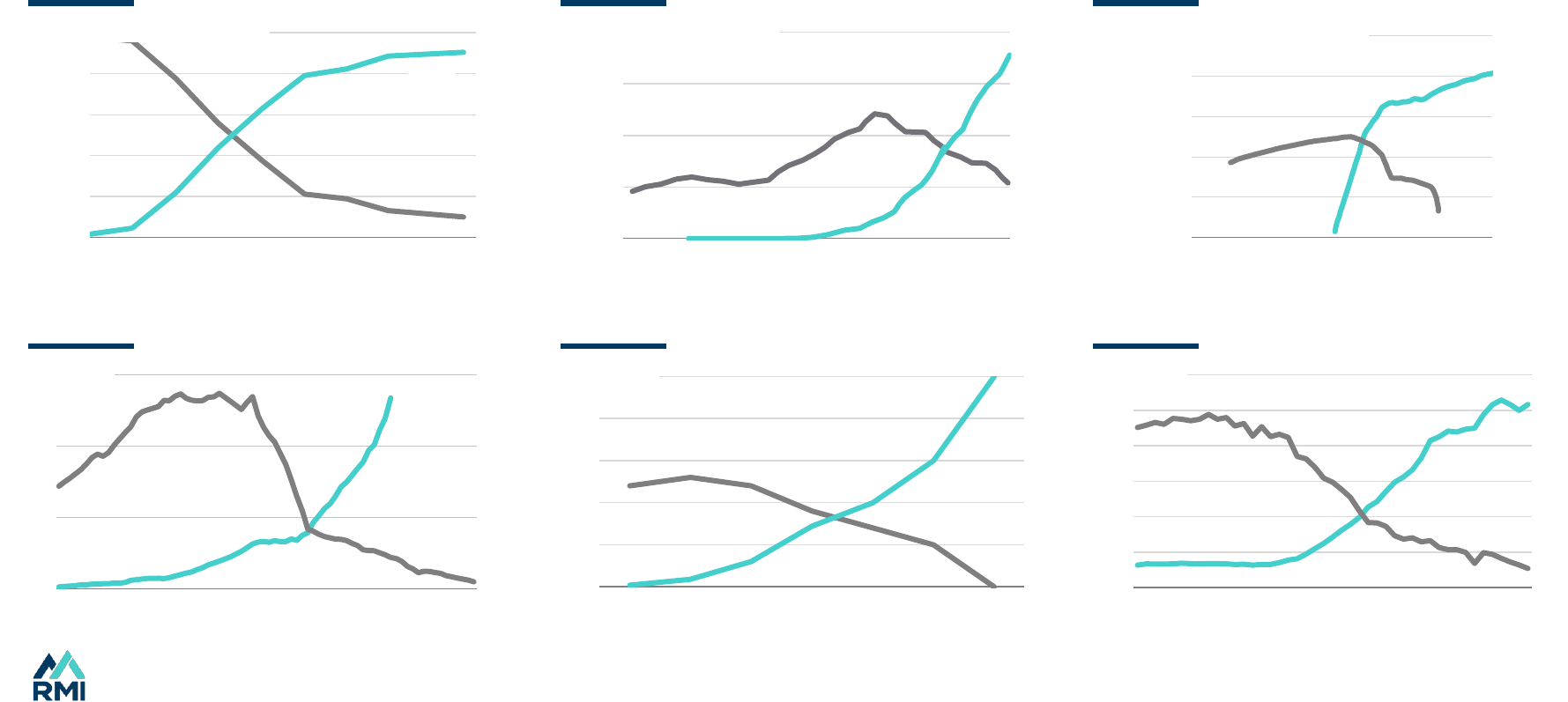
62
0
1
2
3
1885 1905 1925 1945
0
5
10
15
20
25
1900 1910 1920 1930 1940 1950 1960
0
5
10
15
20
25
30
1946 1956 1966 1976 1986
10
100
1,000
10,000
100,000
1,000,000
1830 1880 1930 1980
We have seen this X shaped pattern before
Source: Perez, Fouquet, Nakicenovic, Mitchell; Note: all UK charts except horses to cars (US).
0%
20%
40%
60%
80%
100%
1860 1880 1900 1920 1940
0
2,000
4,000
6,000
8,000
1800 1820 1840 1860 1880 1900
Industry: Cast iron to steel Ships: Sailing ships to steamships Land transport: Horses to cars
Lighting: Gas to electricity Power: Steam to electricity Heat: Coal to gas
Coal
Gas
An X shaped technology transition is standard so we should not be surprised
Cars
Horses
Steam
Electricity
Electricity
Gas
Steamships
Sailing
ships
Steel
Cast iron
mtoe
share of production
000 units in fleet
fleet tonnage 000
mtoe mtoe
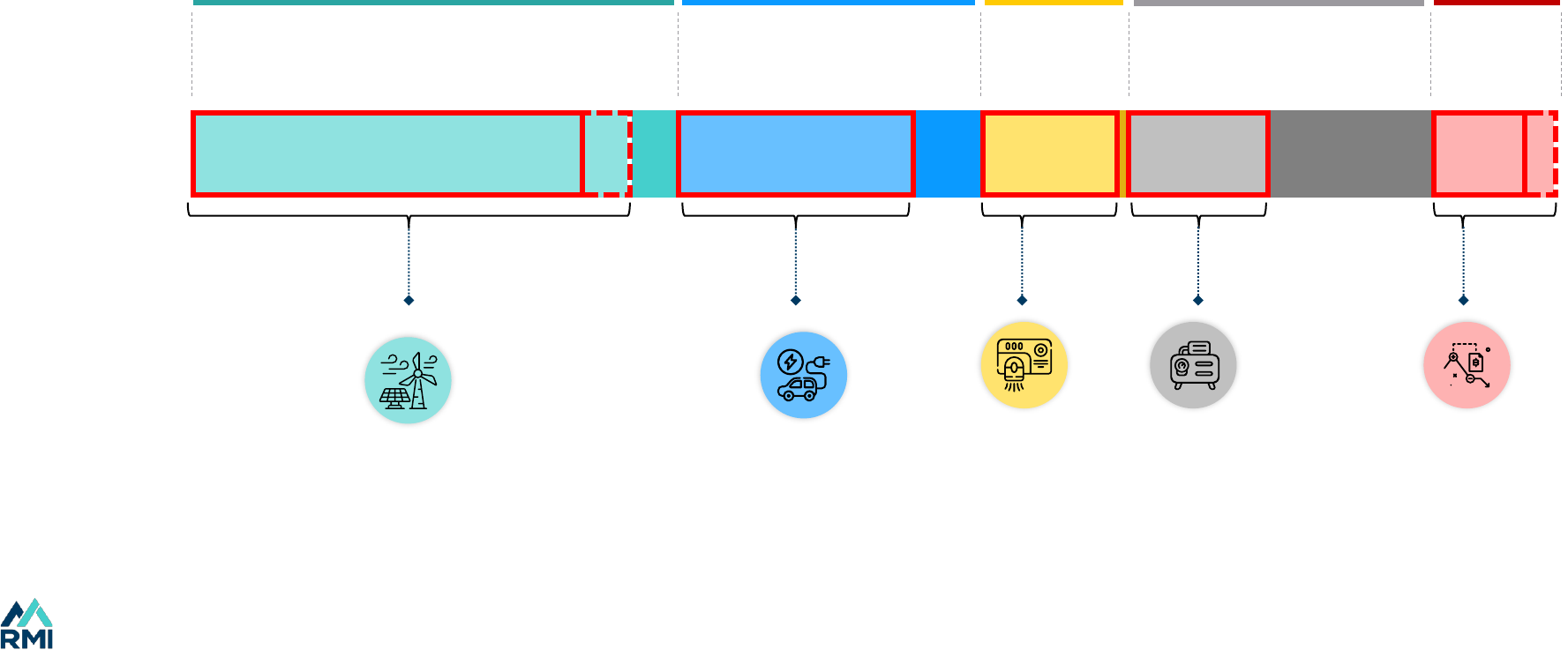
63
Over 75% of fossil demand today is under direct threat by exponentially growing cleantech
The largest areas of fossil fuel demand are most at risk
Source: IEA, IIASA, RMI.
Road Other Heat Other
Low temp.
heat
OtherBaseload
Last-mile
peak load
Fossil
extraction
and refining
Cleantech
rapidly
pushing
out fossils
Indirect
reduction due
to phase out of
fossil demand
Heat pumps
and electric
cooking
Industrial heat
pumps and other
electrification
Electric
vehicles
Solar and wind
Fossil fuel
demand by
sector, %
Demand at risk
Electricity Transport Buildings Industry
Energy
industry
Other renewables and
batteries
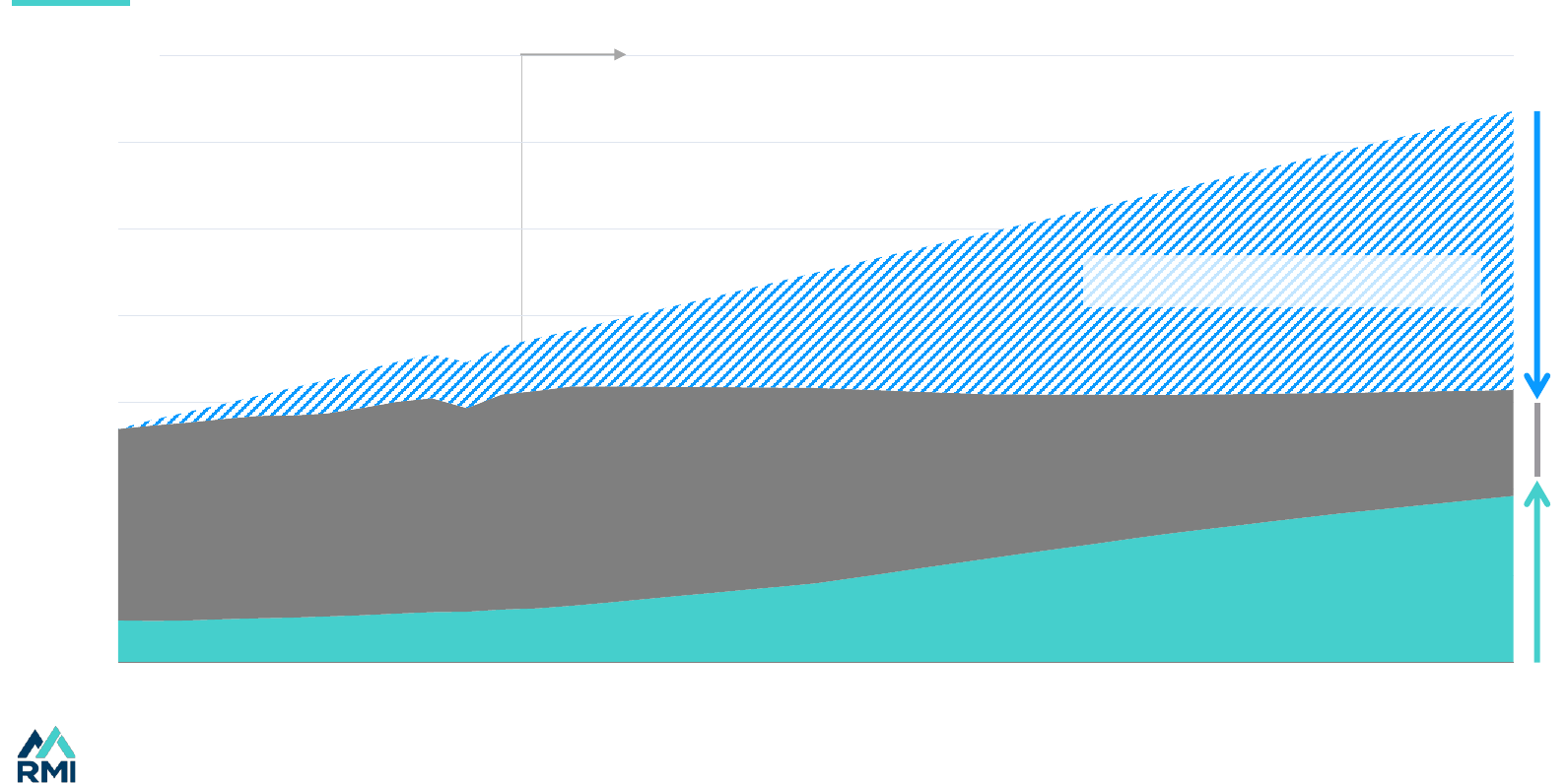
64
0
200
400
600
800
1,000
1,200
1,400
2010 2020 2030 2040 2050
Outlook
The growth of cleantech and rising efficiency will squeeze out fossil fuel demand
Fossil fuel demand gets squeezed
Source: IEA WEB, IEA APS scenario, RMI.
Efficiency
stops growth
in primary
energy
demand
Renewables
grow
Fossil fuels
are squeezed
in the middle
Avoided energy (Efficiency)
Fossil fuels
Clean energy
Primary energy supply
EJ
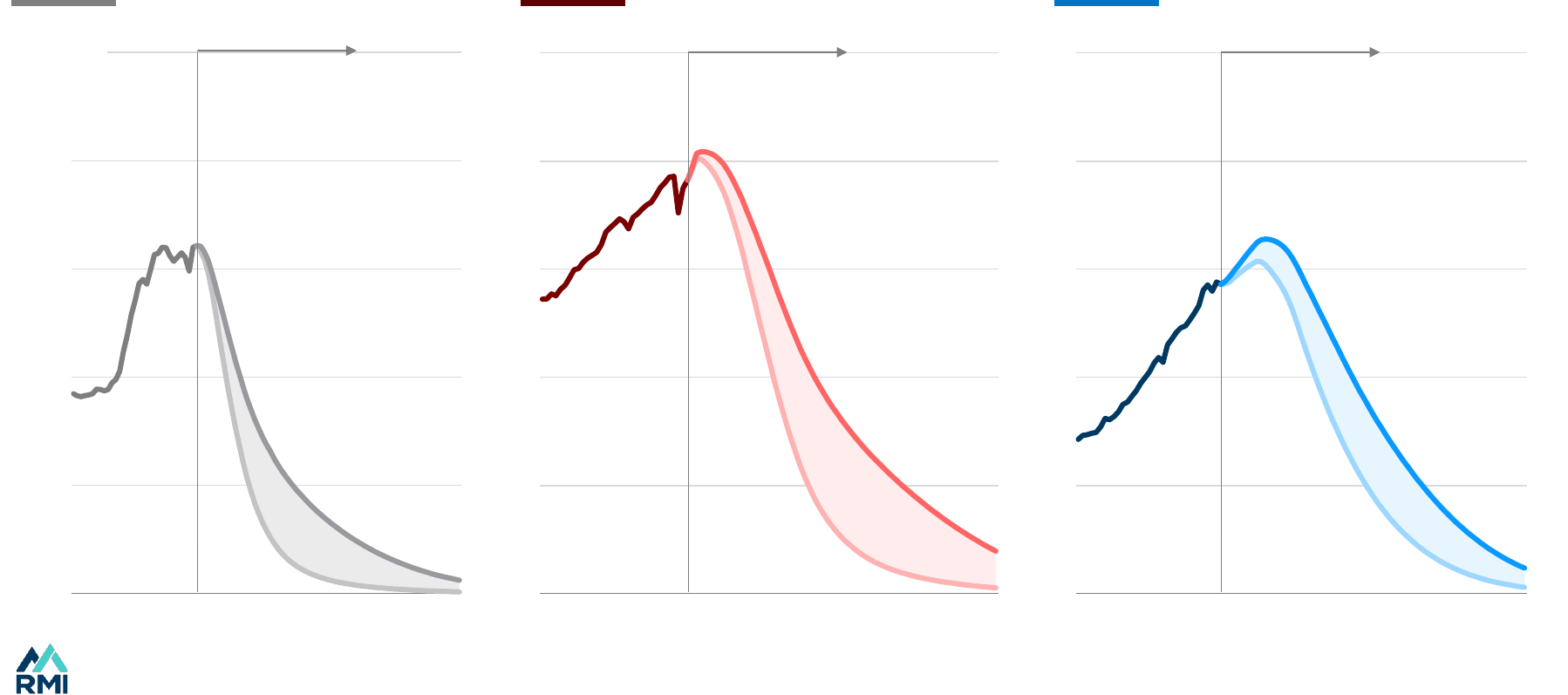
65
1990 2010 2030 2050 2070 2090
1990 2010 2030 2050 2070 2090
0
50
100
150
200
250
1990 2010 2030 2050 2070 2090
So fossil fuel demand is on the brink of rapid decline
Source: Rystad Energy (Fast 1.8°C, Faster 1.6 °C ).
Fast
Faster
Fast
Faster
Fast
Faster
Fossil fuel demand faces a cliff edge. The key variable is the length of the plateau — short or very short
Global coal demand
Global oil demand
Global gas demand
EJ
OutlookOutlookOutlook

66
66
• Paris is achievable because we are at the pivot point in the 300-year history of
fossil fuel use.
• The race for the top is on fire. A battle for leadership is taking place in every area
of energy supply and demand. Competition will drive change.
• The Global South can continue to leapfrog to cleantech. Witness the success of
Kenya, Barbados, Morocco, Vietnam or Bangladesh.
• We are at peak waste, so we can reduce the pressure on nature.
• The great capital reallocation will continue. Capital will shift into areas of growth
and out of those in decline.
• Stranded fossil fuel assets will result from the gap between the expectations
of incumbents for business-as-usual and the reality of exponential change.
• Since the fossil fuel system is huge ($50 trillion of fixed assets), this asset stranding
has profound implications for the financial system.
• As China is leading this transition, we need to benchmark to China.
• The debate will be very different by 2030 and the transition will be priced into
markets.
Index
Wider implications of the transition
6
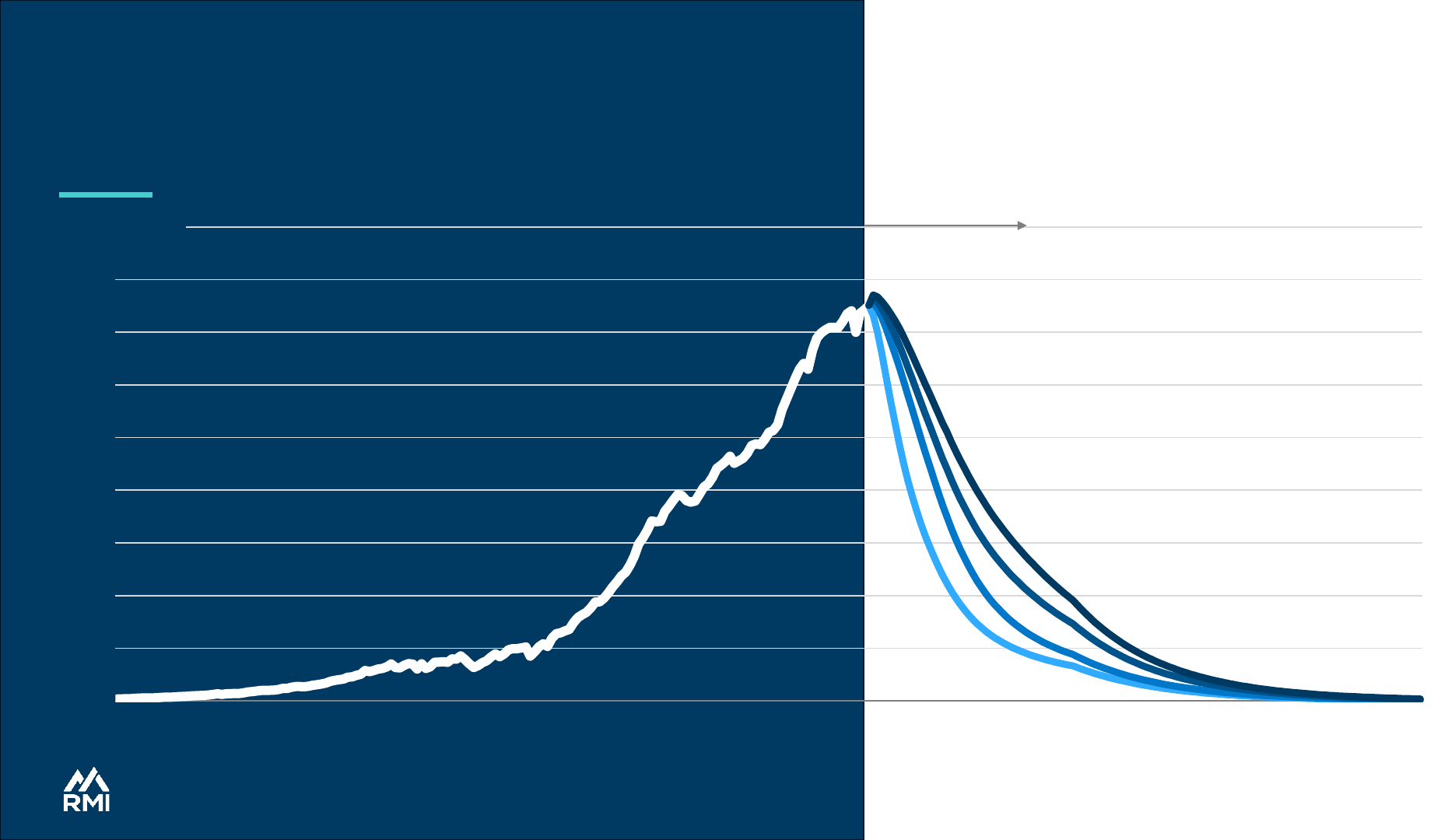
67
This is the pivot decade from growth to decline
Paris is feasible
Source: Global Carbon Project, OWID (1850-2023), Rystad Energy to 2023-2070; RMI illustrative onwards. Paris
here means the goal of the 2015 Paris Agreement to keep global warming well below 2°C .
0
5
10
15
20
25
30
35
40
45
1850 1900 1950 2000 2050 2100 2150
2050 2100 2150
1.5°C
1.8°C
Outlook
Global CO
2
emissions from energy
GtCO
2
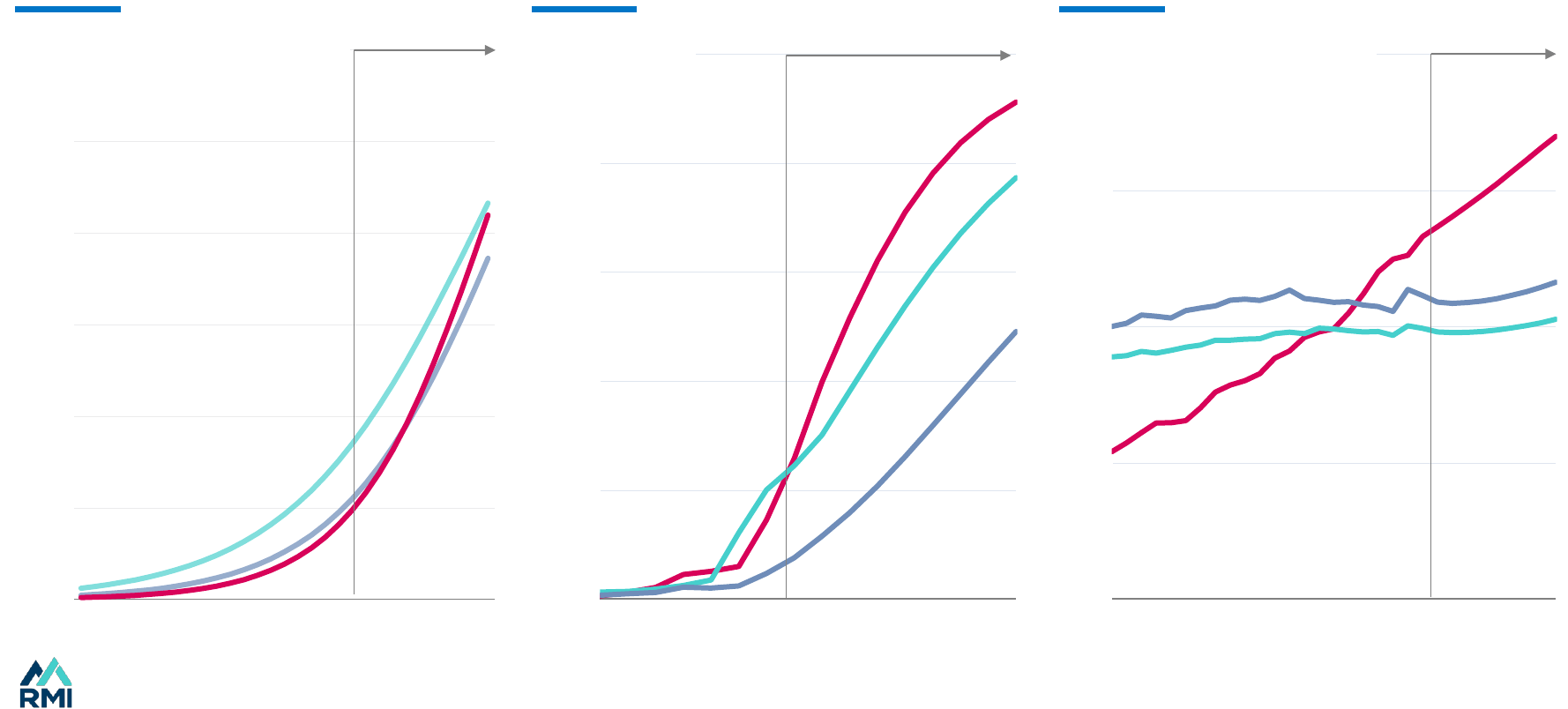
68
2000 2010
Nobody wants to miss out on the technologies of the future
The race for the top is on fire
Source: Energy Institute, IEA, BNEF, RMI analyses. For more see X-Change: The Race to the Top.
0%
20%
40%
60%
80%
100%
2015
2020 2025 2030
0%
10%
20%
30%
40%
50%
60%
Note: Solar, wind, and EVs in an S-curve outlook based on RMI modeling; electrification is from BNEF’s ETS.
0%
10%
20%
30%
40%
2000 2005 2010 2015 2020 2025 2030
2020 2030
S-curve outlook
S-curve outlook
BNEF outlook
generation from solar and wind
Renewables Electric vehicles Electrification
car sales EV of final energy from electricity
China
United States
Europe
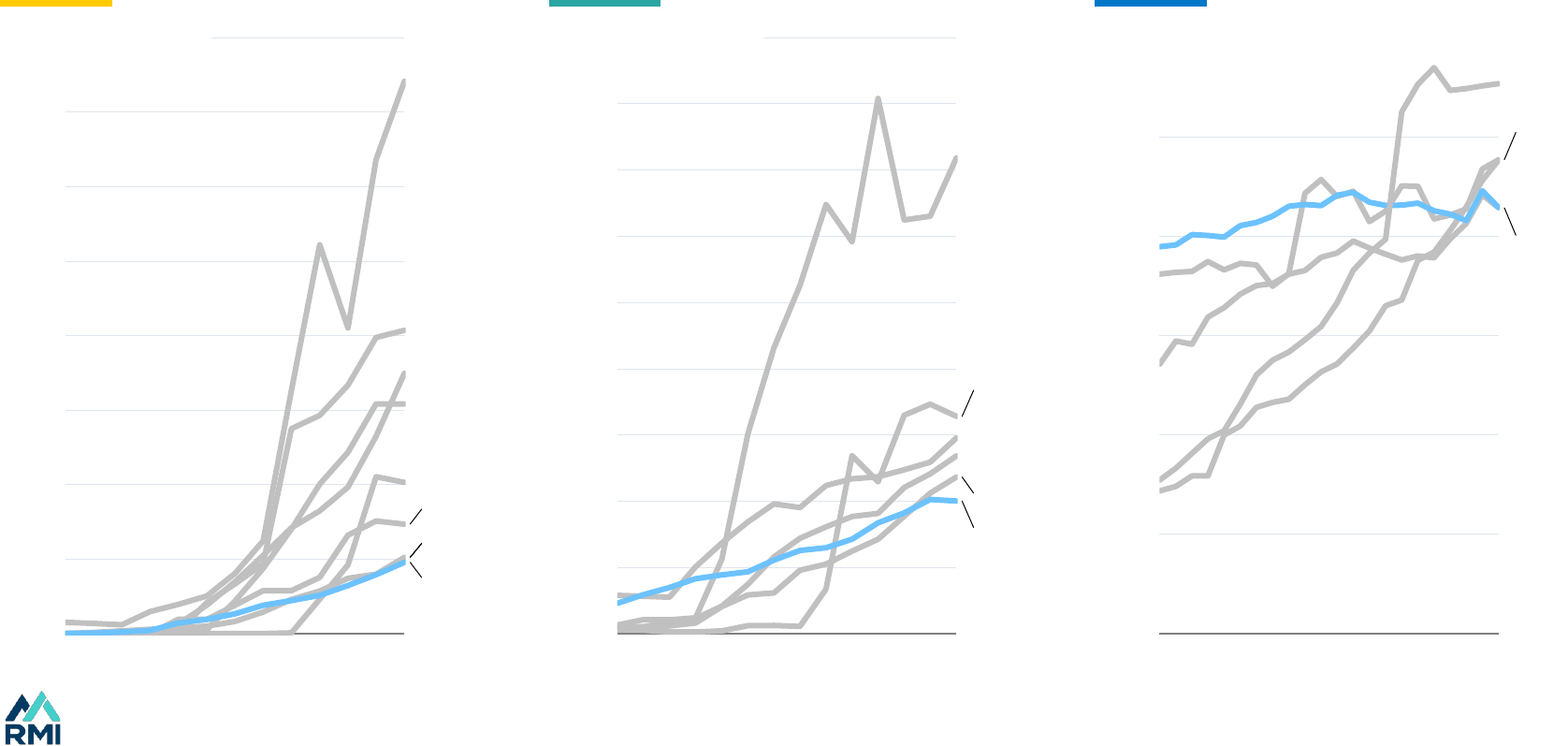
69
Falling costs open up new opportunities to bring energy to those who lack it
The Global South can continue to leapfrog
Source: Ember, IEA.
0%
5%
10%
15%
20%
25%
30%
2000 2010 2020
Bangladesh
Malaysia
Philippines
United States
Vietnam
0%
5%
10%
15%
20%
25%
30%
35%
40%
2010 2020
Namibia
Yemen
Chile
Jordan
Vietnam
Barbados
India
US
0%
5%
10%
15%
20%
25%
30%
35%
40%
45%
2010 2020
Uruguay
Kenya
Morocco
Brazil
Chile
US
of generation of generation of final energy supply from electricity
Solar Wind Electrification
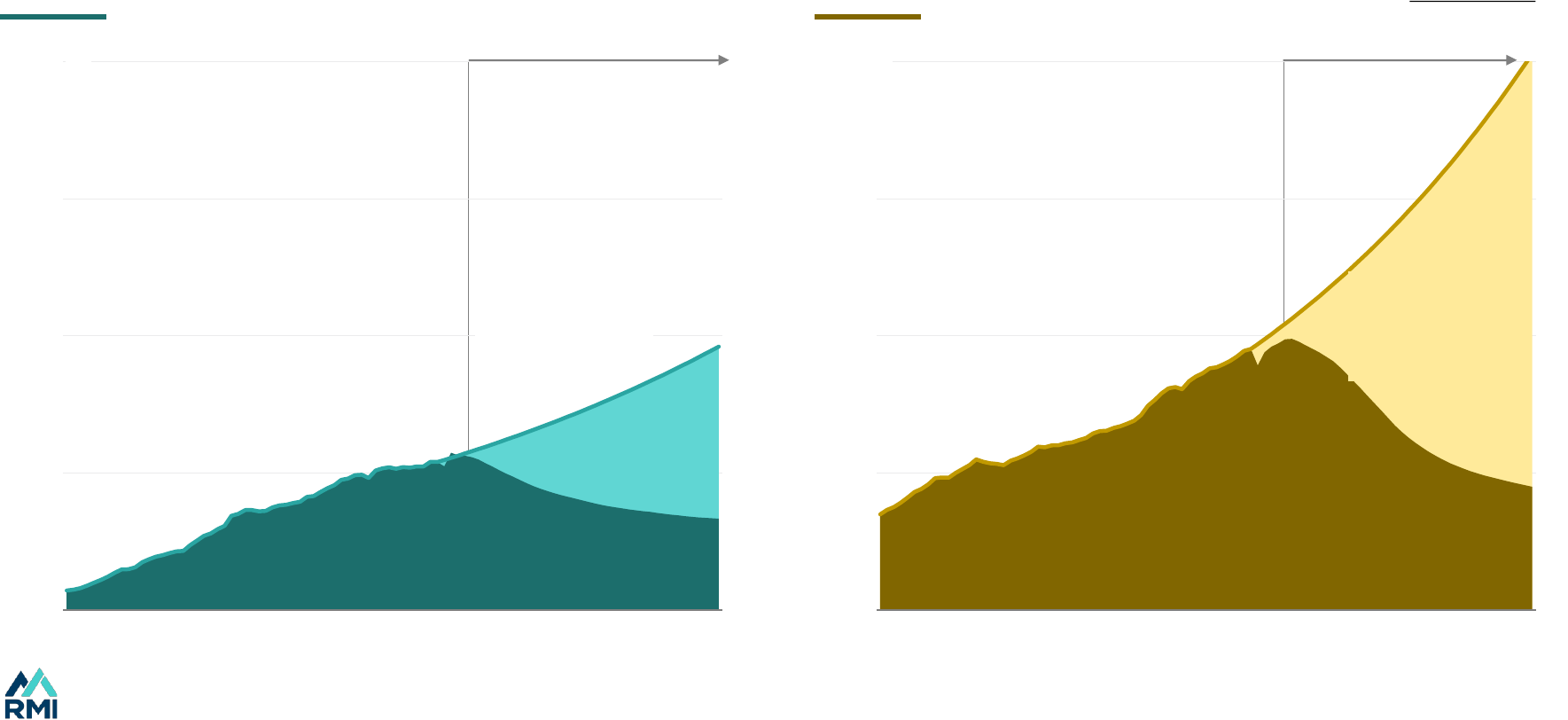
70
We are at peak waste
Source: Rystad Energy 1.6 °C Scenario.
0
100
200
300
400
1965 1975 1985 1995 2005 2015 2025 2035 2045 2055
Solar/wind
Energy waste from electricity
Trend line
(No transition)
0
100
200
300
400
1965 1975 1985 1995 2005 2015 2025 2035 2045 2055
Electrification
& more efficient
equipment
Trend line
(No transition)
Energy waste from equipment
Outlook
So we can massively reduce the strains of the energy system on nature
Solar & wind reduces losses from generation
Electrification reduces end-use losses
Outlook
EJ EJ
ILLUSTRATIVE

71
The required growth in investment is achievable, and reallocation from fossil to cleantech is well underway
We are halfway through a Great Capital Reallocation
Source: IEA, RMI. For more see The Great Reallocation: Capital expenditure on energy production.
0
500
1,000
1,500
2,000
2,500
3,000
2000 2005 2010 2015 2020 2025 2030
CAGR 9%
CAGR 2%
0%
10%
20%
30%
40%
50%
60%
70%
80%
90%
100%
2000 2005 2010 2015 2020 2025 2030
Outlook
Total investment in primary energy supply Share of total investment
Outlook
$ billion
Cleantech
Fossil
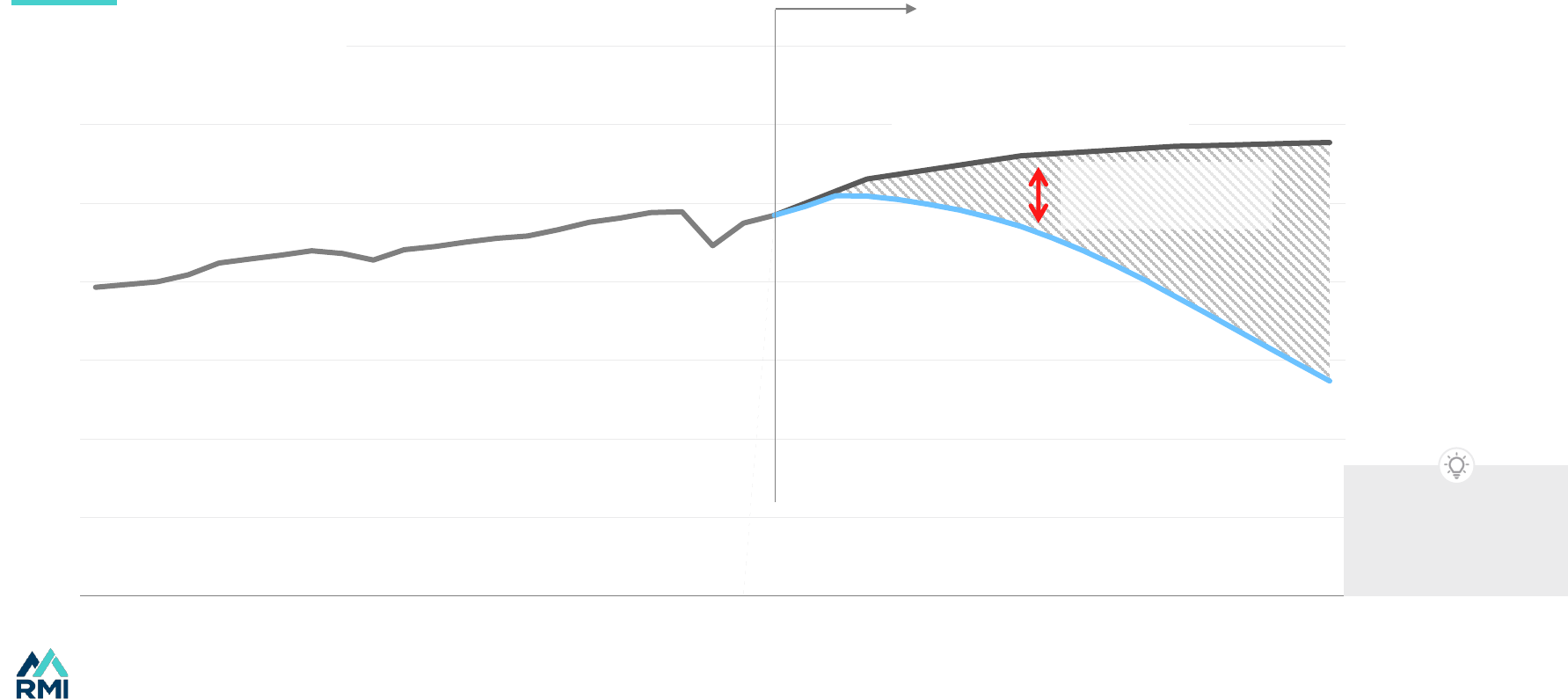
72
Assets get stranded at the top of the market, and disruption is driven by price changes
The fossil fuel system faces trillions in stranded assets
Source: Rystad Energy, OPEC, RMI.
0
20
40
60
80
100
120
140
2000 2010 2020 2030 2040
Rystad 1.6°C
OPEC Outlook
Stranded
assets
Incumbent expectations
The reality of a rapid
technology transition
Price shock from
overcapacity
Oil demand
million barrels per day
The fossil fuel system
has around $50 trillion
of fixed assets and is the
largest in the world
Outlook
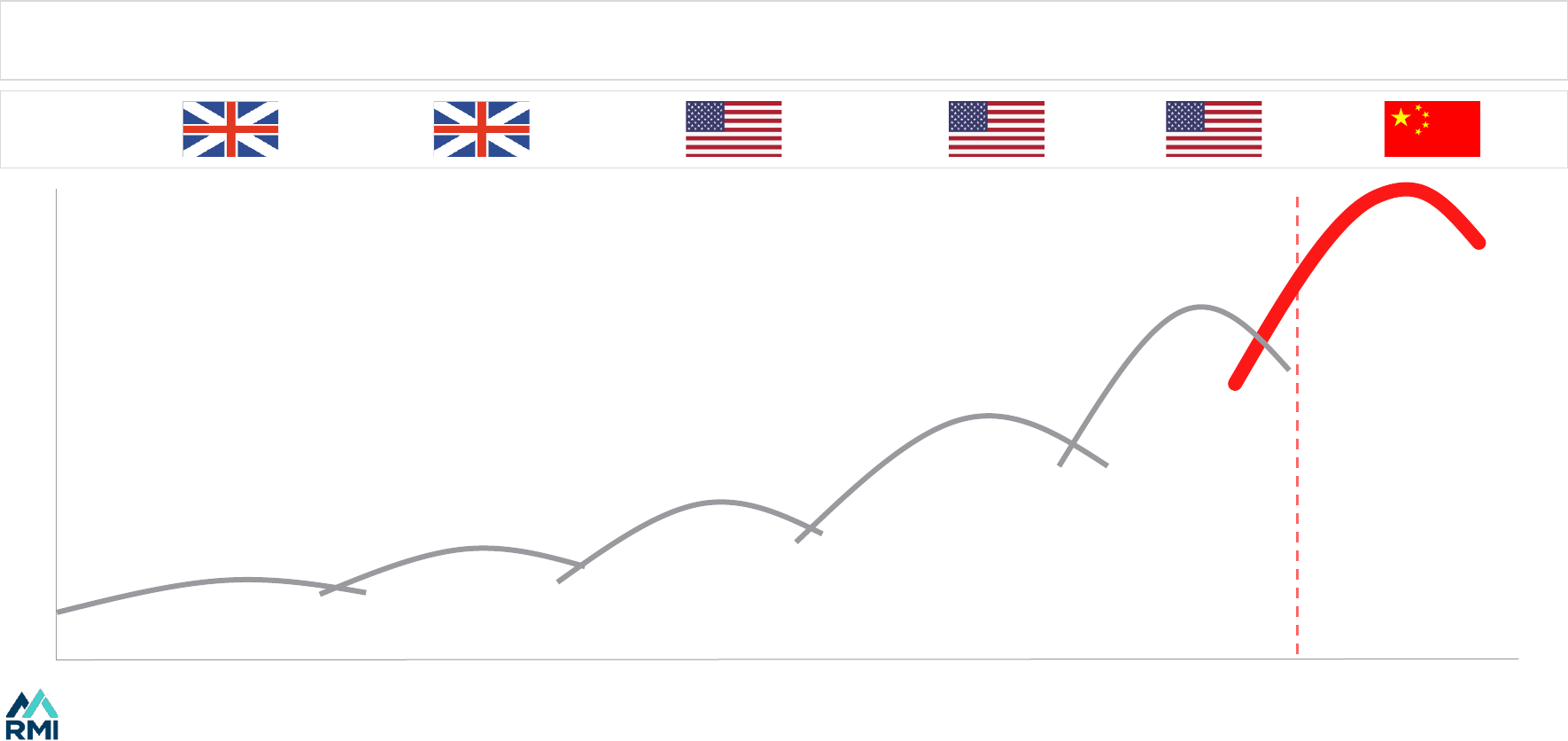
73
China is leading this technology revolution, and others need to catch up or fall behind
We need to change our framework of reference to China
Source: Carlota Perez (first five), RMI (renewable age).
Transition
Industrial
Revolution
Age of Steam
& Rail
Age of Steel
& Electricity
Age of Oil &
Mass production
Information
Age
The Renewable
Age
2020
Innovations
Iron
Waterpower
Mechanization
Steam engines
Steam power
Rail
Electricity
Steel
Heavy engineering
Mass-produced
automobiles
Cheap oil
Petrochem
Information
technologies
Telecomms
Software
Renewable energy
Electrification
Resource efficiency
1
st
wave
2
nd
wave
3
rd
wave
4
th
wave
5
th
wave
6
th
wave
1800
1900
Led by

74
When the facts change, people change their minds. Repricing follows.
The debate will be very different in 2030
Source: RMI.
2015 2024 2030Area
Expensive Cheap Super cheapCost of renewables
Niche Moderate IntenseSocietal pressure for change
Toy for the rich A second car for the rich A cheaper car for allEVs
Grid can’t take 20% Grid can’t take 70% Leaders enjoy cheap energyRenewables
<1% of world has targets 90% of world has targets 90% of world has plansNet zero
Growth Plateau DeclineGlobal fossil fuel demand
CCS Lots of technological solutions Lots of commercial solutionsHard-to-solve areas
Climate makes good speeches Renewables nice to have Renewables a key tool of powerGeopolitics
ESG Carbon offsetting Minsky MomentFinancial markets
Greenwash Green premium Green prizeCorporations
China pollutes too much China makes too many climate solutions China and United States competeUnited States vs. China

75
75
• This is the pivot decade when cleantech manufacturing capacity is built,
renewables get too cheap to resist, and fossil fuel demand reaches the end of its
plateau.
• Focus on the signal not the noise. We need to prepare for change, not hide behind
denial.
• We need to continue building out the renewable system, speed up electrification in
the OECD, and increase focus on efficiency.
• We should make good bets on solutions that work: small modular technologies
and efficiency measures. Equally, we need to avoid high-cost, inefficient, and
unproven bets.
• Companies need to move from tactics to strategy.
• Investors should retool for the megatheme of the energy transition.
• Energy modelers need to change their approach or become stranded experts.
• And we need to get on with it. We are in a race between climate and economic
tipping points. The direction is inevitable, but speed is up to us.
Index
What we need to do now
7
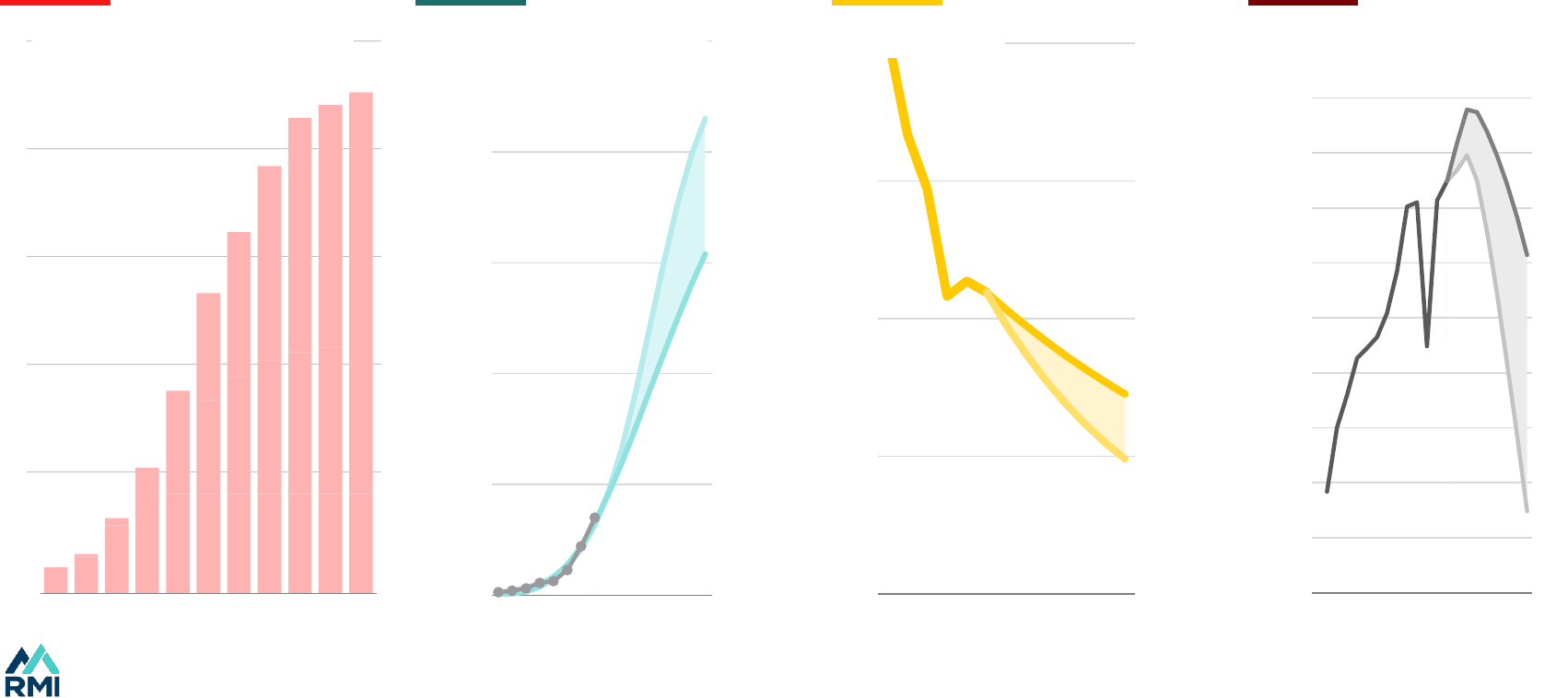
76
420
430
440
450
460
470
480
490
500
510
520
2010 2015 2020 2025 2030
0%
20%
40%
60%
80%
100%
2015 2020 2025 2030
Sources: BNEF, RMI, Rystad Energy.
0
20
40
60
80
2018 2022 2026 2030
0
12
3
6
9
15
2020 2022 2024 2026 2028 2030
TWh manufacturing capacity
Manufacturing capacity is
built: Batteries
Cleantech goes up the steep
part of the S-curve: EV
Renewables get too cheap to
resist: Solar
Fossil fuel demand enters
terminal decline
EJ fossil fuel demand$/MWh LCOEEV share of car sales
Faster
Fast
Fast
Faster
Fast
Faster
You snooze, you lose
The 2020s are the pivot decade
100%
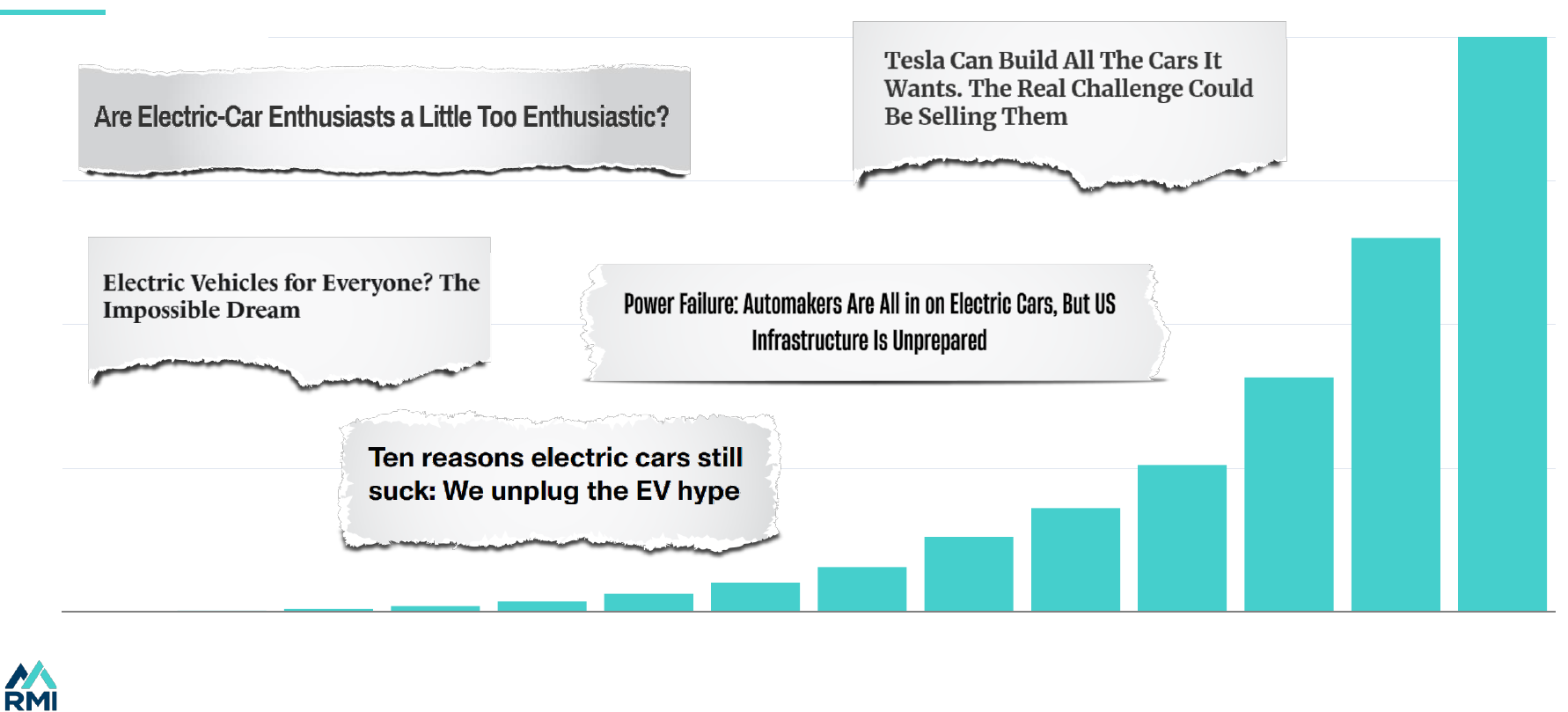
77
There are always barriers to change. Those who solve them get rich.
Focus on the signal not the noise
Media headlines are centered around their year of publication.
Sources: IEA ,CNET, Time, Forbes, InsideHook, Manhattan Institute.
0
10
20
30
40
2010 2015 2020
million EVs (fleet)
EV adoption versus headlines
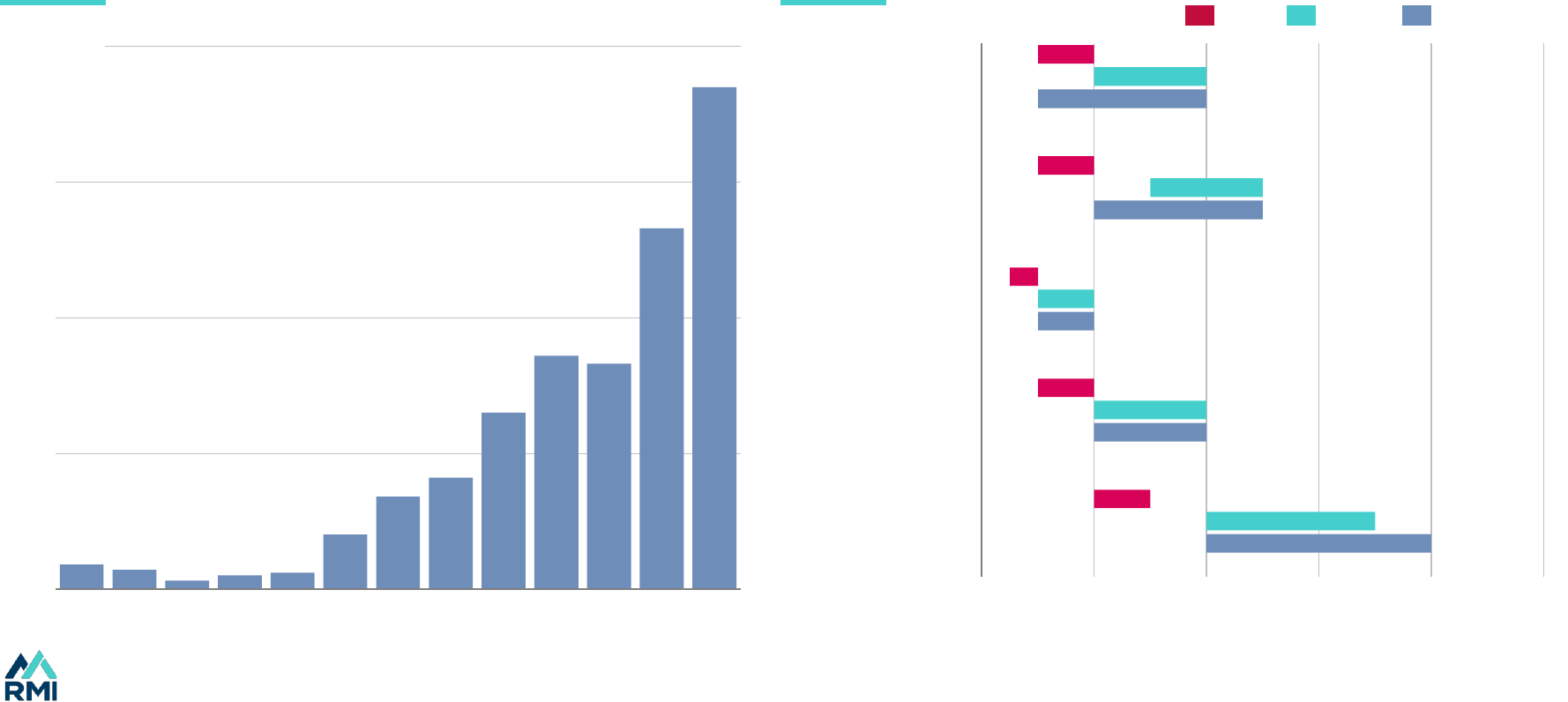
78
If you want to stay in the game, you need to deploy renewables and electrify end-use demand, and fast
Build, baby, build…
Source: IEA.
0
50
100
150
200
2010 2012 2014 2016 2018 2020 2022
0 2 4 6 8 10
High voltage line
Distribution line
Car charging hub
Onshore wind
Utility solar PV
China Europe United States
Connection queue growth in United States Typical deployment time
GW
Years
Utility-solar PV
High-voltage line
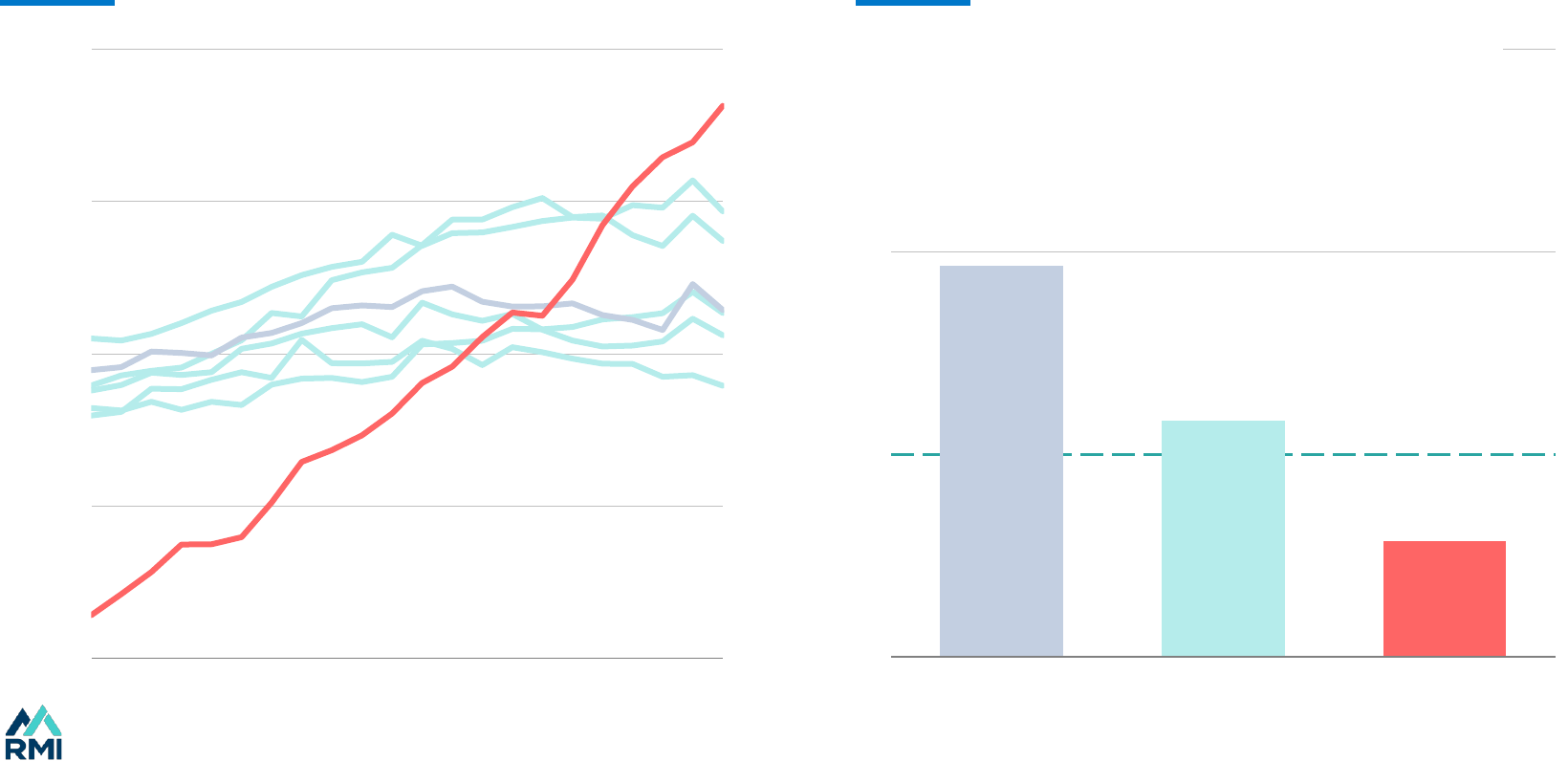
79
Redesign electricity markets to pass the low cost of renewables onto industry and households
Speed up electrification in the OECD
Source: IEA WEB, IEA, RMI. Note: assuming a 40% efficiency of natural gas for a fairer comparison between the two energy carriers.
10%
15%
20%
25%
30%
2010 2010 2020
France
Spain
US
Italy
UK
Germany
China
0
1
2
3
US Western Europe China
In the US & Europe,
natural gas is
cheaper than
electricity
In China,
electricity is
cheaper than gas
Electricity share of final energy Electricity multiple of natural gas prices in 2023
times higher electricity vs. efficiency-adjusted gas price
Price parity

80
Focus on modular technologies with steep learning curves; avoid expensive and hard-to-deploy technologies
Make good bets on the technologies of the future
Source: Adapted from Malhotra and Schmidt, “Accelerating Low-Carbon Innovation.”
Need for customization
Degree of
design
complexity
Platform-based complex
product systems
e.g., Small modular reactors,
carbon capture & storage
Complex product systems
e.g., Nuclear power plants, BECCS
Mass-produced complex products
e.g., Electric vehicles
Platform-based complex products
e.g., Wind turbines, concentrating
solar power, standardized asset
retrofits
Complex-customized products
e.g., Biomass power plants,
geothermal power
Mass-customized products
e.g., Rooftop solar PV
Standardized complex
product systems
e.g., Combined-cycle gas turbine
power plants
Mass-produced products
e.g., Solar PV modules, batteries
Small-batch products
e.g., Bespoke asset retrofits
Mass-customizedStandardized Customized
Complex
Design-
intensive
Simple
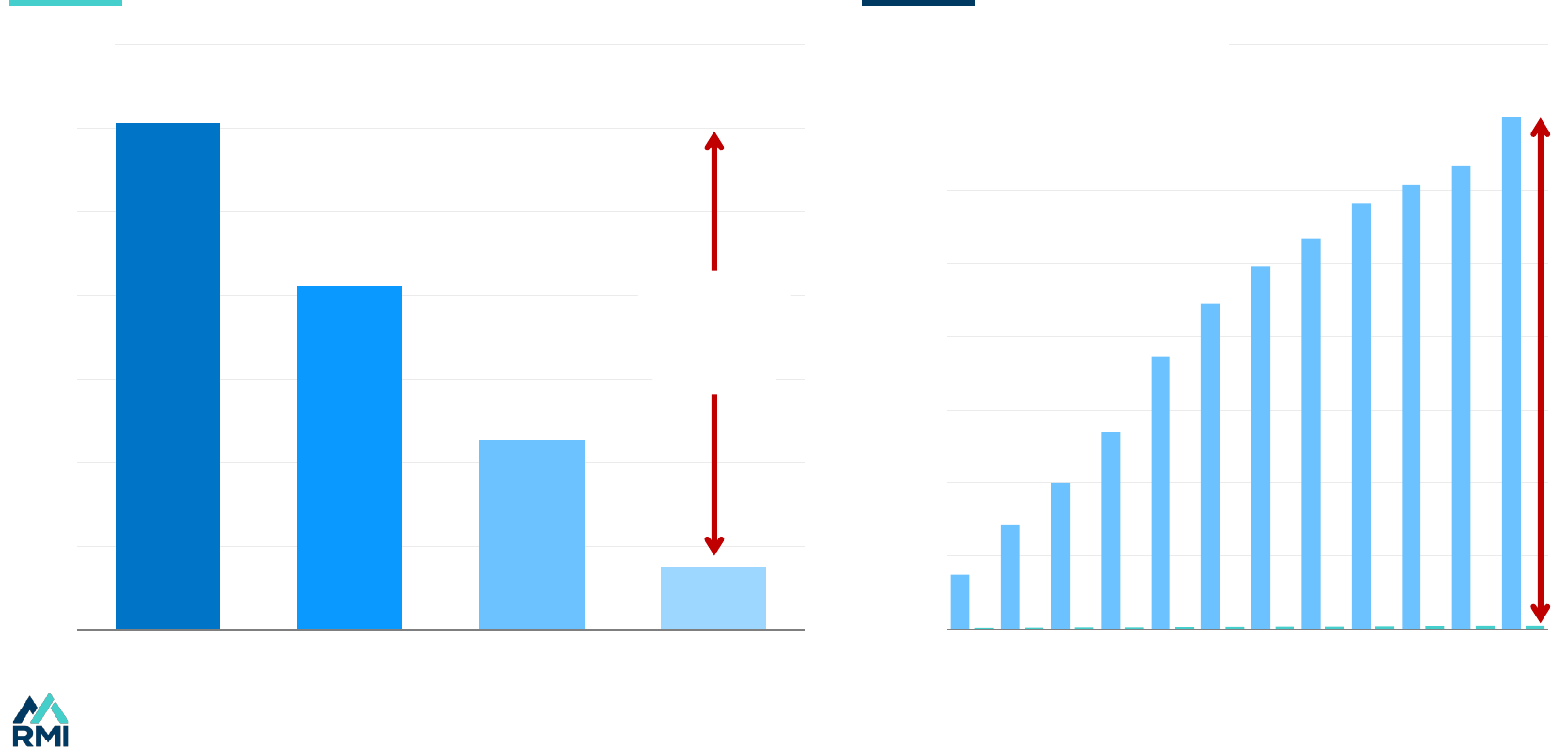
81
0
1,000
2,000
3,000
4,000
5,000
6,000
7,000
8,000
2011 2013 2015 2017 2019 2021
0
100
200
300
400
500
600
700
Primary energy Final energy Useful energy Value added
Harvest the vast fields of efficiency
Source: IEA, IIASA, RMI assumptions, Amory Lovins.
The efficiency
opportunity
is huge
EJ million tons CO
2
per year
Emissions avoided by efficiency, in contextEnergy demand from primary energy to value added 2019
The efficiency potential is huge, and proven
Efficiency
CCS
The
efficiency
opportunity
is already
delivering

82
The energy transition is not a box-ticking exercise
Companies: time to move from tactics to strategy
Source: RMI.
Future What to doType
Decline of core products Reinvention; rundownFossil fuel producers
Need to find a new energy source Retool for the new energy sourceHeavy fossil fuel users
Company types and actions
Rapid growth, rapid innovation Innovate and expandRenewable companies
A brave new world of opportunities Solve barriers and get richEntrepreneurs
A new environment Rethink areas of focusOthers

83
Finance: Retool investment strategies
Source: RMI.
The energy transition is a megatheme, like the industrialization of China or the growth of the internet
Allocate capital to
sectors with growth
Exit sectors in
decline. Or trade the
volatility on the way
down
Go long-short winners
and losers from
change. Disruption is
coming, so separate
reality from lip service
Pick winners. The
Gartner hype curve is
the standard tool
Beware of fossil
Minsky moments the
coming decade
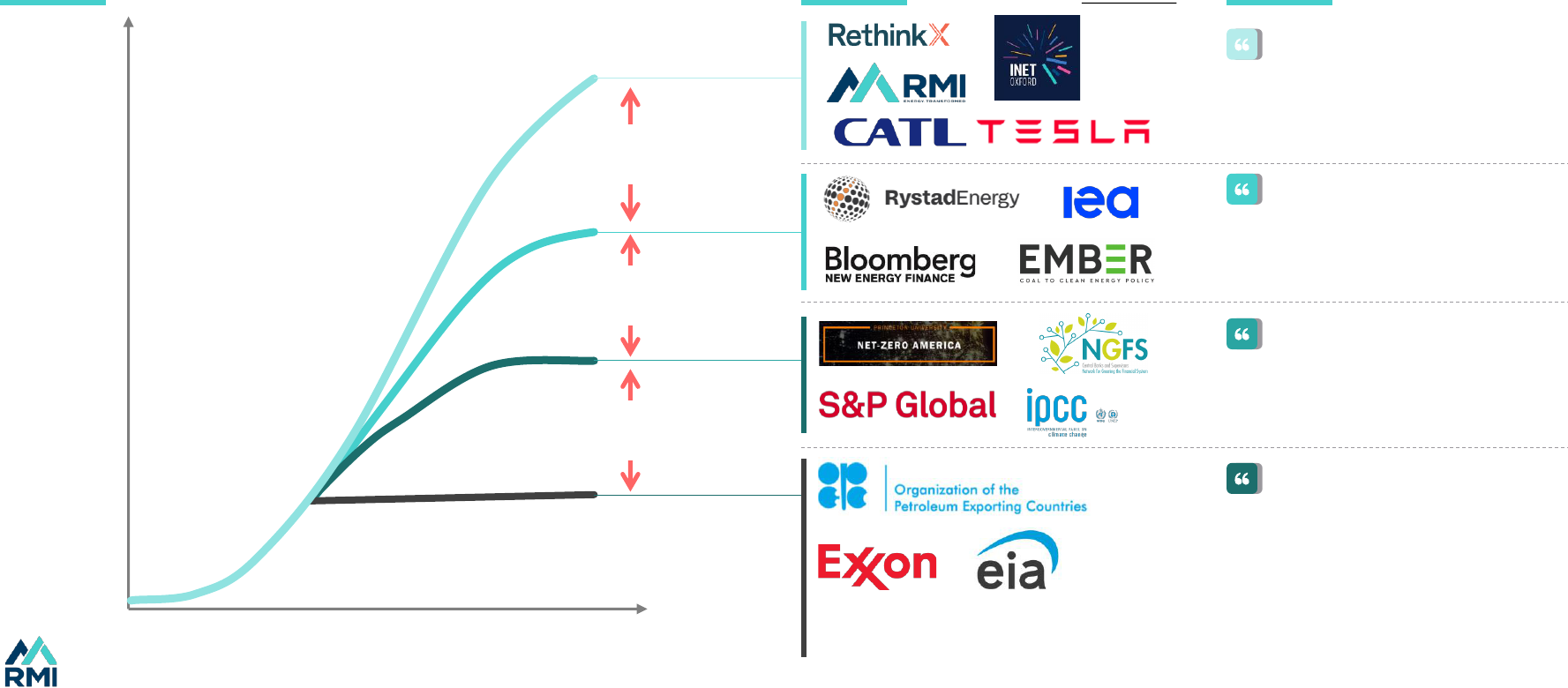
84
Adjust energy models to capture reality
Source: RMI.
Annual
renewable
sales
2023 2030
Tomorrow’s
debate
Today’s
debate
Yesterday’s
debate
Incumbent modelers need to up their game or become stranded experts
Annual renewable deployment concept chart Who is where?
A new energy paradigm
Renewables are the future
Change is difficult, but we
should try and do this
..and the many tied banks and
consultants
Green idealists are naïve; the
world needs our fossils
The group
Illustrative
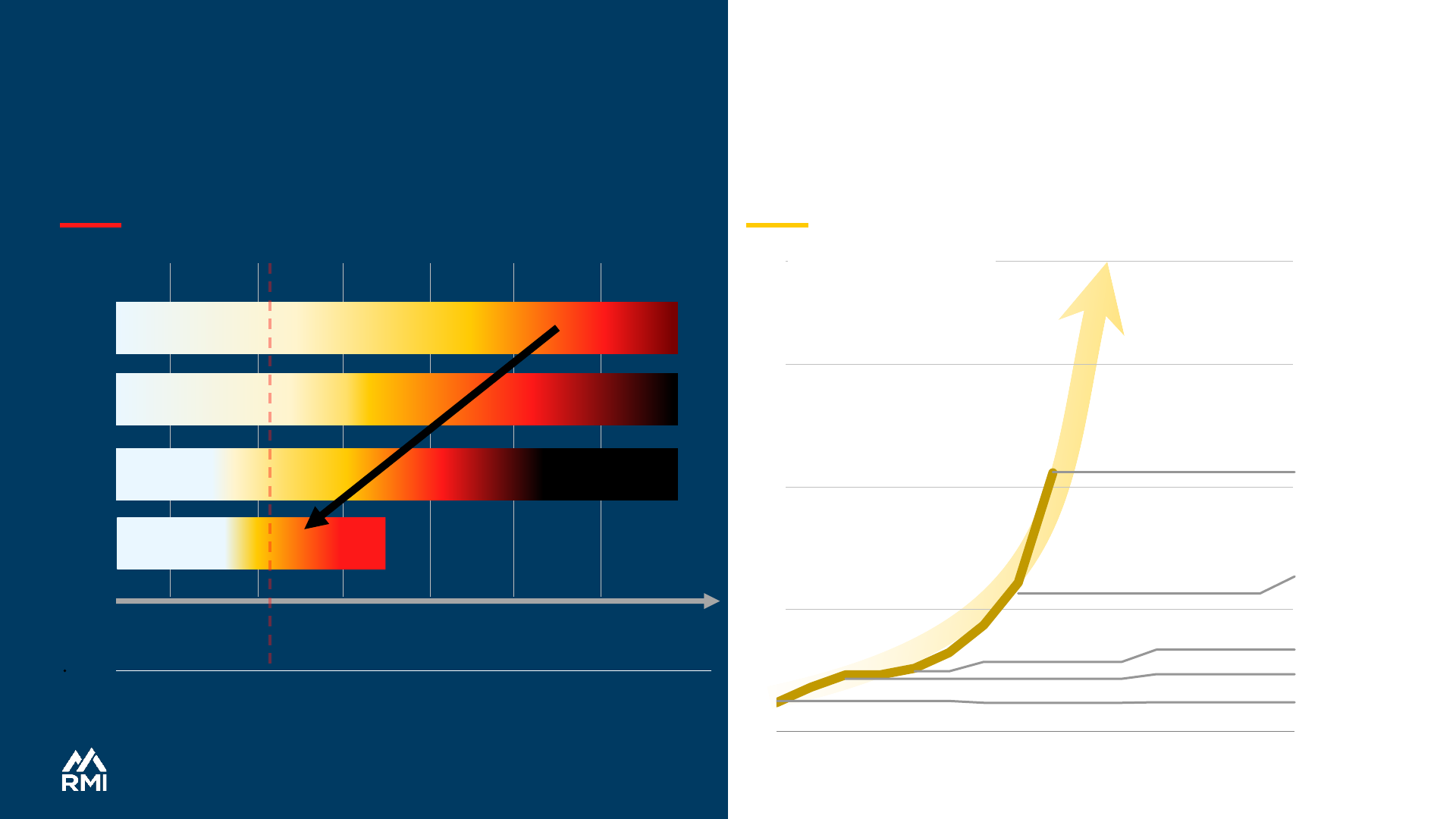
8585
On the one hand, climate tipping points are coming
faster than expected…
We are in a race between climate and economic tipping points
Source: Lenton et al based on IPCC reports
Actual solar additions vs. consensus outlooks
…on the other hand, climate solutions are scaling
faster than most analysts thought possible.
2001
2007
2013
2019
Climate tipping points
1.1°C
(2020)
Undetectable Low
0 1 2 3 4 5
°C
Past
Future?
High Very High
2015 2020 2025 2030
0
200
400
600
800
WEO 2016
WEO 2018
WEO 2020
WEO 2022
WEO2023
Actual
GW of annual additions
S-curve trend
Forecasts
Source: IEA STEPS, BNEF actuals
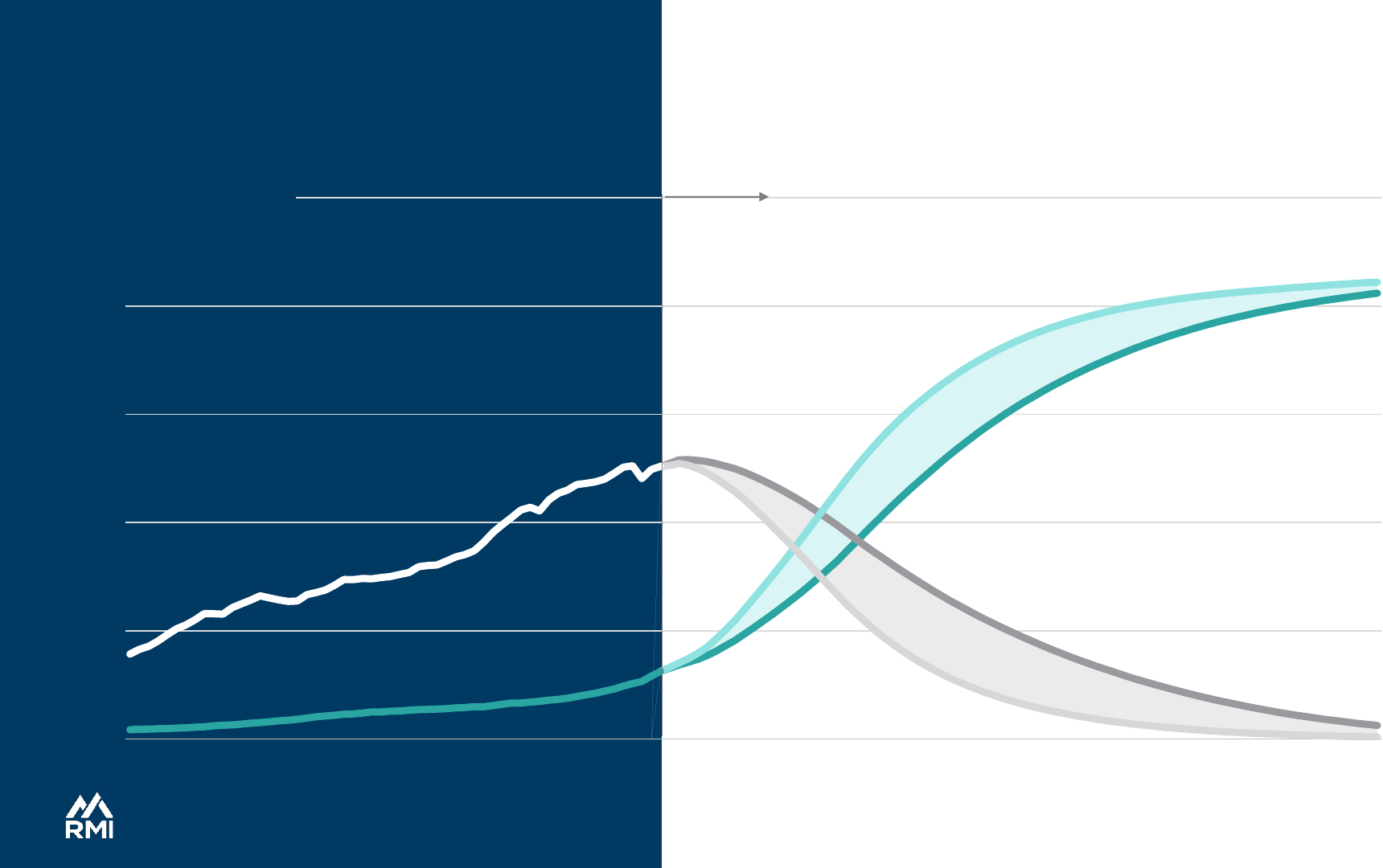
86
There is both inevitability and agency. As time is short there is every reason to act.
Direction is inevitable, but speed is up to us
Source: Rystad Energy scenarios (1.6°C Faster, 1.8°C Fast).
0
100
200
300
400
500
Faster
Fast
Fast
Faster
Clean
Fossil fuels
Outlook
EJ useful energy
2030 2040 2050 2060 2070 2080 2090 2100202020102000199019801970

RMI is an independent nonprofit, founded in 1982 as Rocky Mountain Institute, that transforms global energy systems through market-driven solutions
to align with a 1.5°C future and secure a clean, prosperous, zero-carbon future for all. We work in the world’s most critical geographies and engage
businesses, policymakers, communities, and NGOs to identify and scale energy system interventions that will cut climate pollution at least 50 percent
by 2030. RMI has offices in Basalt and Boulder, Colorado; New York City; Oakland, California; Washington, D.C.; Abuja, Nigeria; and Beijing.
Kingsmill Bond, [email protected]
Sam Butler-Sloss, sb[email protected]
Daan Walter, [email protected]
Sign up to our distribution list
RMI – The World Re-Energized
RMI – The Peaking Series
Authors
About RMI
Related
Acknowledgments
With thanks to: Amory Lovins, Hannah Ritchie, Joseph Zacune, Will Atkinson, Chiara Gulli, Laurens Speelman, Ita Kettleborough, and Harry Benham.

